Francesca and Henk-Jan's Backpacking Trip!
Thursday, July 8, 2010
Shanghai Shenanigans
Henk and I arrived in Shanghai on the 5th of July a bit later than expected. While we were in the plane (already seated) the attendants informed us that because of the bad weather we would be delayed… for almost 3 hours! I was a bit frustrated because we hadn’t eaten much before the flight, believing that we would be able to get something after we landed, so Henk made sure we got some special treatment with unlimited snacks of peanuts and bread rolls! Anyways, we landed in Shanghai and pulled out our address book to figure out how to go to P & J’s (Patricia & John) – an American expat couple – place. Since we weren’t at the airport with the Maglev Bullet Train (aww!) we had to take the regular train instead, getting to their building around 6 PM.
Upon arriving we met Patricia who showed us our comfortable new room and talked to us for a while before she needed to head to her school. On the way out she pointed out a Mexican restaurant for us to check out. The place was colorful but the portion sizes ended up being too small for us (we were starving post-flight with no food!) – luckily (after a quick stop at the convenience store to pick up a chocolate bar) when we got back to the apartment and met John, the two of them offered to share some of their Chinese food with us. Yum! We spent the rest of the evening learning about the Chinese/Korean school system and general Chinese culture from P&J. Since they have lived in China for more than 6 years now, they had a ton of experiences to share and were a wealth of interesting information. Some of the things they told us:
- About Chinasmack.com (an interesting website that translates Chinese people’s comments on various stories into English so we can see what they think about events/other Chinese people)
- Chinese people have made a transition from thinking of themselves as a ‘we’ people to currently a ‘me’ people and they don’t really have a nationalistic sense that detracts from their selfish ‘me/my family first’ attitude… they try to gather as much as they can for themselves instead.
- That many Chinese people will think they know what you need better than you, as a customer, do; for example, they know if you should dye your hair, eyebrows and what color… not you!
- How the Korean mothers try extremely hard to ‘steer’ their children in the ‘right’ direction school-wise by assigning them extra homework if they believe the school isn’t giving enough (this could be for example to memorize 40+ English words a day additional.)
- Yet at the same time how Korean children do very poorly on tests because they work so hard to ‘study’ for exams that they don’t end up actually learning much that is practical or that they will remember… in fact, the children sleep during classes because they are so focused on only studying for the special exams.
- Principals of these schools (and teachers) understand Korean parents only focus on how much ‘work’ their children have as an indication of how ‘good’ the school is. Since the schools are a business and the faculty wants the students to stay enrolled they ‘pretend’ (or actually do in some cases) to assign the kids tons more work than they can possibly handle.
On the 6th of July we set out to begin our exploration of Shanghai by taking the train to East Nanjing. First we bought a ham and cheese sandwich in the Subway because we were so hungry, but shortly after we found a Subway with sandwiches! (Much better.) After Subway sandwiches (turkey breast for Henk and chicken teriyaki and Lays Italian Red Meat chips for me which were actually pretty good,) the first thing on the agenda was a visit to ‘The Bund’ – the long strip of interesting heritage architecture that made up the ‘early Shanghai foreign-business district.’ This includes beautifully dramatic old banks, hotels, private clubs, and more. Our China Lonely Planet happened to have a ‘walk’ of the Bund (kinda a self tour) in it which we took advantage of and followed. The walk led us first to the former Richards Hotel, established in the Qing Dynasty. This hotel is now known as the ‘Astor House Hotel’ and has long been considered one of the best in China. Many celebrities of the past have stayed in the Astor House – including Albert Einstein and Ulysses Grant. Across from the Astor to the front is the Russian Consulate and to the east is the 1930’s apartment block construction ‘Broadway Mansions.’ After walking in and out of these buildings (and picking up about 1000 brochures from volunteers about the Shanghai Expo) we eventually made our way across the Waibaidu Bridge.
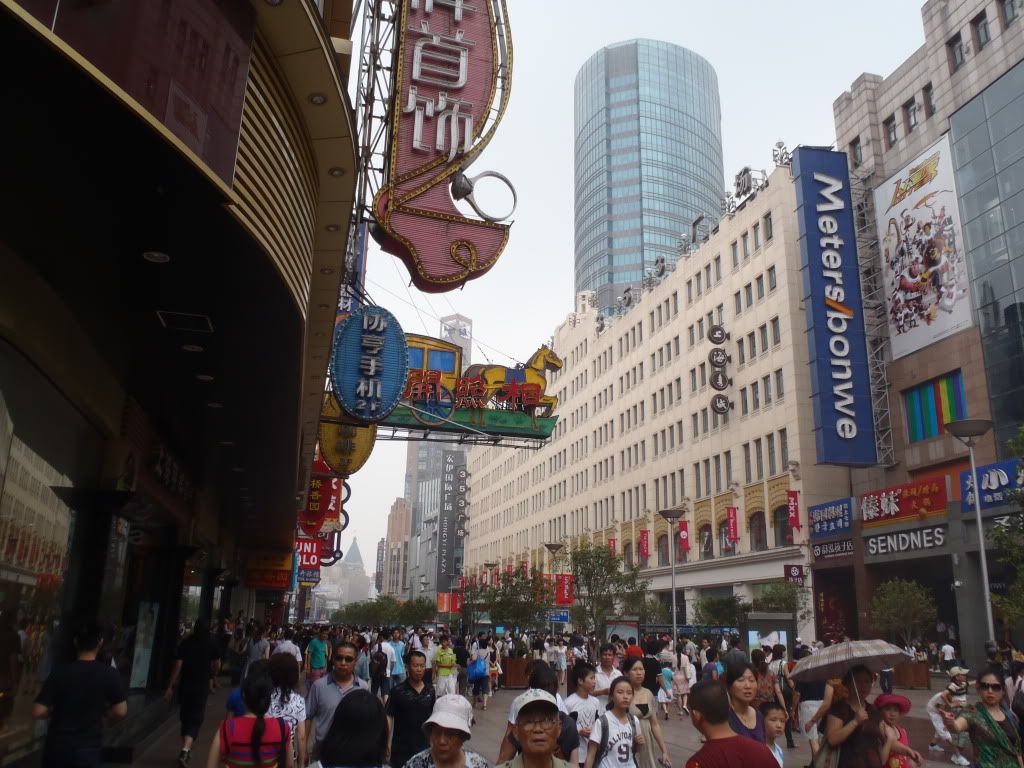
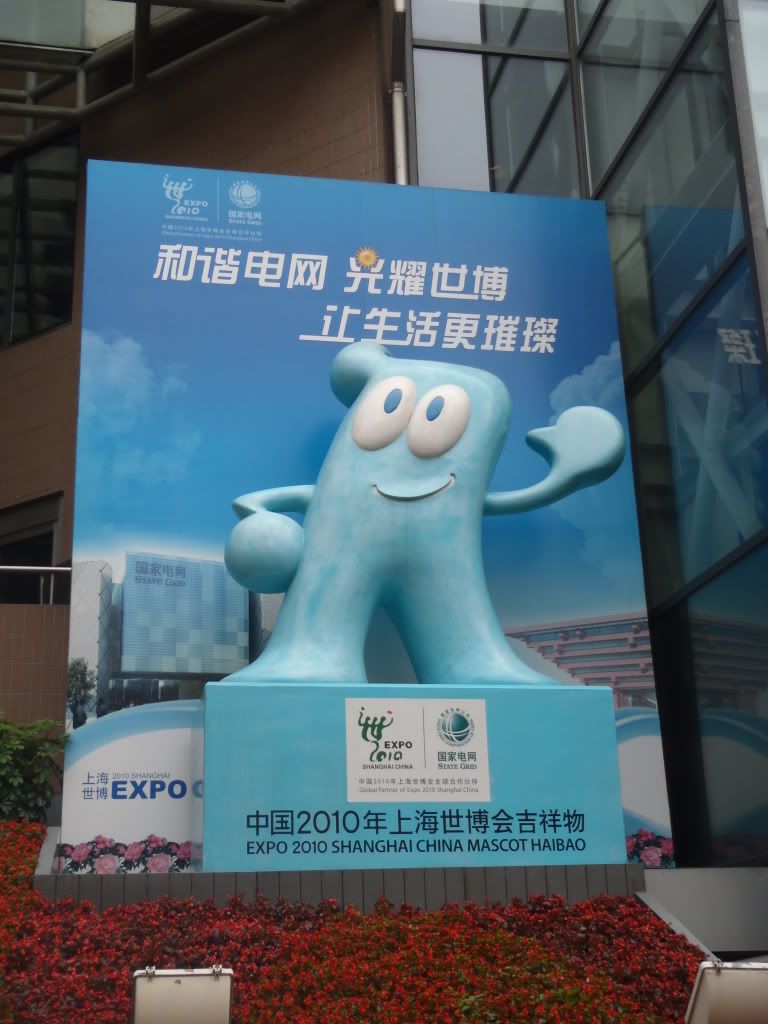
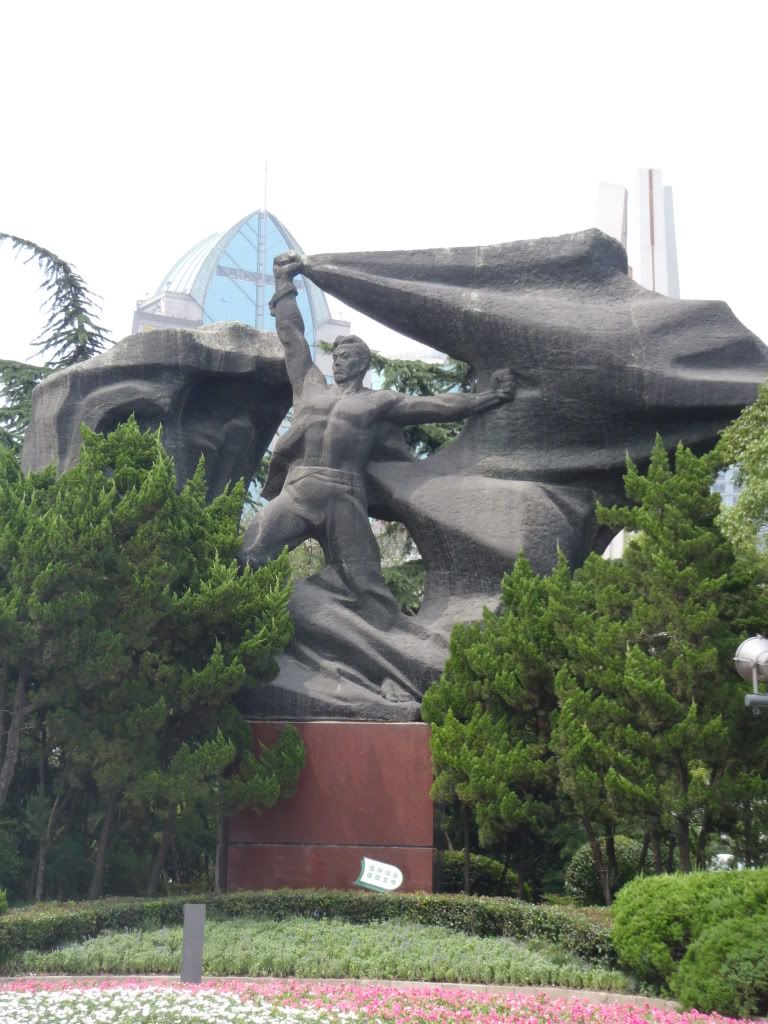
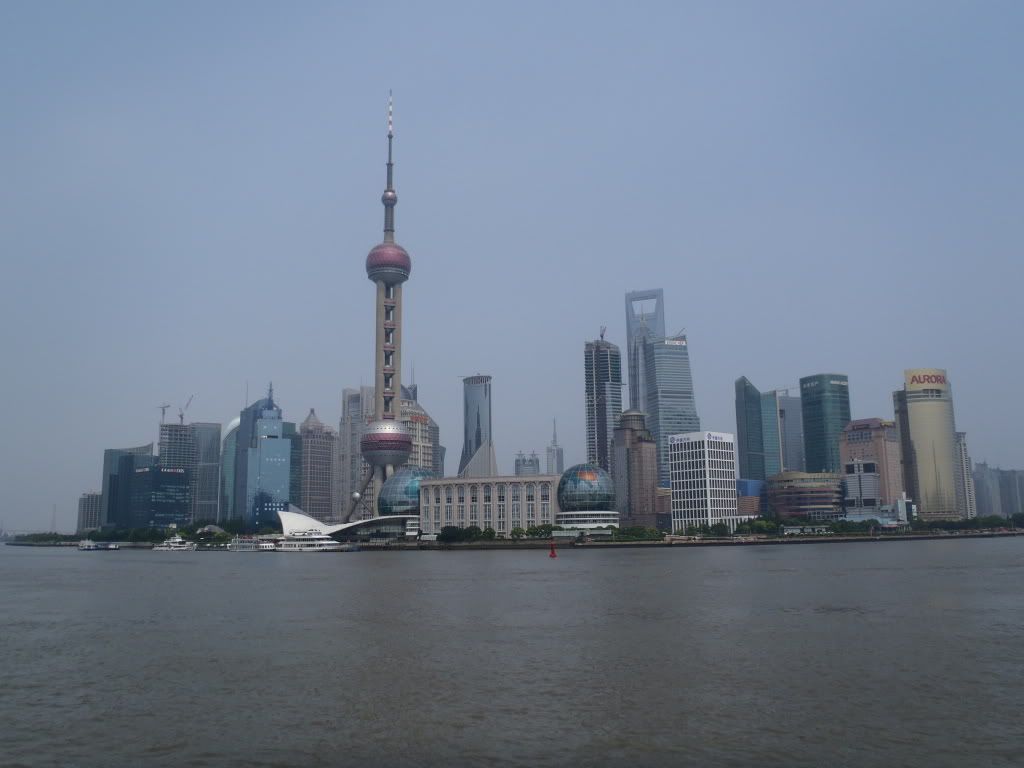
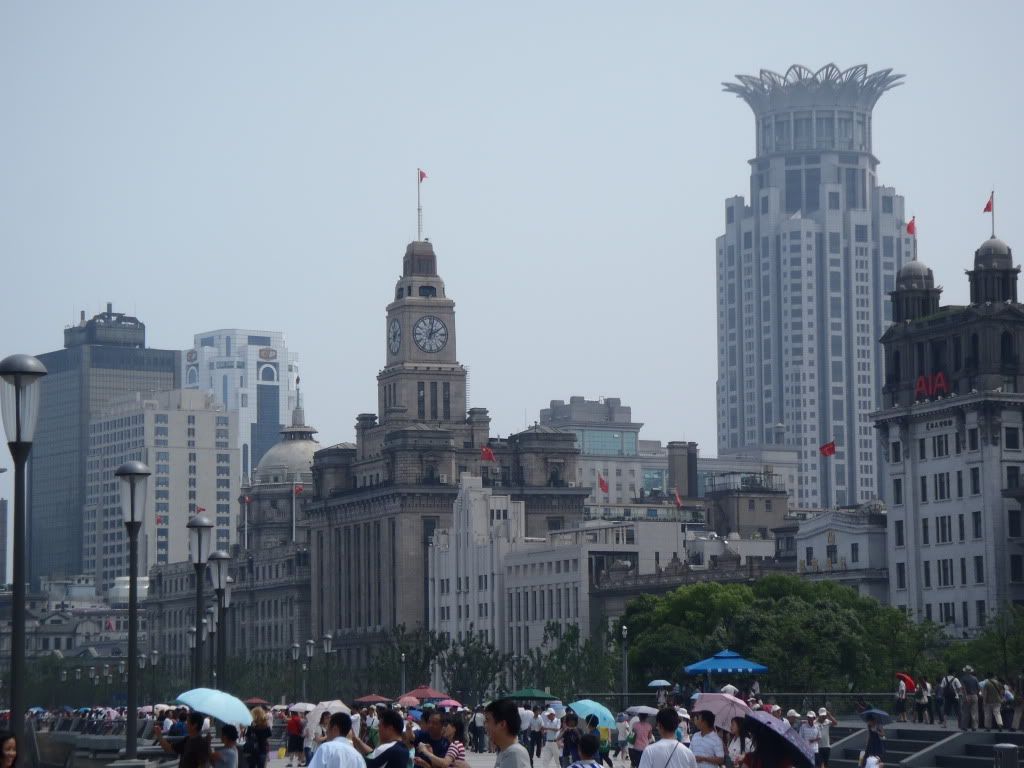
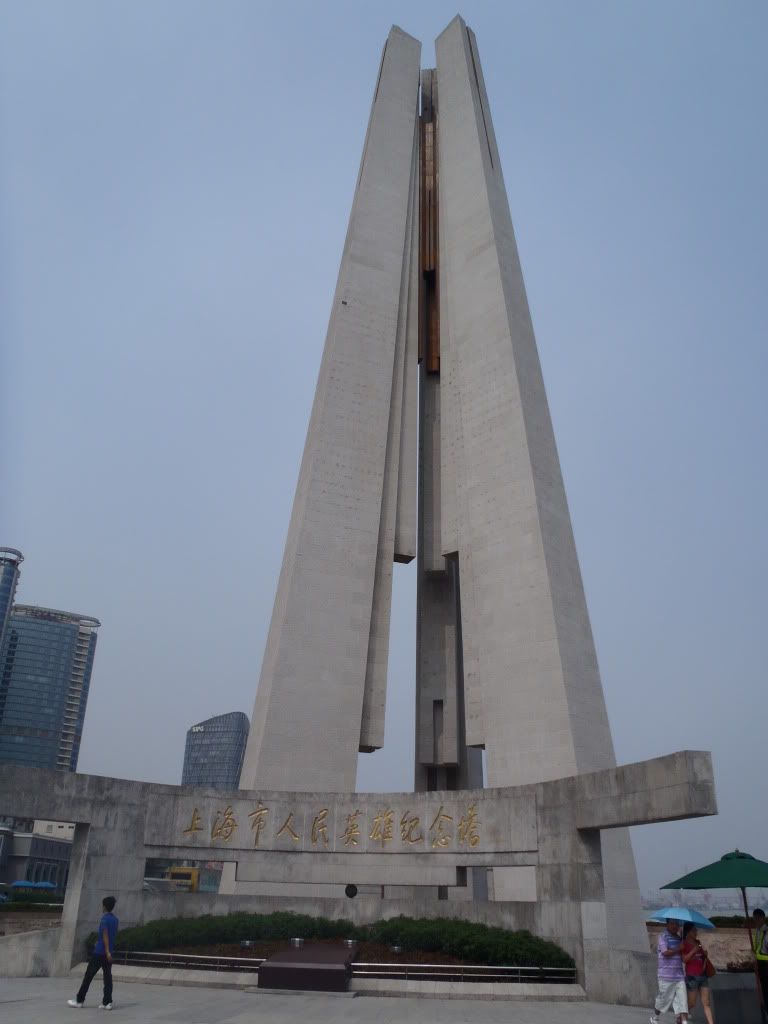
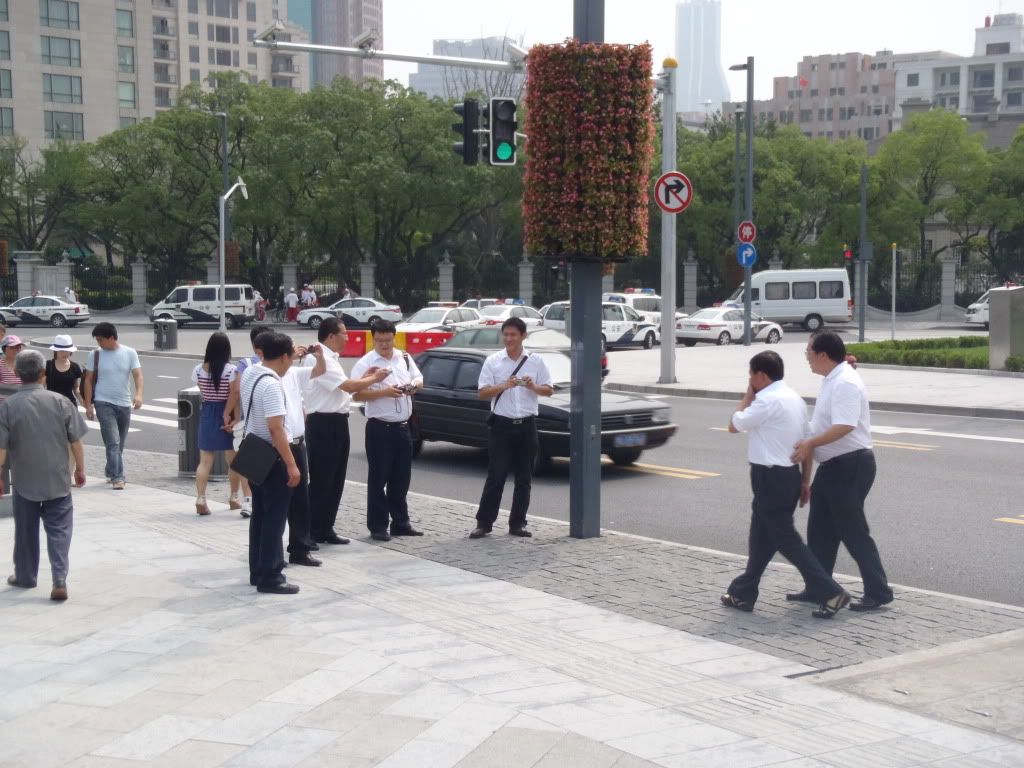
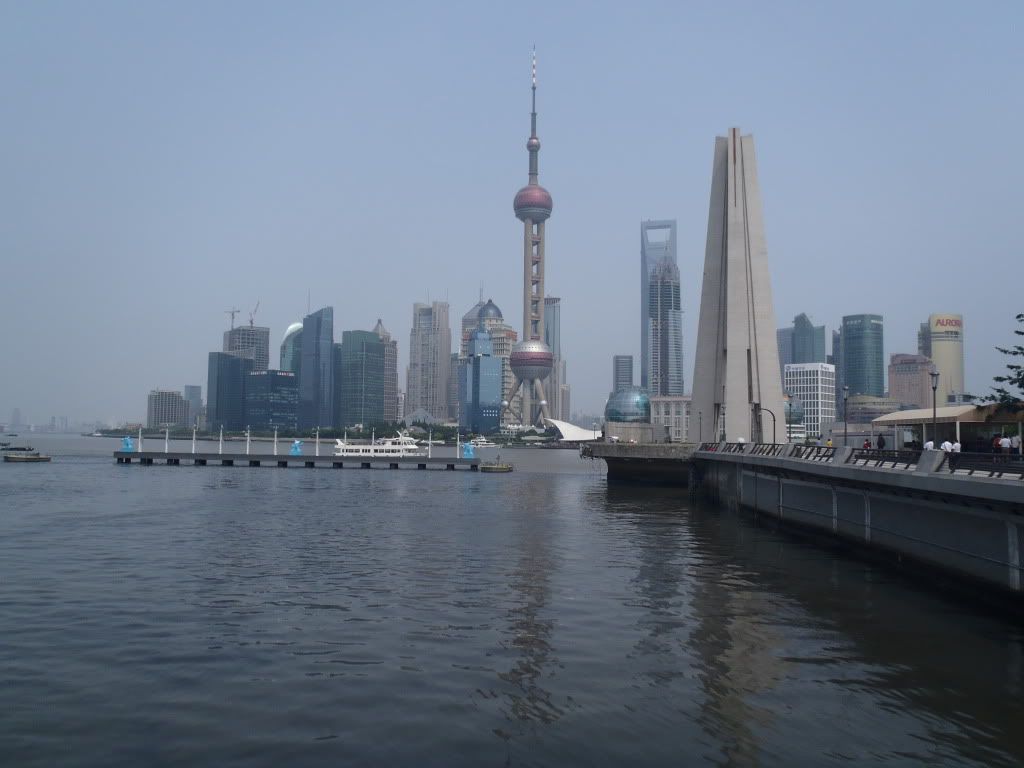
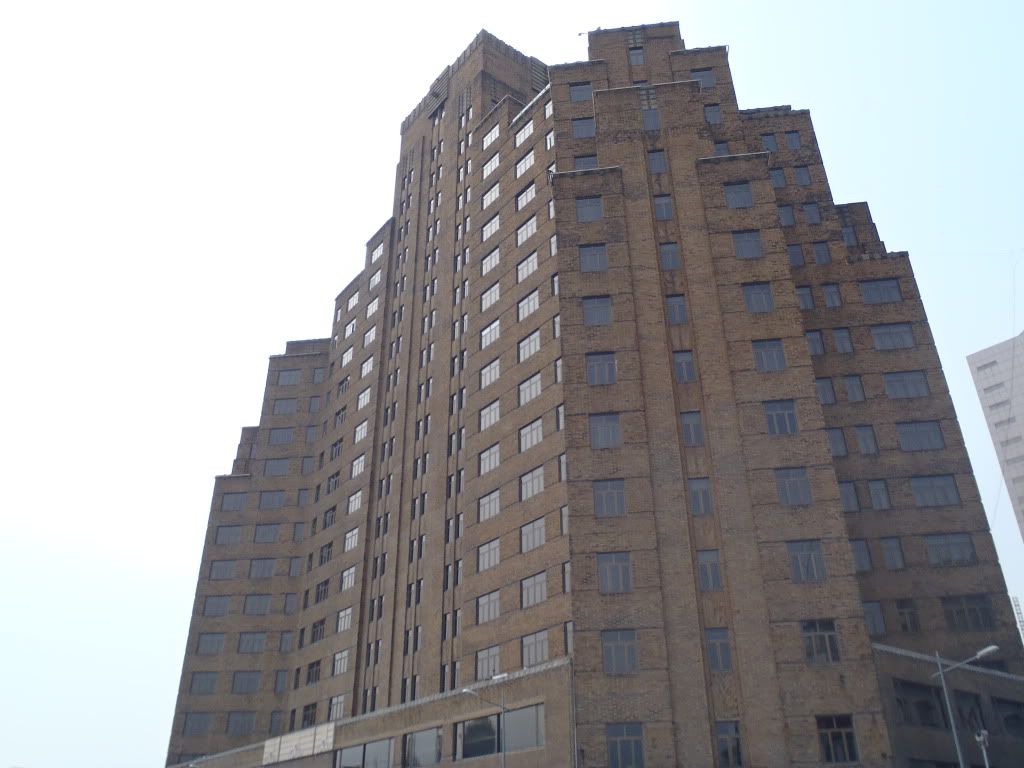
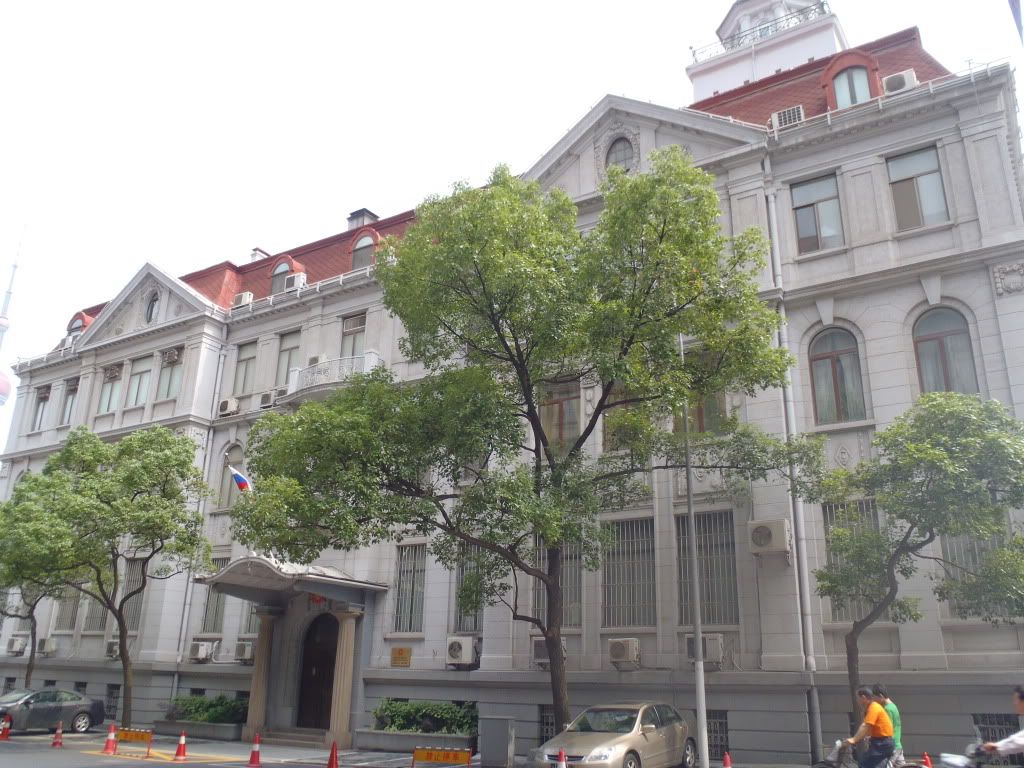
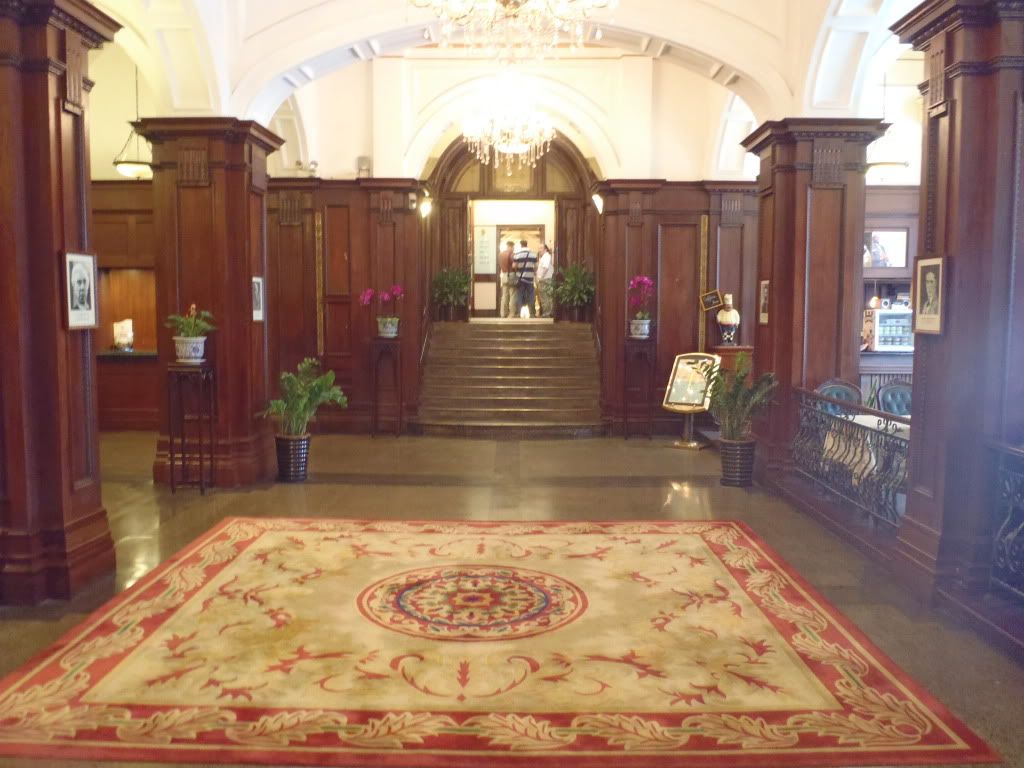
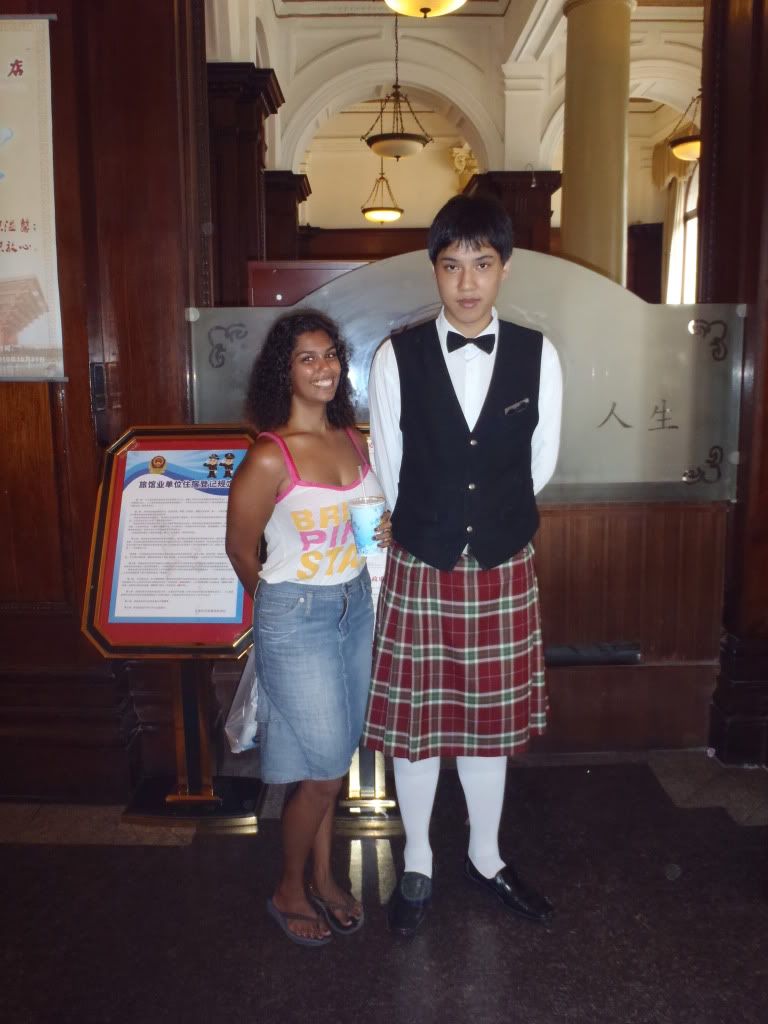
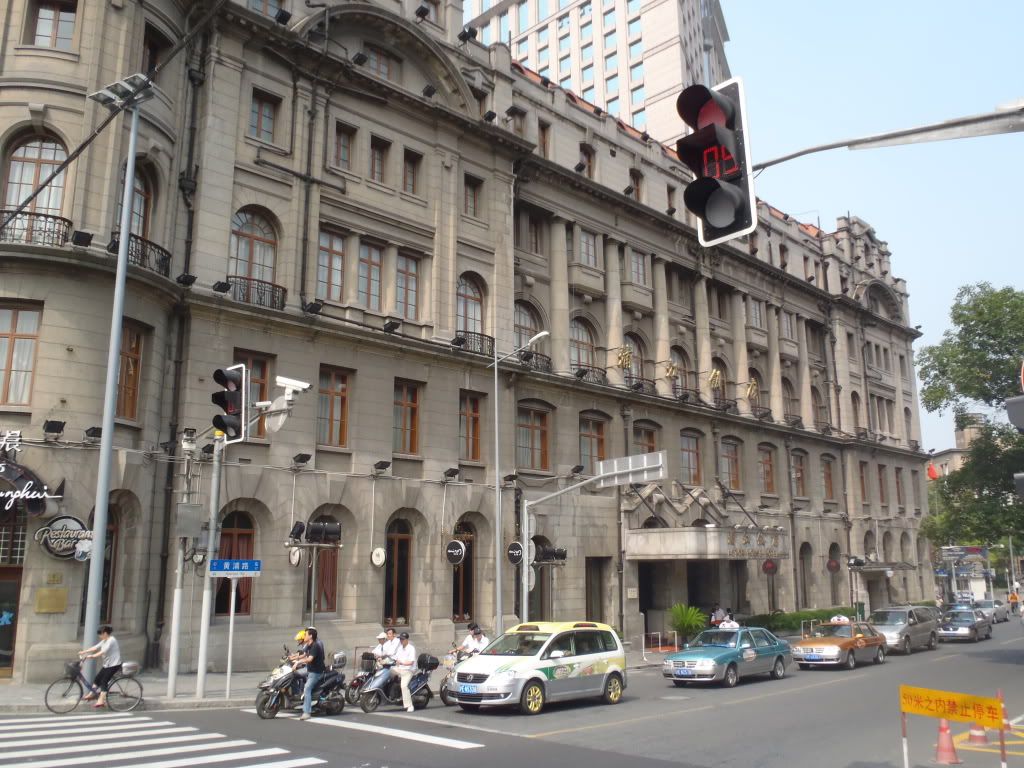
The bridge led us into Huangpu Park, where we noticed some sort of military ceremony going on. It looked like they were practicing for a presentation! We snapped a few pictures then left, unsure if we were supposed to even be in the area. Instead, Henk and I ducked around to the Monument to the People’s Heroes. We walked around it but found the museum inside to be closed and decided to keep moving. After looking at the former opium traders’ headquarters and the former British Consulate we found a street filled with water (it was under reconstruction or something) and Henk tried to push me in! But he didn’t succeed. That street we explored looked like something straight out of central London – quite an interesting sight in Shanghai! While walking on it, Henk and I noticed a little alleyway with a sign pointing for some art museum. We were curious and went to find out what was inside.
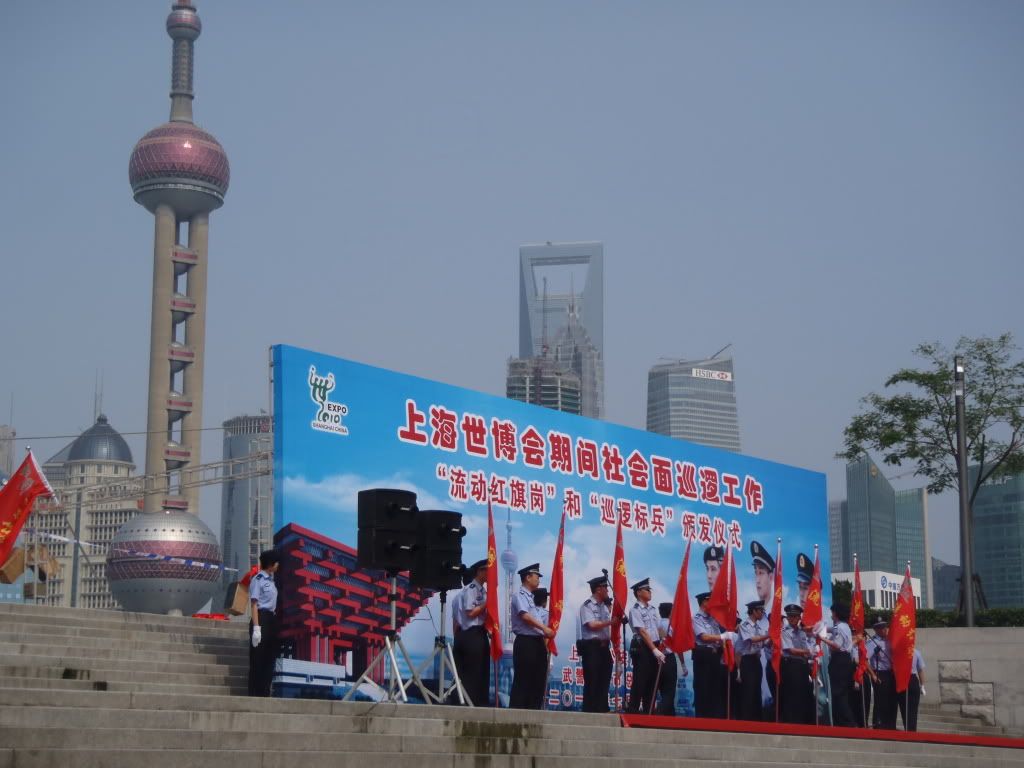
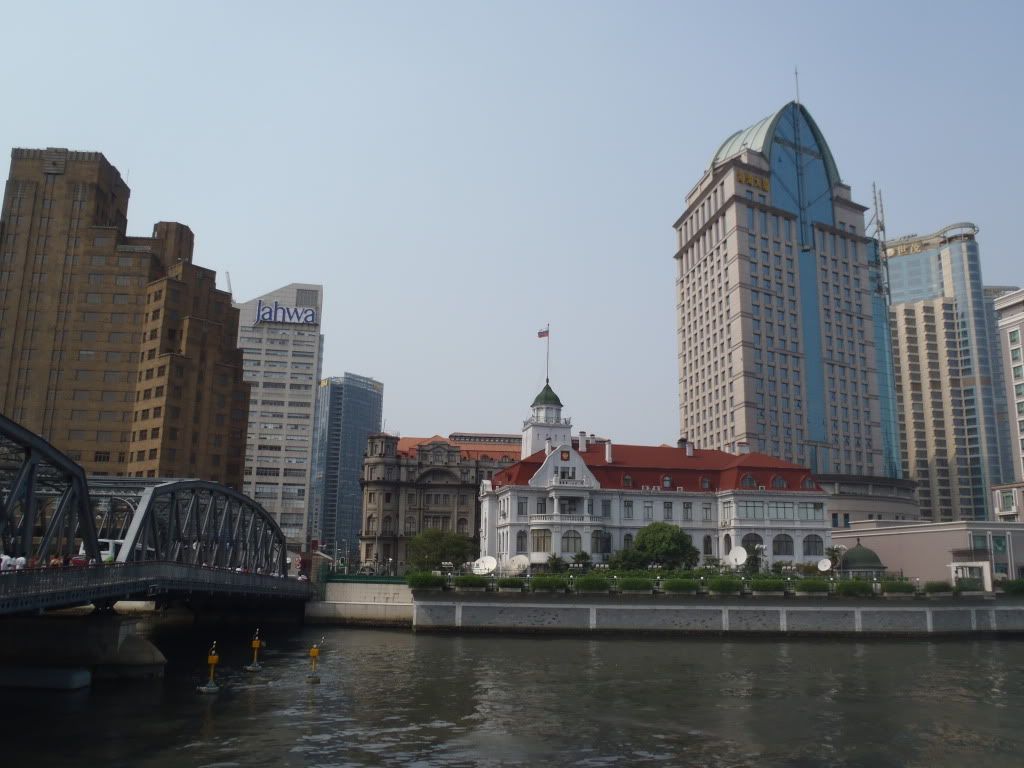
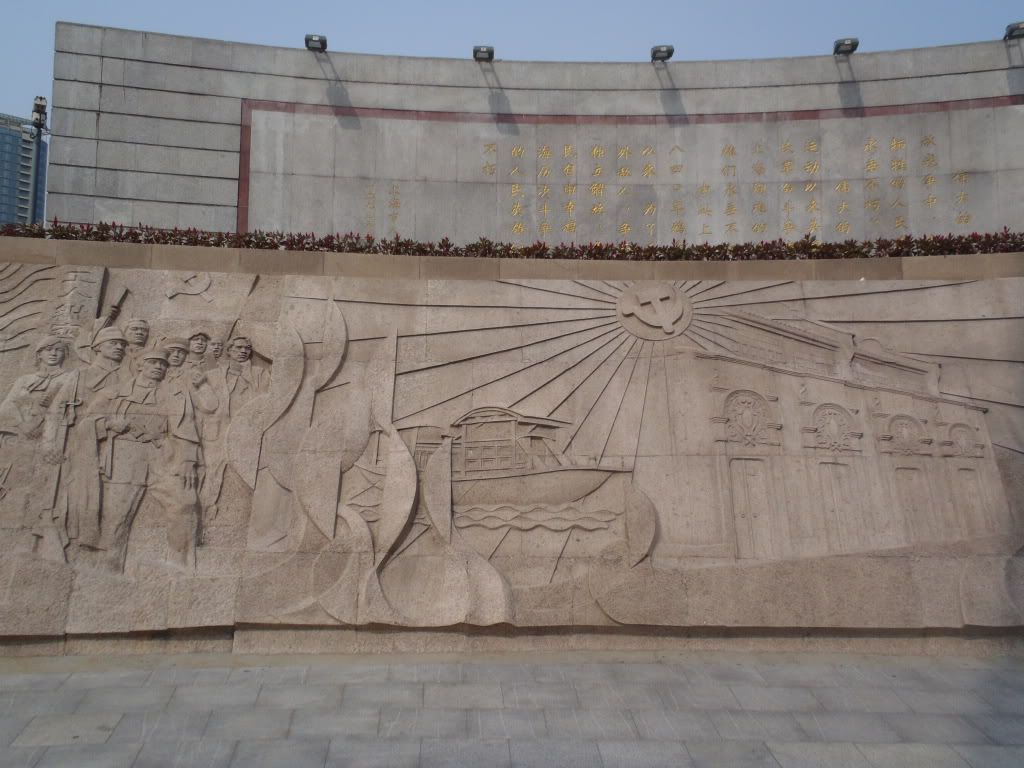
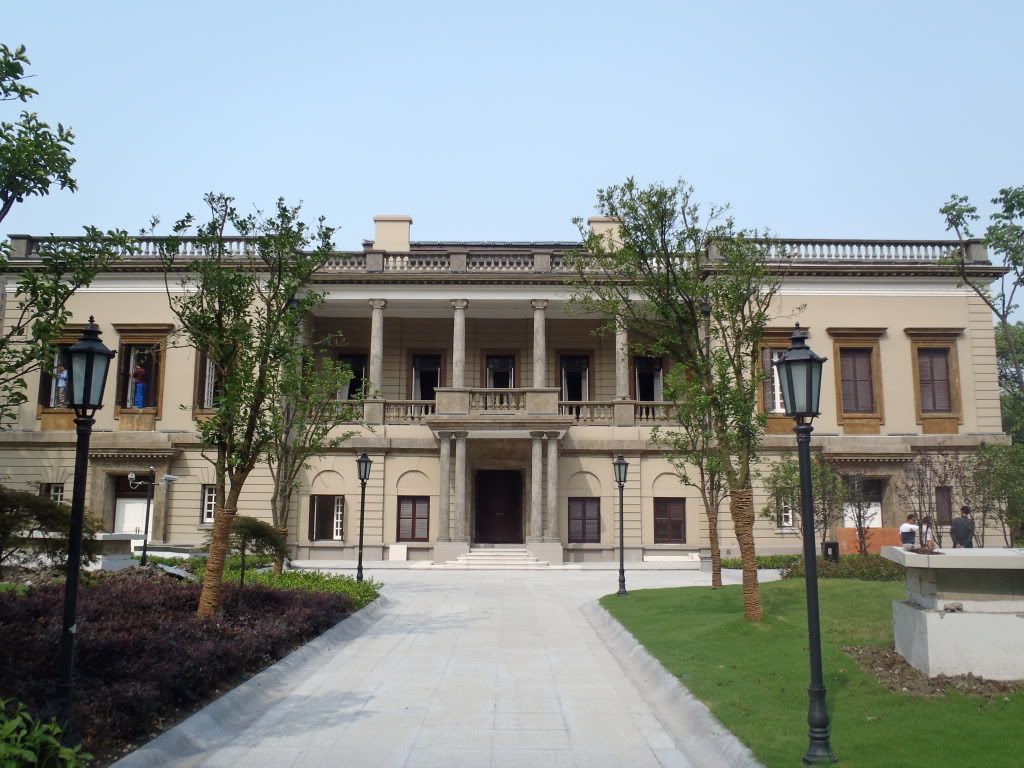
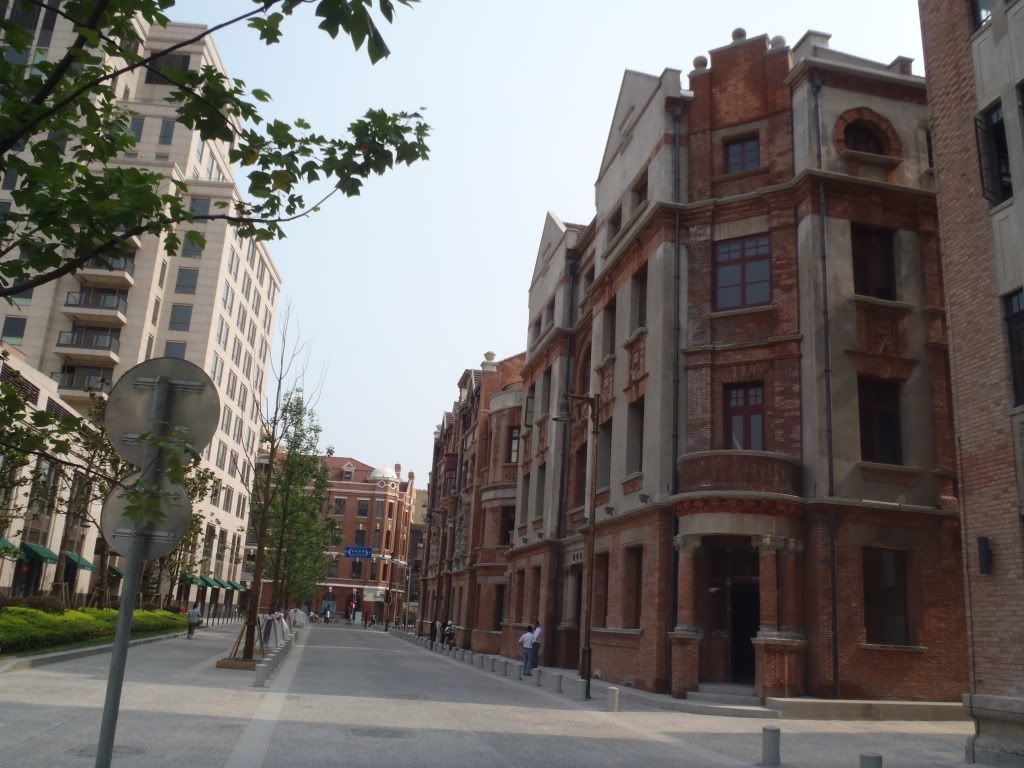
Turned out it was the Rockbund Art Museum – a contemporary art gallery – which currently had a bunch of ‘mechanical art’ on display. There were various metal flying contraptions with birds flying in and around them as well as robots ‘painting’ their own art. We sat down to have a drink (they only had overpriced sparkling water but that had to do because Shanghai is sweltering!) and looked at some of the strange art. The coolest room was one filled wholly of screens displaying the artists (or other inventors/artists) making flying machines. We filled out a survey on the way out (more detailed captions!!) and received little metal light-up pins as free gifts. Yay for free gifts!! (And more stuff to carry…)
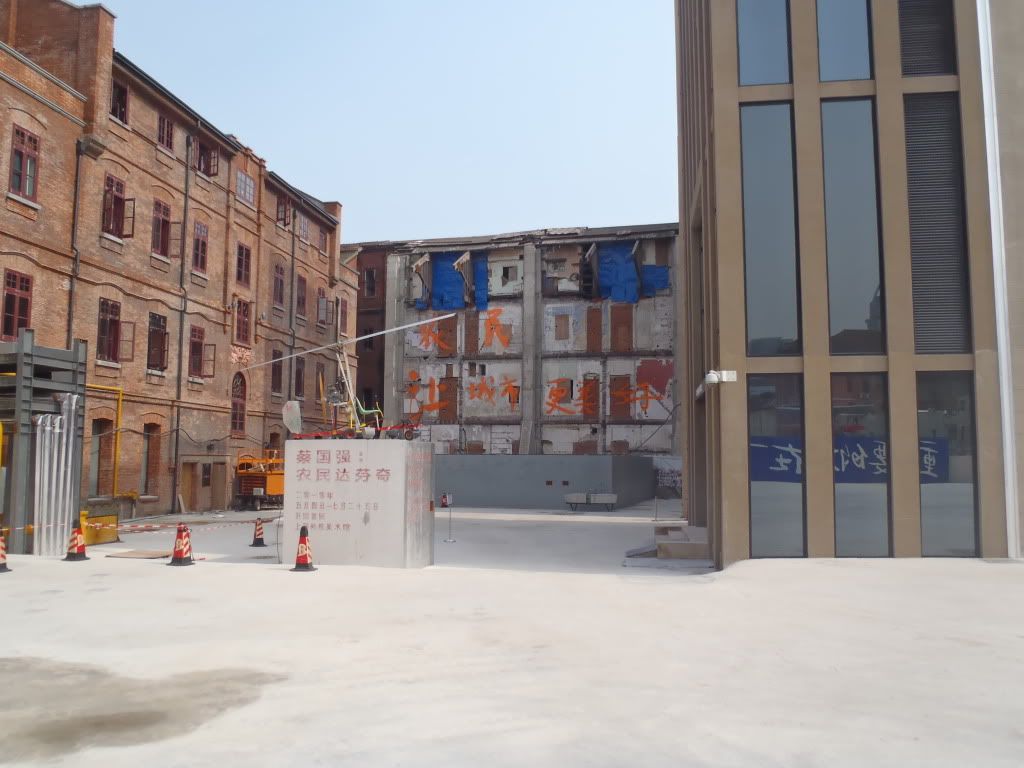
We interrupt this story for an important side note!! NOTICE: Throughout the day we were consistently (every 20 minutes or so) photographed or had someone approach us to either ask us for a picture with themselves or try and ‘sneak’ a photo with us in the background. We found out that this is something many Chinese tourists from the countryside do when they come to Shanghai – they really have no chance to see foreigners in their hometown. While at first the attention was flattering and made us feel like celebrities, it got to be a bit much over the next few days. It is one thing when people ask and what a picture with us, but it is quite annoying to notice people trying to sneak photos of you when you’re not paying attention or busy with something else!
We continued our walk for the afternoon, passing by or into the famous 1920’s Peace Hotel, the former Bank of Australia, India, and China, and the former home of the North China Daily News. You can read the paper’s motto still engraved on its walls: ‘Art, Science, Literature, Commerce, Truth.’ It was kinda sad that you couldn’t go into quite a few of the buildings. They looked so impressive just from the outside! The Shanghai Gold Exchange was next, followed by a building that simply said ‘Customs House.’ On its outside walls was a sign showing celebrating Chinese post-Shanghai liberation. We were getting a bit tired by now and wanted to sit down to rest our feet. Luckily, the building next door to the Customs House was the grandest and had plenty of chairs for us to sit. It was the Hong Kong & Shanghai Bank! The bank had a large rotunda with mosaic art on the ceiling displaying the 12 zodiac signs and the 8 great banking cities of the time. It was really cool to see how those cities were represented back in the day – what signs and symbols the artists chose gave us some insight into the economic environment.

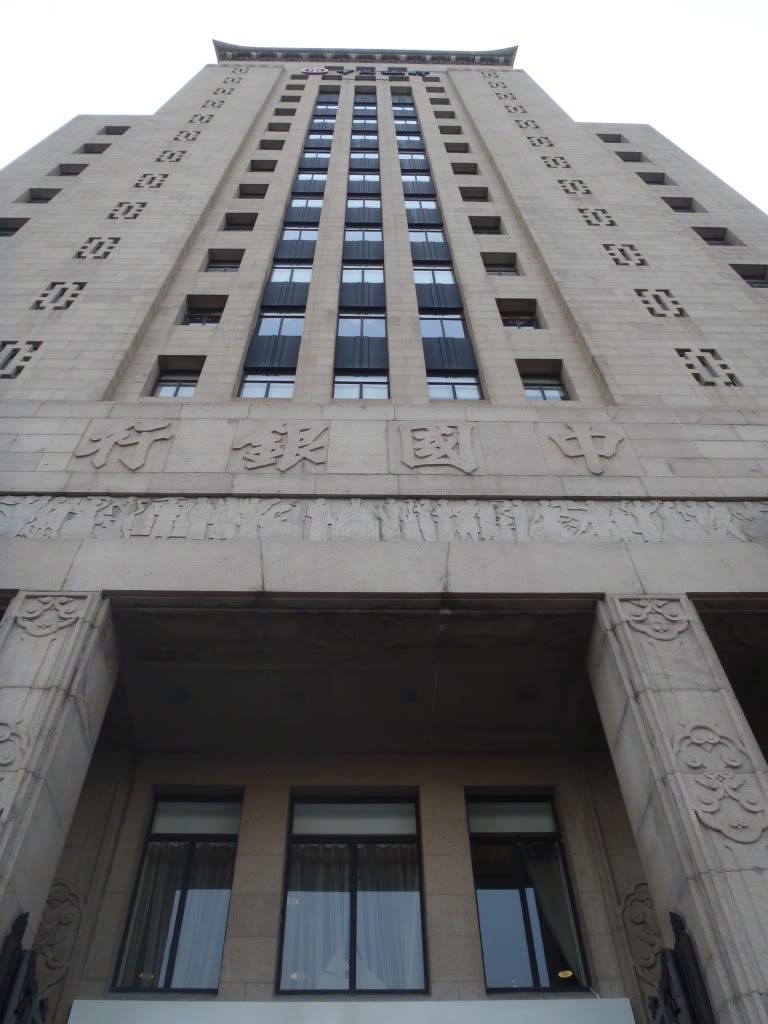
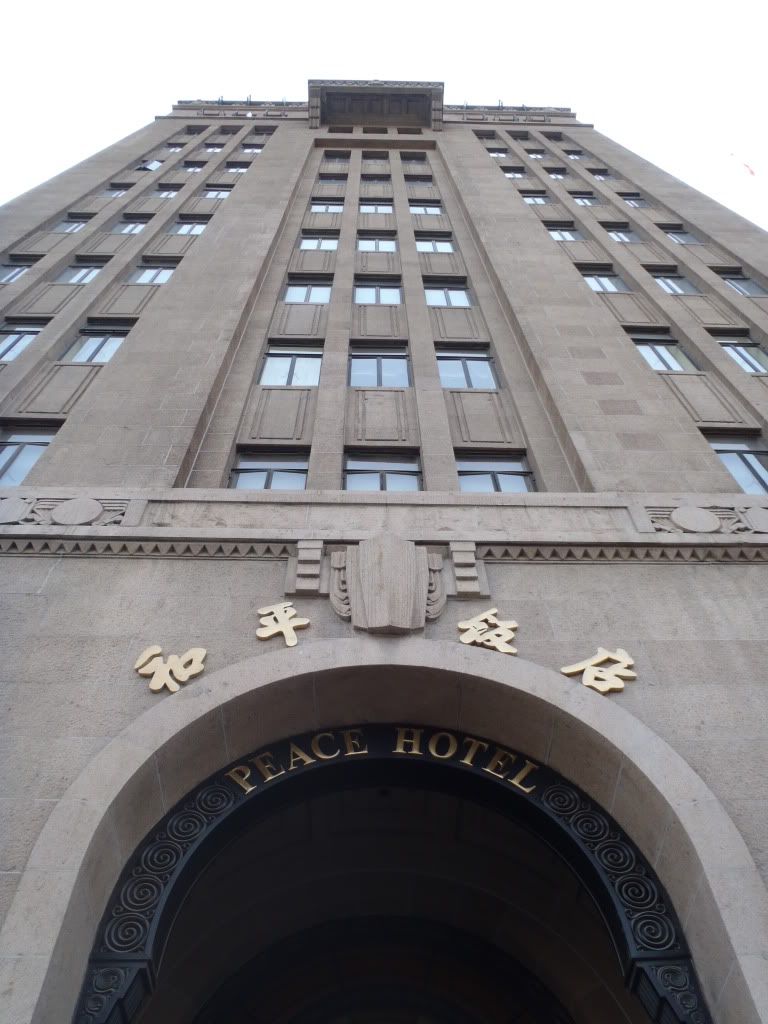
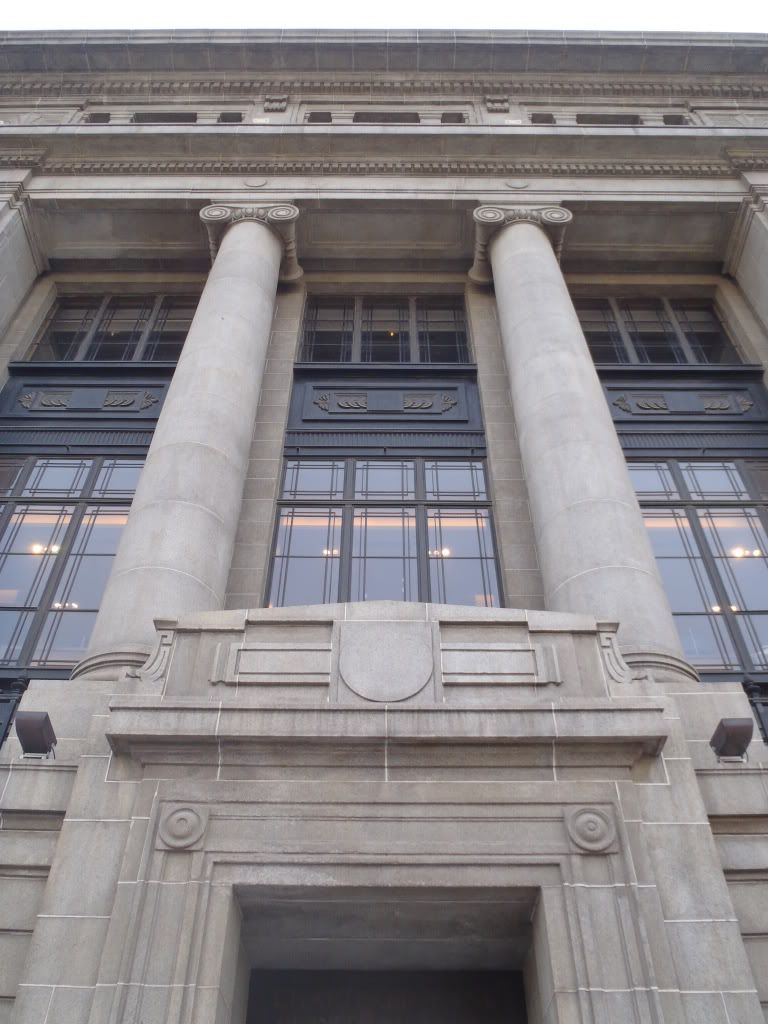
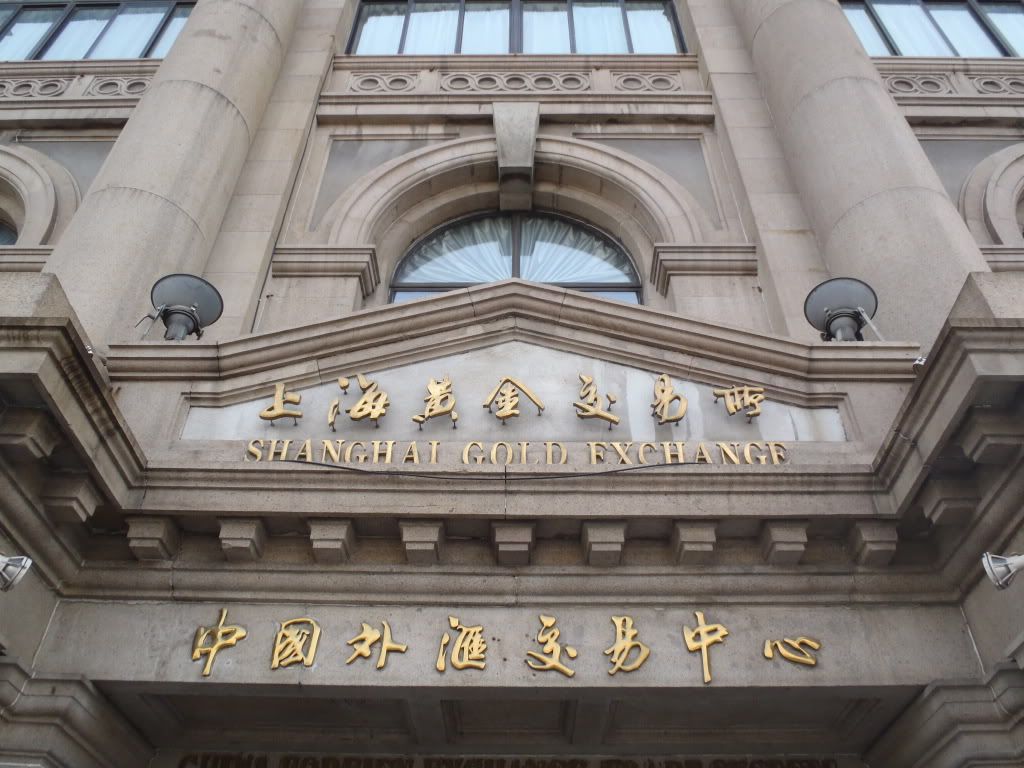
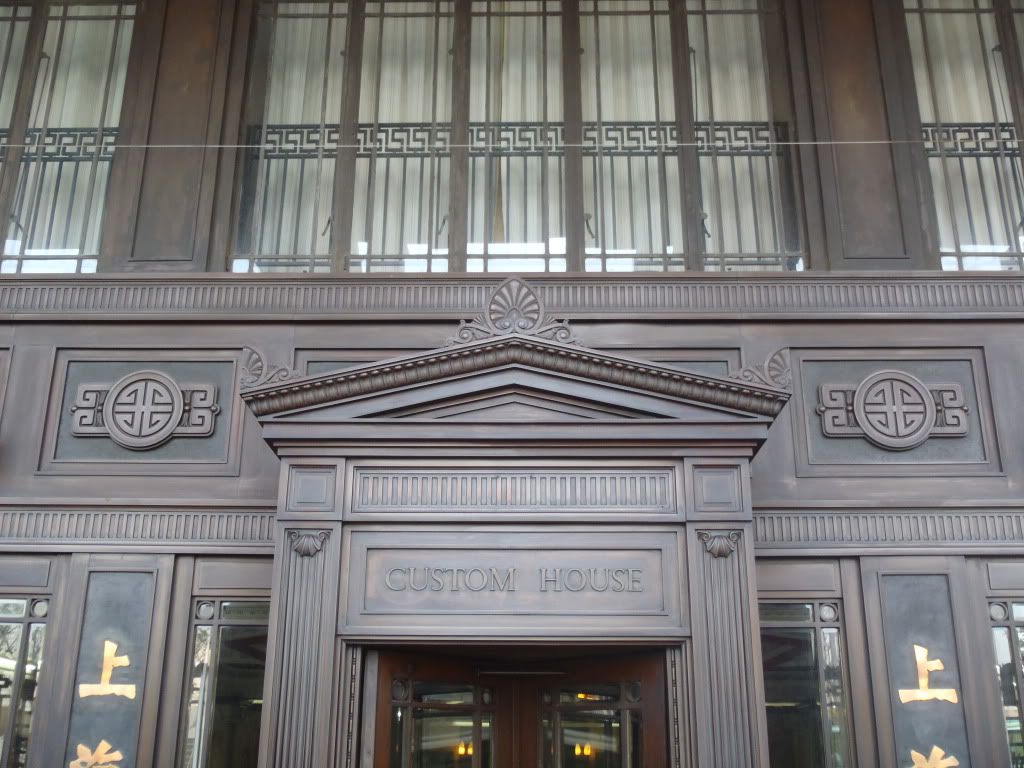
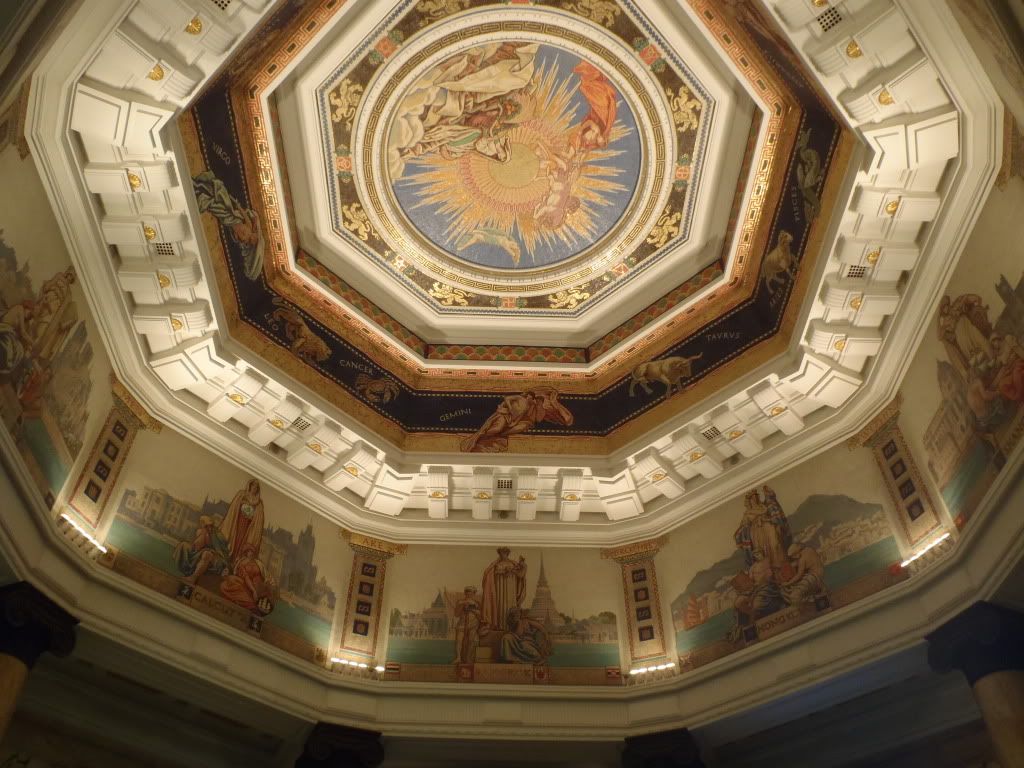
After resting up we went through the remainder of our walk a bit faster. We passed ‘Three on the Bund,’ the famously-snobby ‘Shanghai Club’ where businessmen would sit according to rank, and crossed the street to view the Meteorological Signal Tower. It was almost 5:00 PM now and we thought it might be smart to cross to the other side of the river through the underground tunnel. I had ridden this tunnel when I first came to Shanghai a few years ago, but had forgotten how simple and overpriced the ride had been. Here we go again! You pay like… $6 USD per person for a few minutes in a moving tunnel with a couple multi-colored flashing lights. Nothing more than that. I must say, Shanghai should update that thing! We arrived on the other side to come face-to-face with the famous Oriental Pearl Tower.
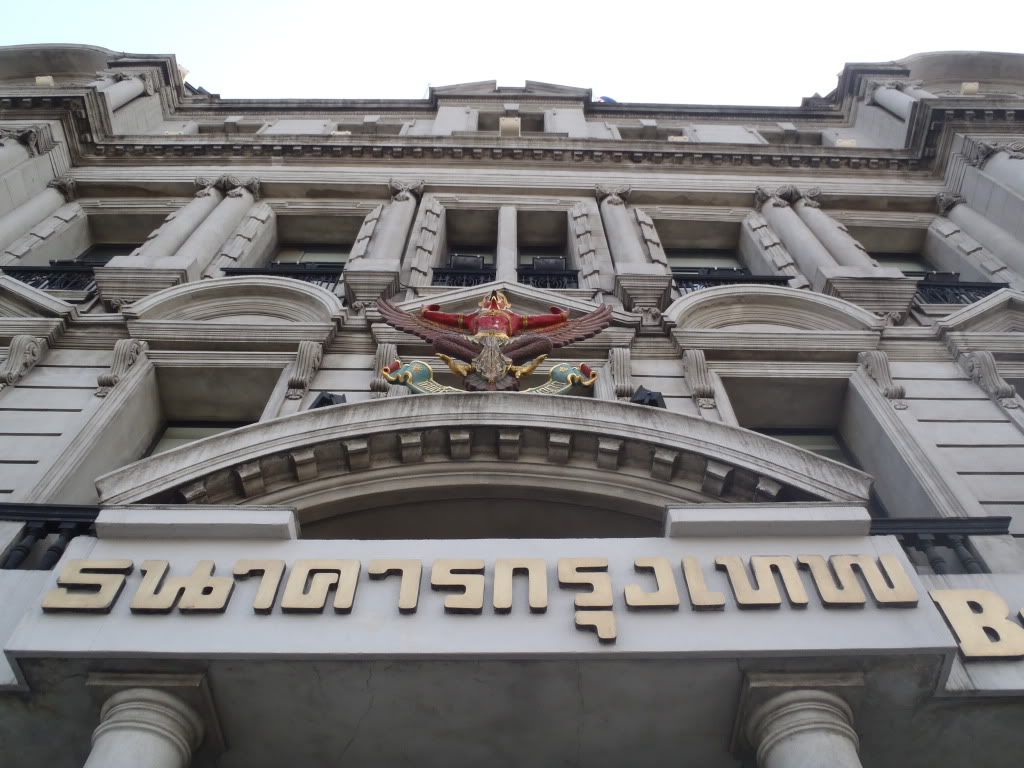
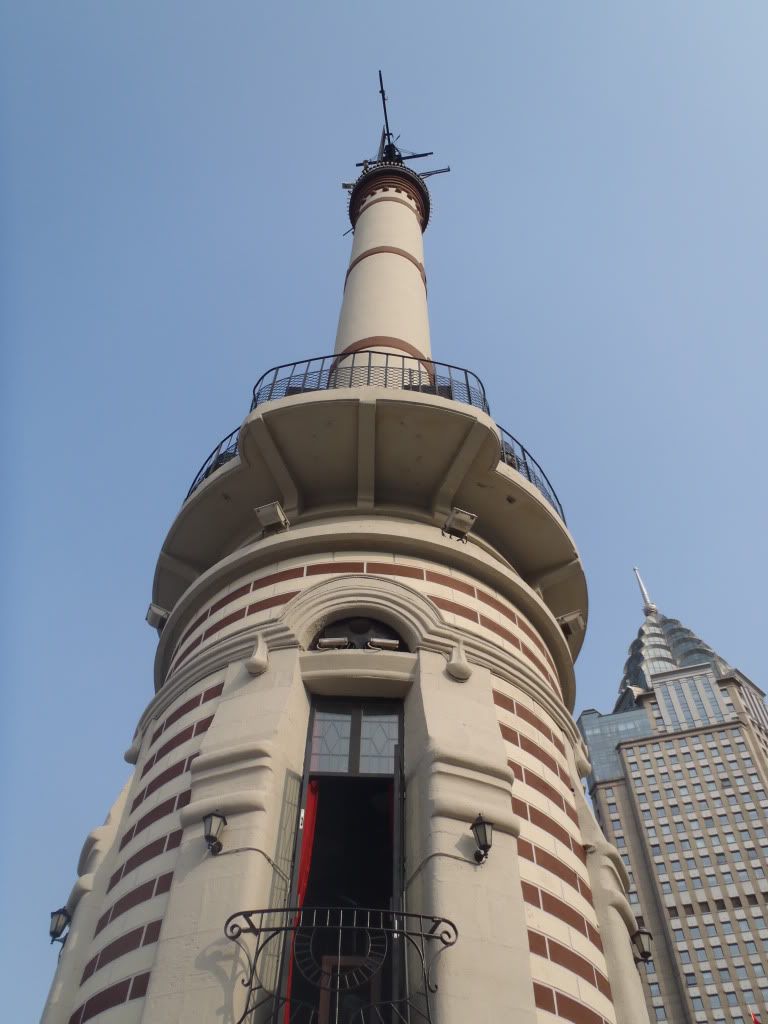
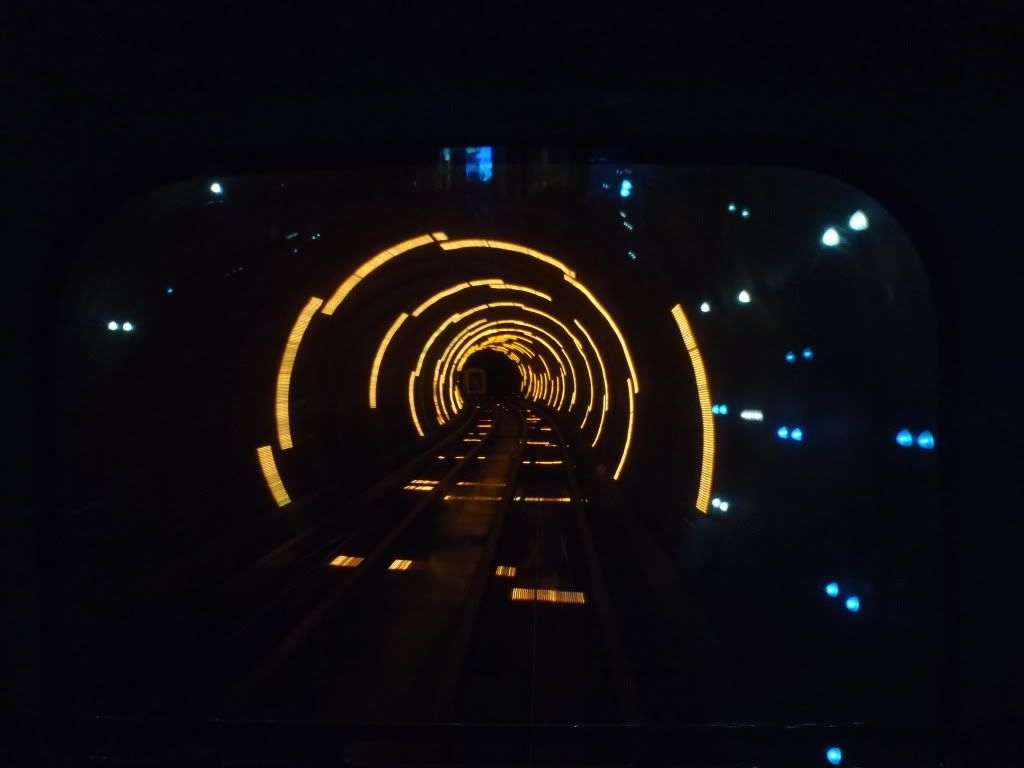

It took a little while to walk over to it but we had planned to check out the Shanghai Urban History and Development museum in the basement. The square in front of the tower at the time we arrived looked like a small festival complete with local Chinese fast food and carnival games and potential stuffed-animal prizes. Of course this is China so it was jammed-packed with people. Just a warning to anyone who isn’t comfortable being in a sweaty crowd of Chinese people, LITERALLY pressing arms and having people constantly step on your feet, bang into you without paying attention, and cut in front of you at queues… you probably should think twice about ever living or working in China! Anyways, we went to the museum which had a bunch of wax figures detailing the different stages of Shanghai’s history.
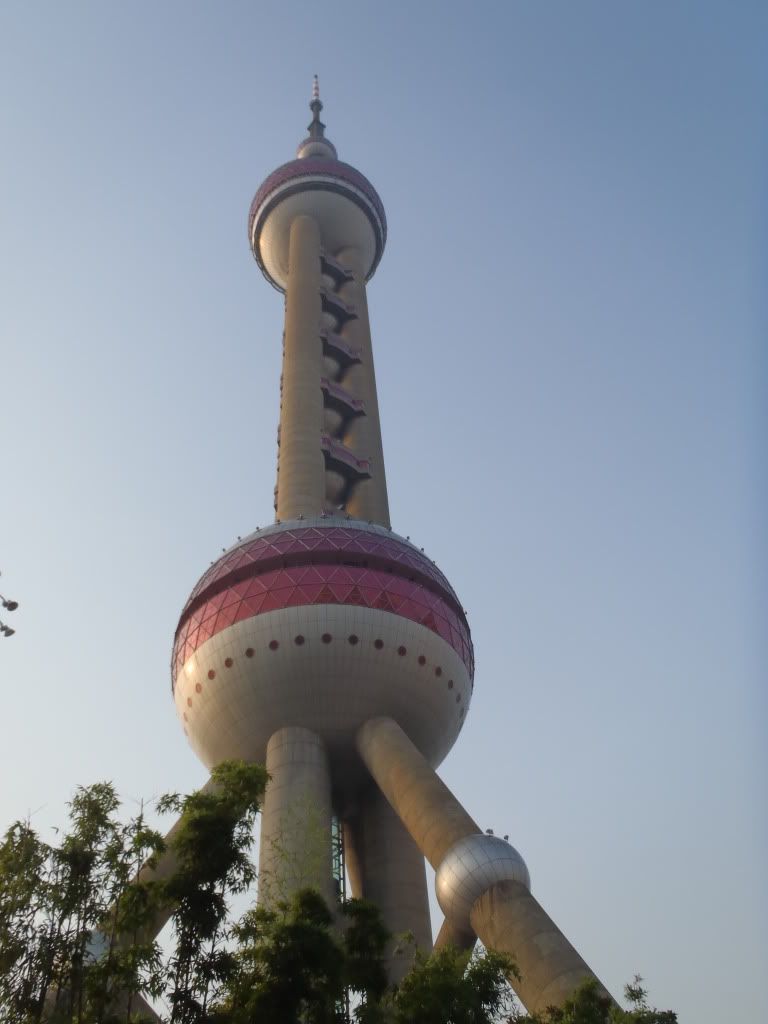
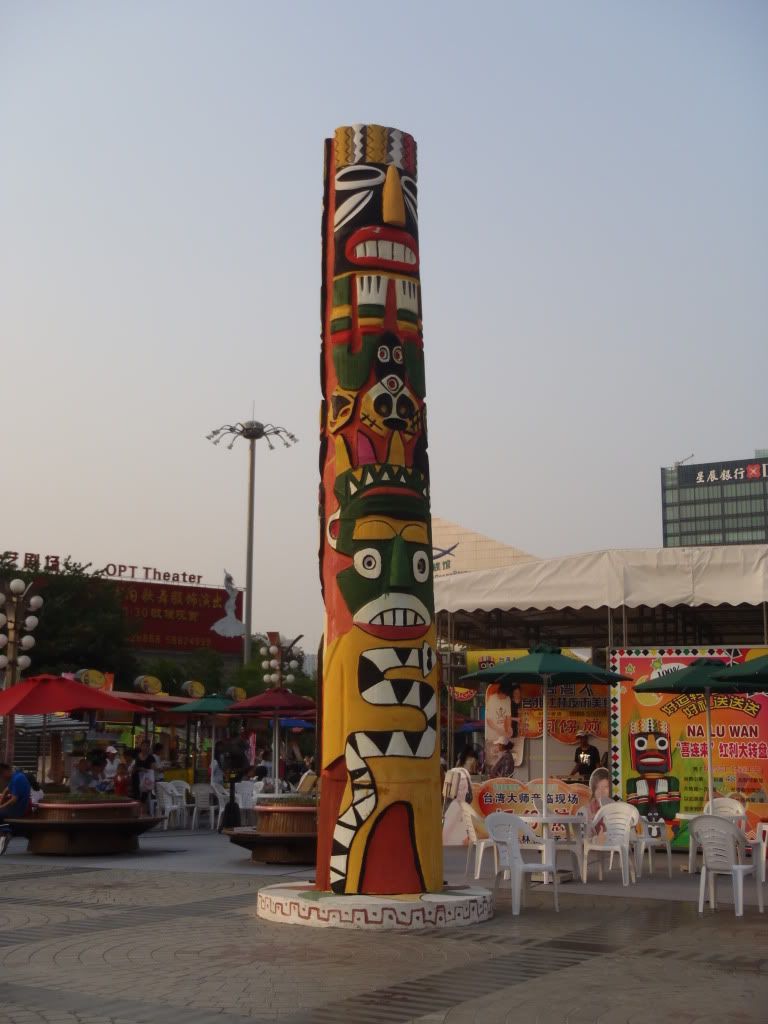
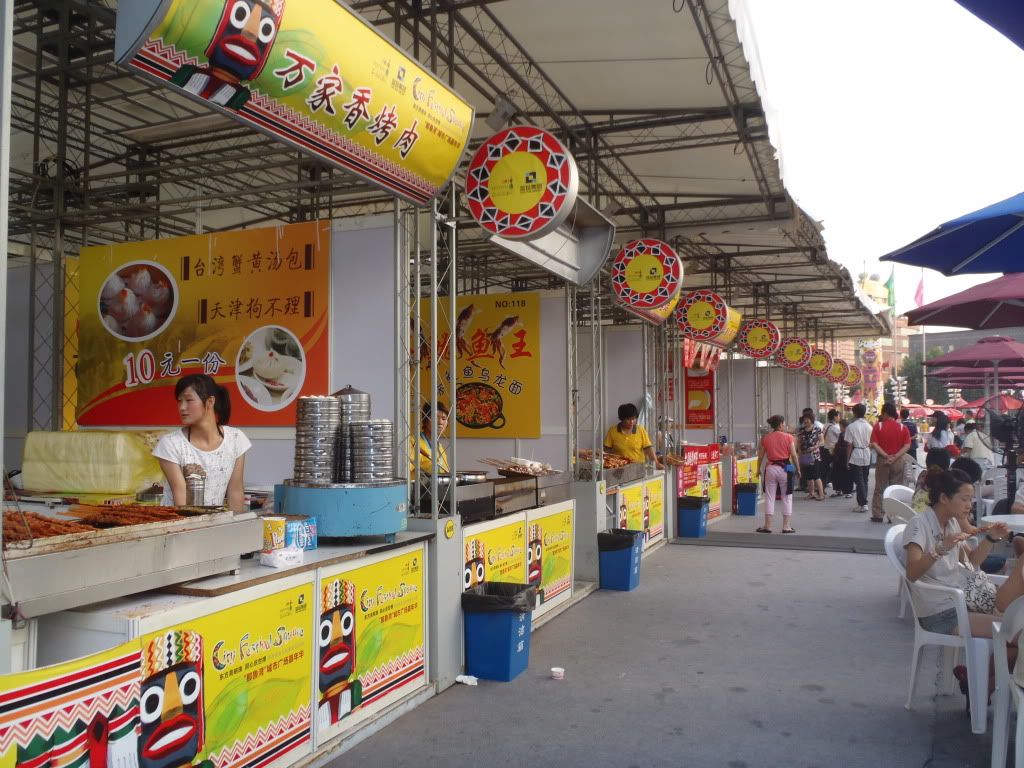
The Prologue Hall: History of Shanghai traffic. We passed a bunch of old cars to walk up the stairs for the rest of the exhibit. Next were the following 5 halls; I’ll summarize the knowledge we gained from them after. The First Hall: Features of the Old City; The Second Hall: Foreign Concessions; The Third Hall: The City and Foreign Activities (or in Chinglish, ‘The Metropol’s In Festod wih Foreign Adventure s’;) The Fourth Hall: Past Traces of Shanghai; The Fifth Hall: Architecture Collection.

We learned from these exhibits that Shanghai was a primitive village 6,000 years ago, was established as a town in the late 1200’s during the Yuan Dynasty, and while it was ‘walled’ during the Ming Dynasty, first gained attention during the Qing Dynasty when the ban on foreign trade was lifted. Shanghai was famous for its large boat owners’ guild, its food stalls with things like bean curd and shops with Chinese herbs, cloth, and silk. Next we learned about the ‘concessions’ Shanghai had to make to foreigners during the semi-colonialized state of the city once China had been forced to open to Western trade. Due to the influx of Westerners into Shanghai there began a mixing of Chinese and Western styles, as evidence in the architecture and customs of the time.
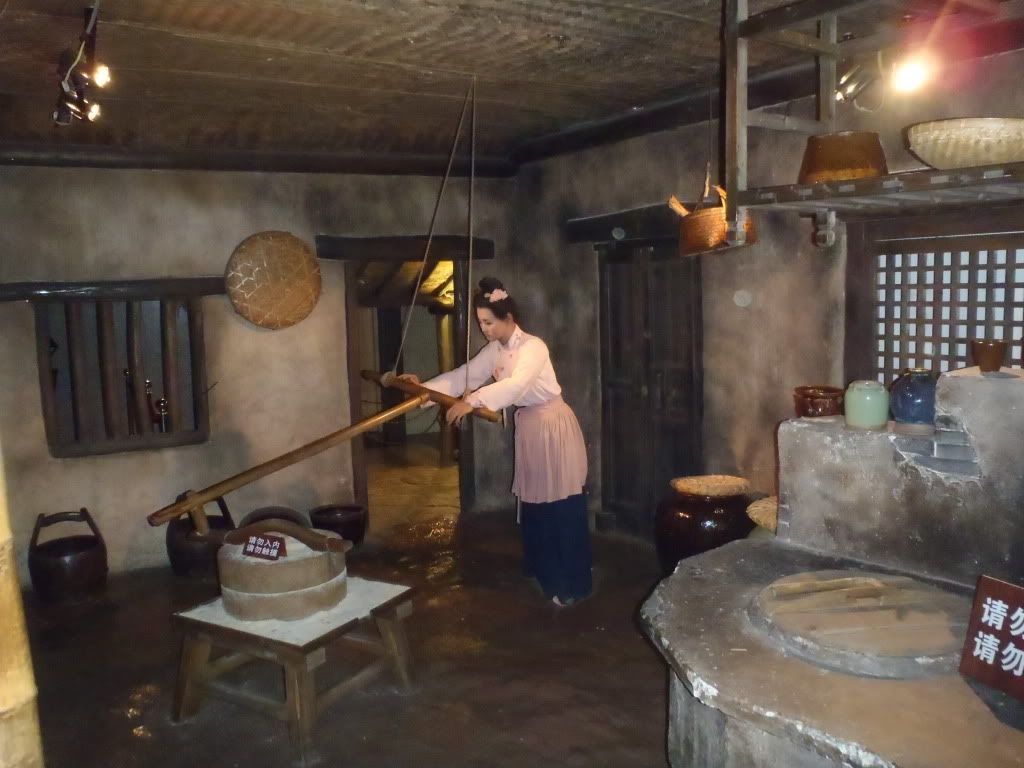
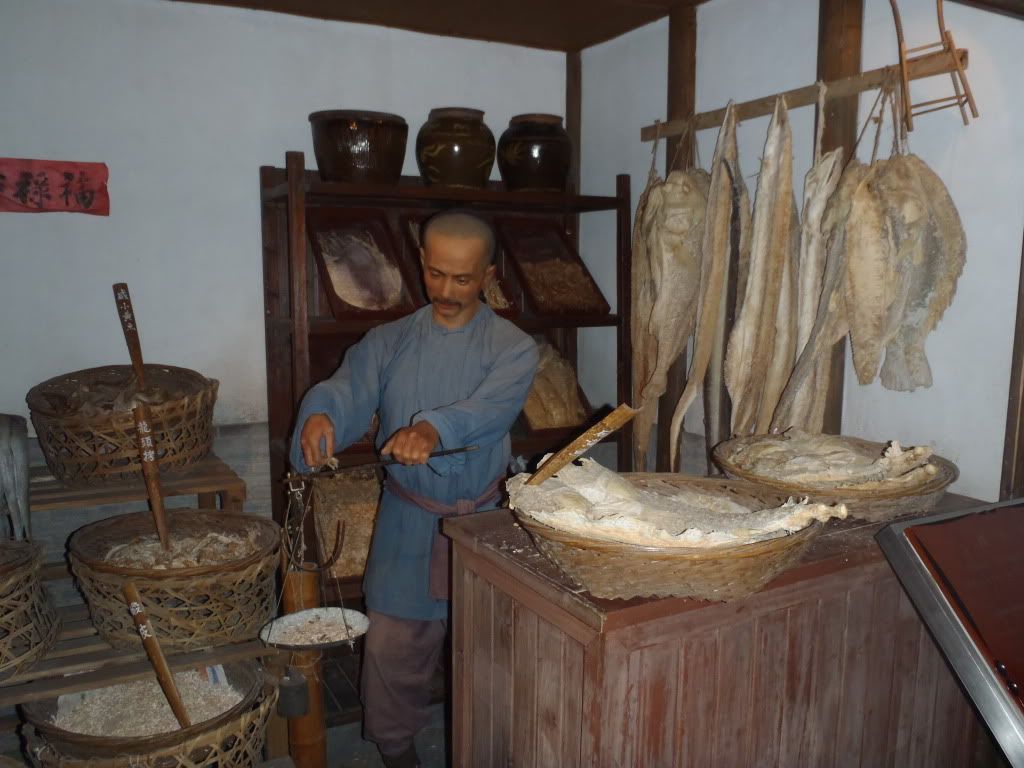
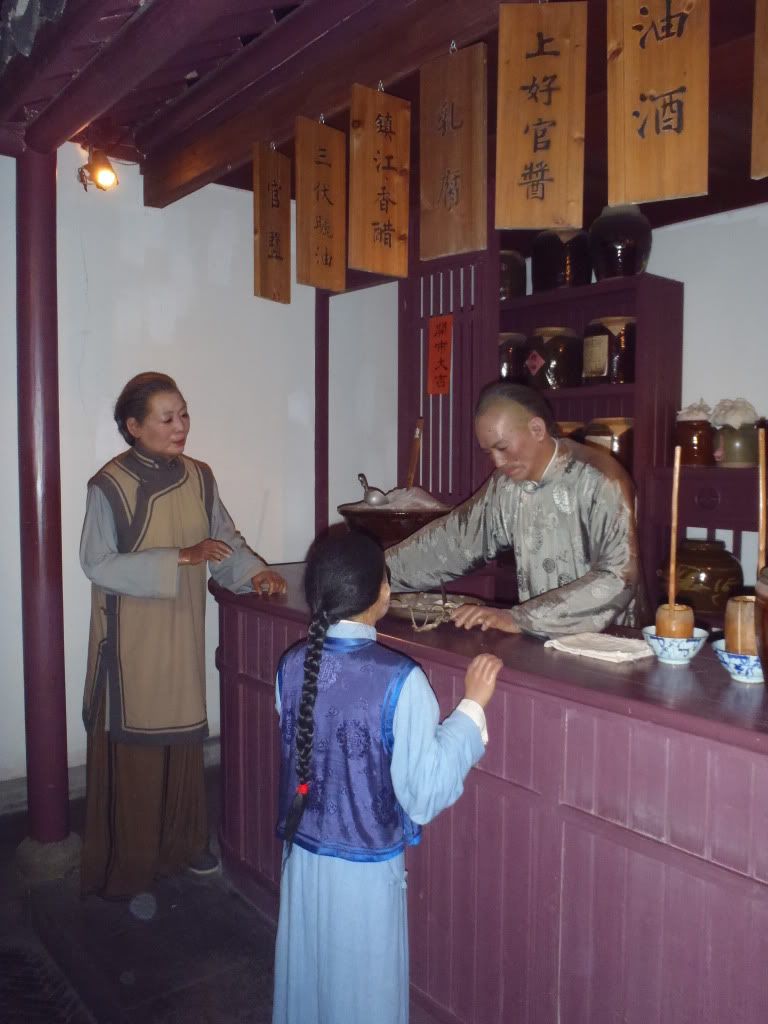

Shanghai began to grow at this time into the largest and most important trading center in the East. Competition picked-up between local Chinese-made products and foreign important (such as in the tobacco/cigarette industry) and the market grew more intense. Fuzhou Road (then known as Si Ma Road) became absolutely flushed with commercial activity in the late 19th century. We learned how the architecture on the Bund serves both as an impressive sign of Shanghai’s importance, and as lasting evidence of colonialists’ power over the people of China at the time. But it wasn’t just the ‘rich’ buildings that serve as a sign of Shanghai’s forced surrender -- the dwellings of Shanghai’s poor leave a reminder as well. It was noted on the eve of liberation in Shanghai that there were 130,000 shacks settlements with 1 million residents of 180,000 households camped out together in poverty.
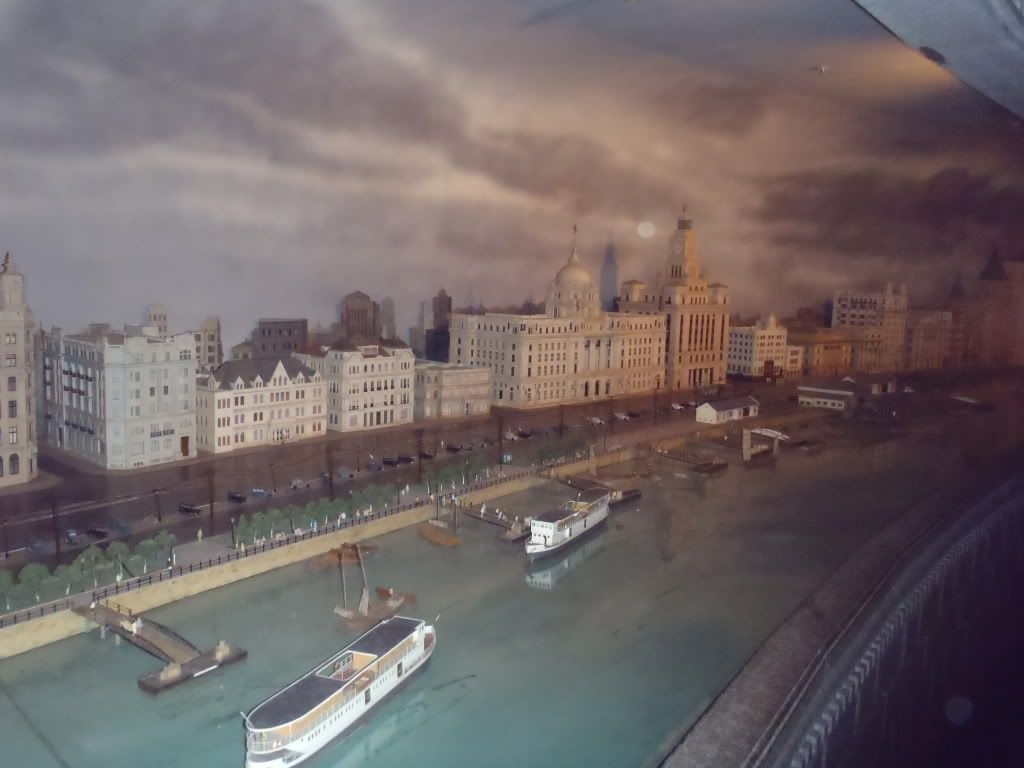
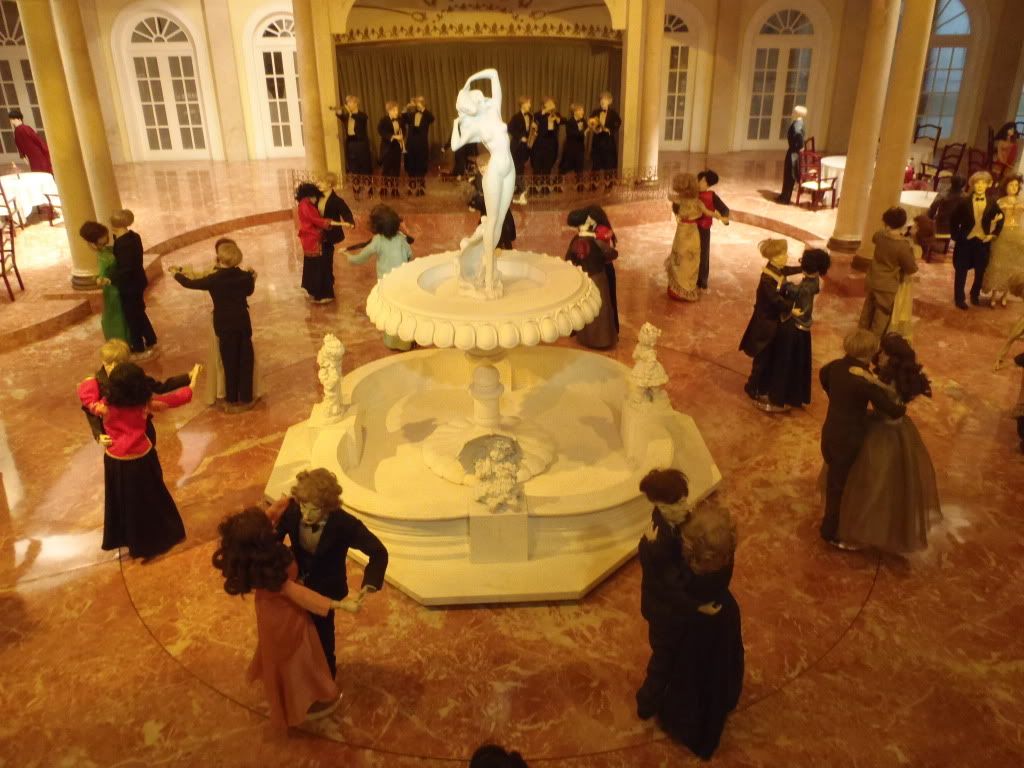
Just before 7:00 PM we finished the museum and returned outside to try and find the infamous ‘China Sex Museum.’ We discovered the display had moved from Shanghai (aww!) but since it was around sunset and we were outside, we were able to get some awesome pictures of Shanghai’s skyline in the fading light. Nice! Henk and I dined that evening at Pizza Hut where we acquired a squeeze-bottle Heinz ketchup for continued use on our travels. (That has got to be one of the greatest inventions for ketchup fanatics!) We didn’t get home until after 10:00 PM where we again were able to spend some time talking to our hosts and then some sweet sleep.
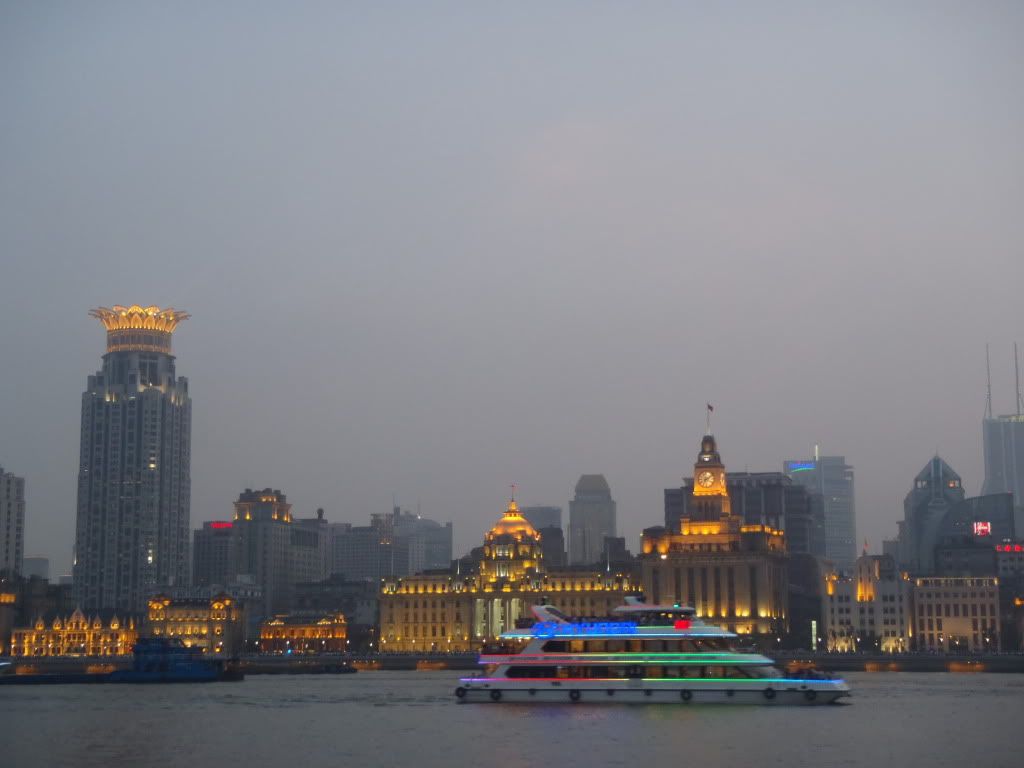
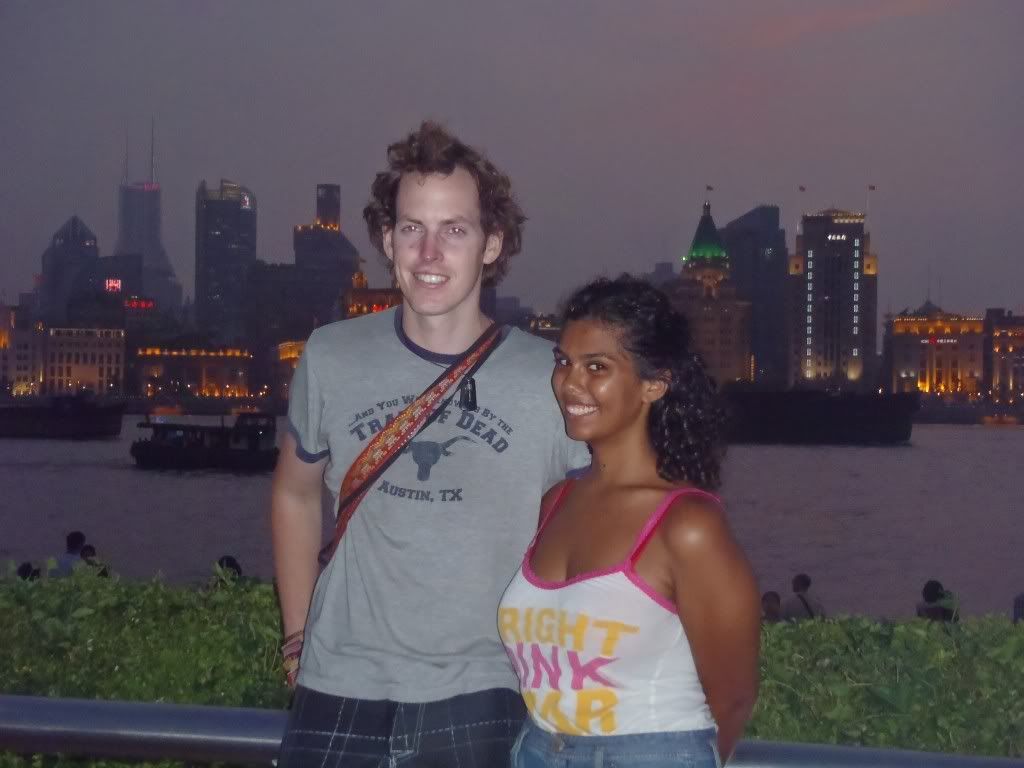
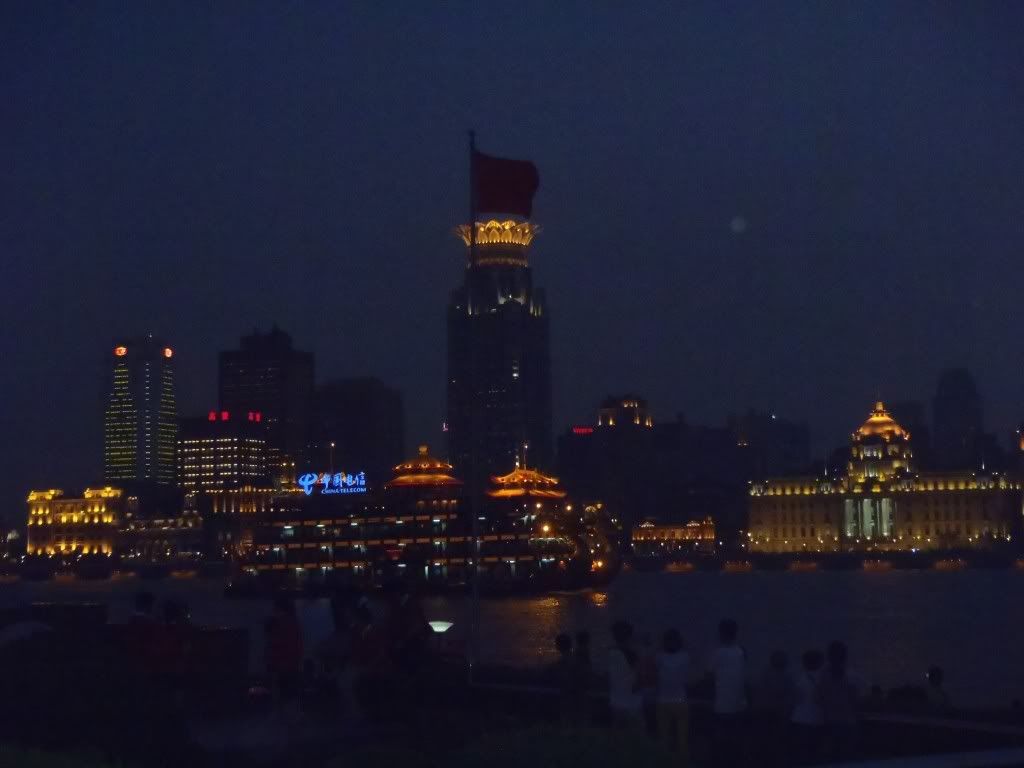
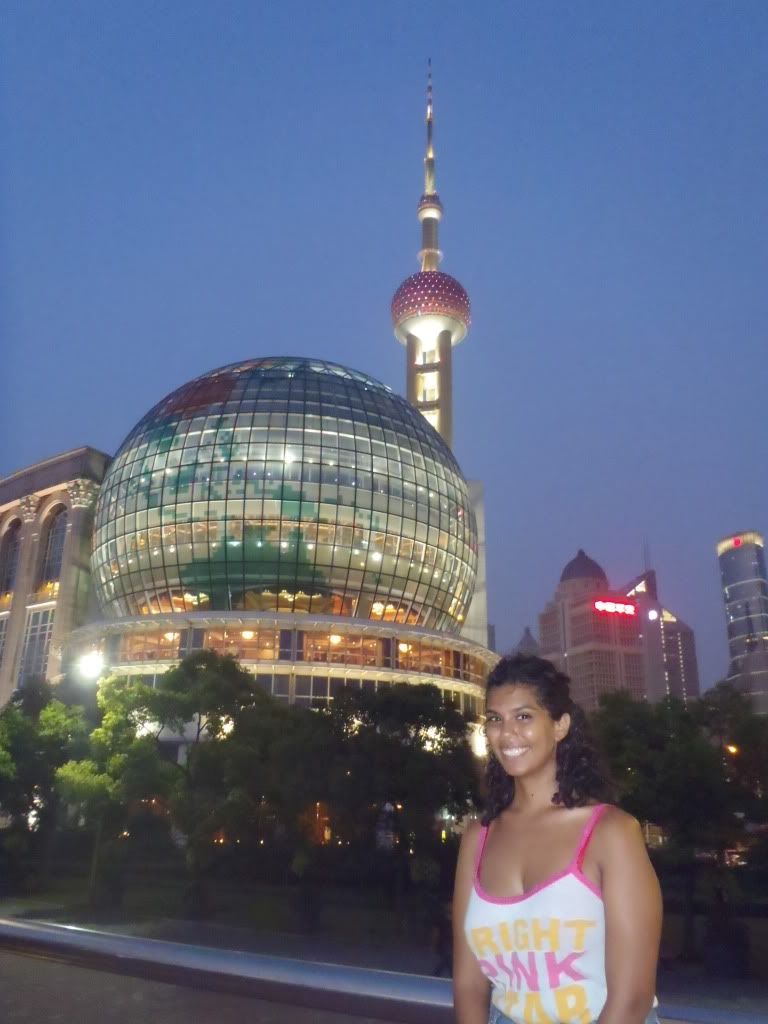
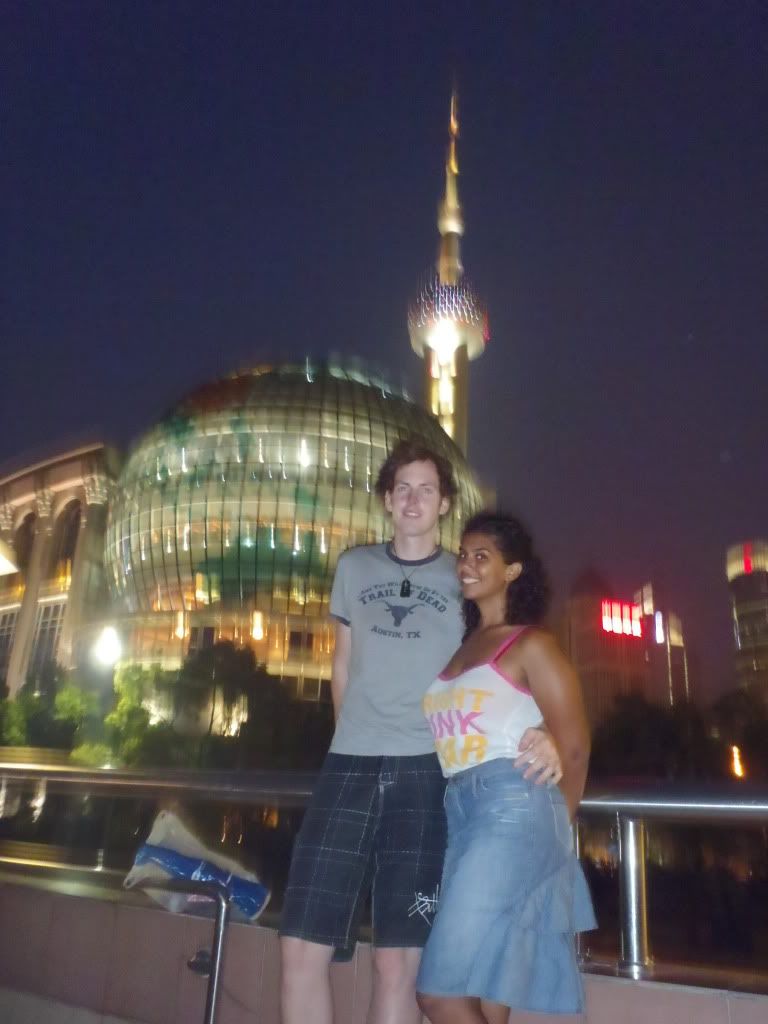
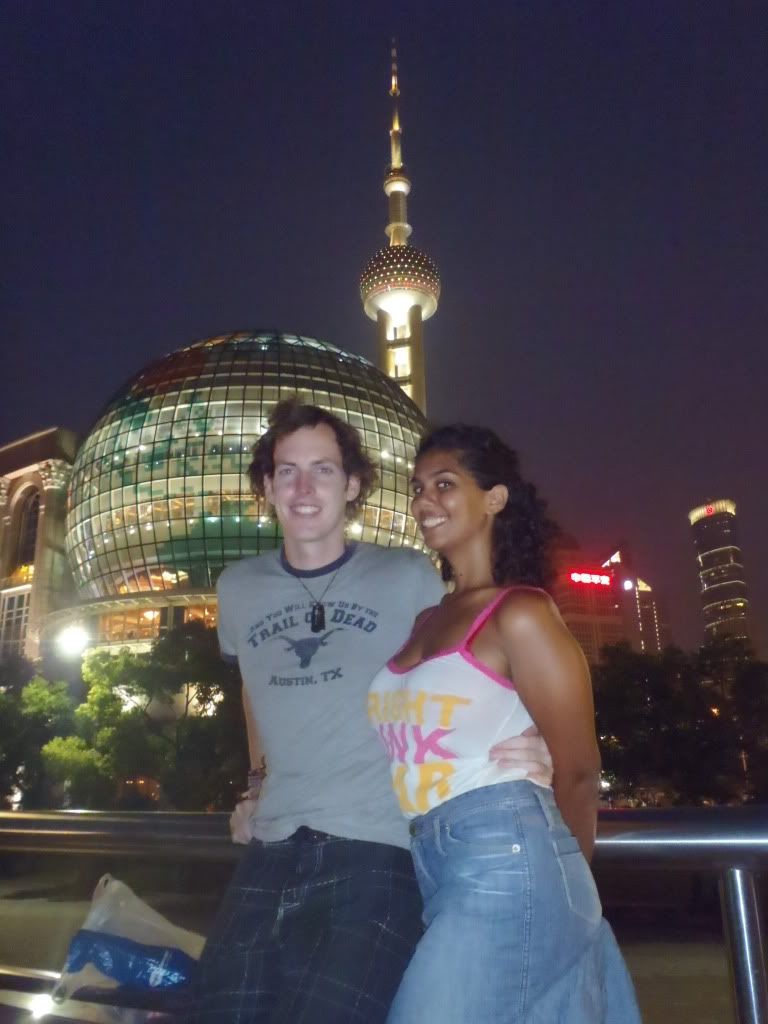
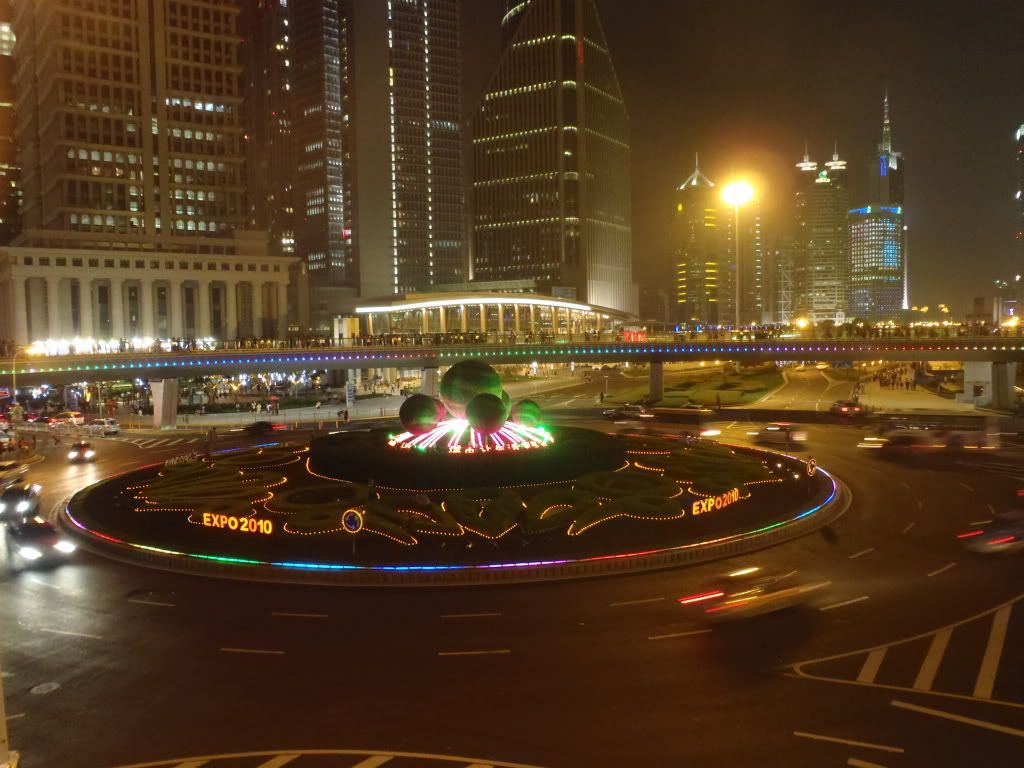
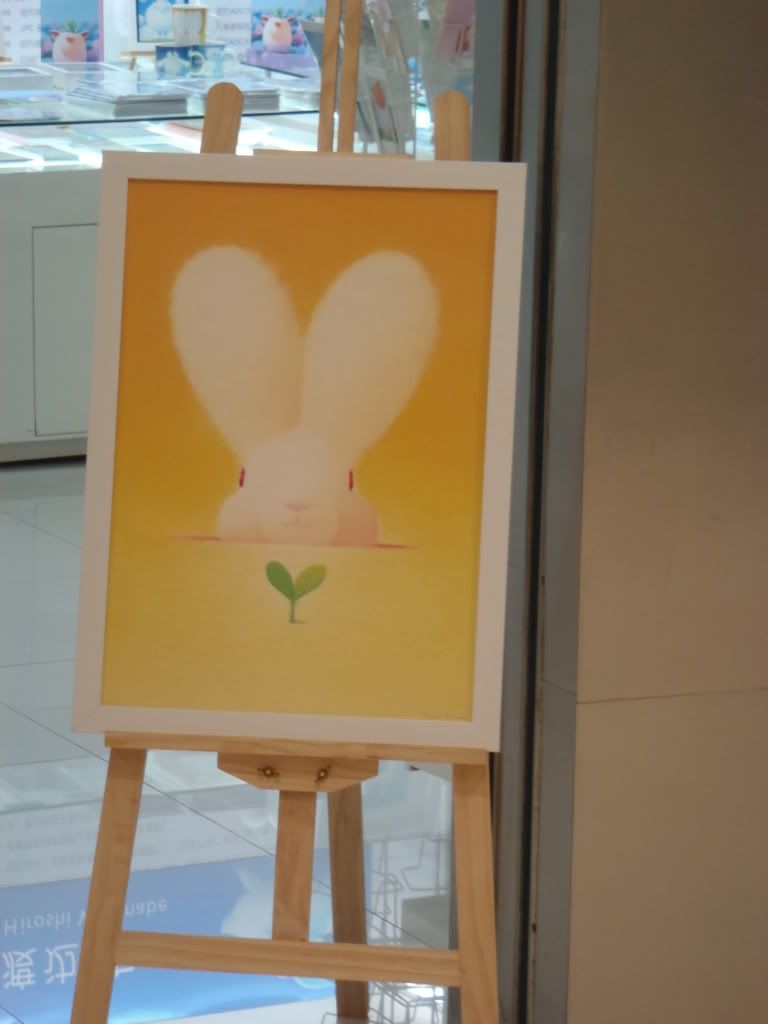
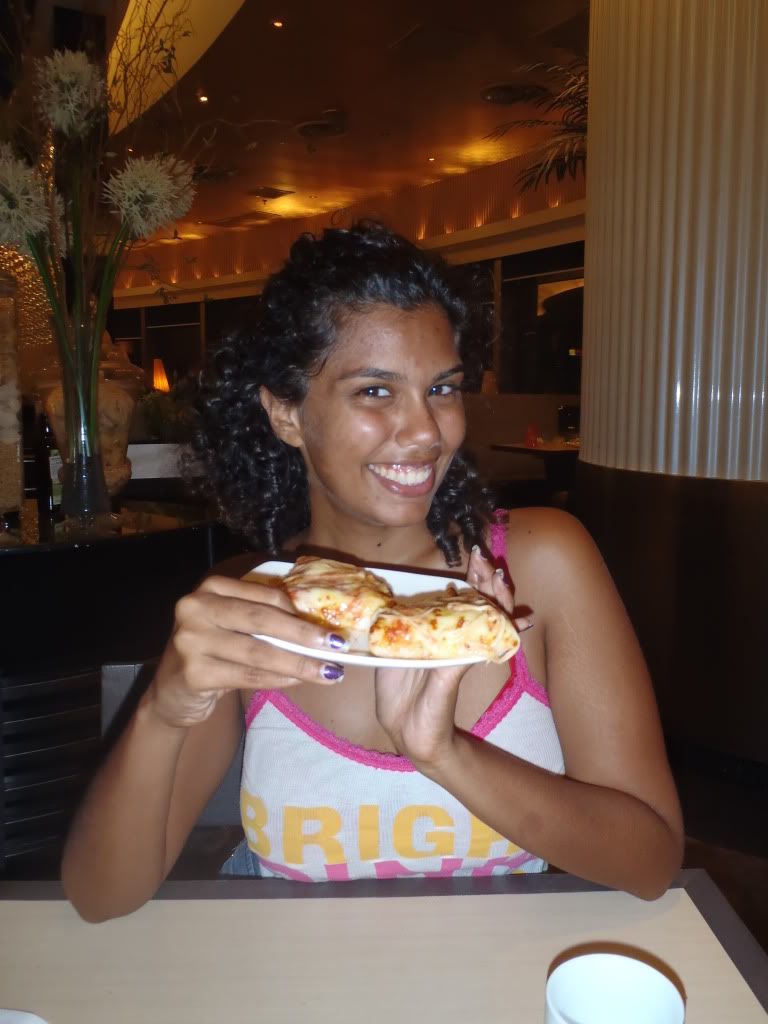
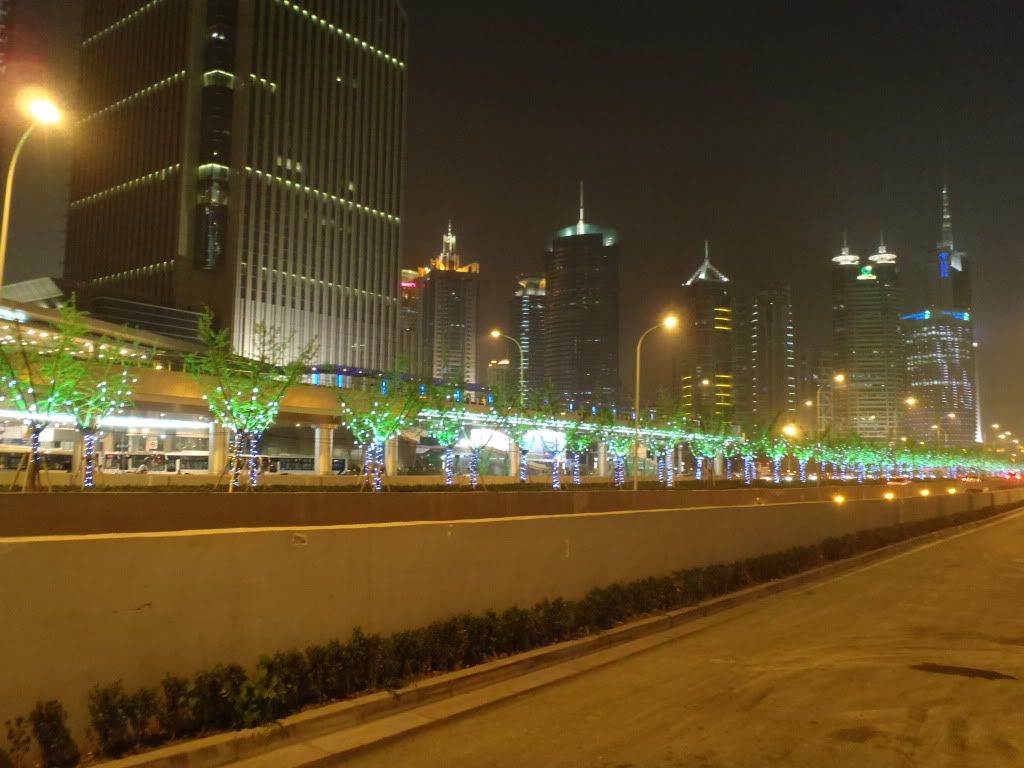
Our plan for the 7th of July was a trip to the Shanghai Museum. Since we were out quite late the night before we didn’t get to the museum until almost 2:00 PM as we stopped for more Subway sandwiches after taking the train to People’s Square. Henk and I had read in the Lonely Planet that this is the “Number One Museum” in the city and that it was a must-see. Once inside, I quickly realized that I had visited the museum on my last trip to Shanghai but some of the exhibits had changed (most had not!) We saw some old elaborately-decorated ceramic and bronze pottery (such as food and water vessels,) jade pieces, Buddha sculpture, old coins, antique name stamps (seals,) art and calligraphy, Ming and Qing Dynasty-era furniture, costumes and masks from the different tribes living in China. I’ll post a few pictures of some of the more interesting pieces we saw – like some cool-looking dagger axe weapons from the 4th century!
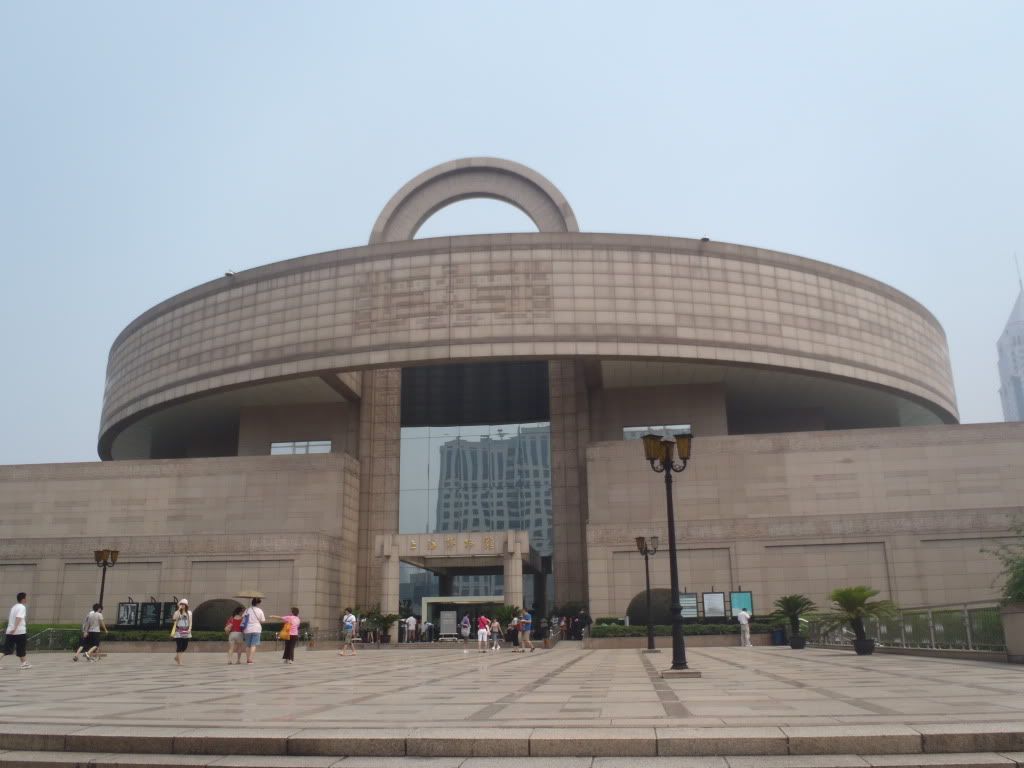
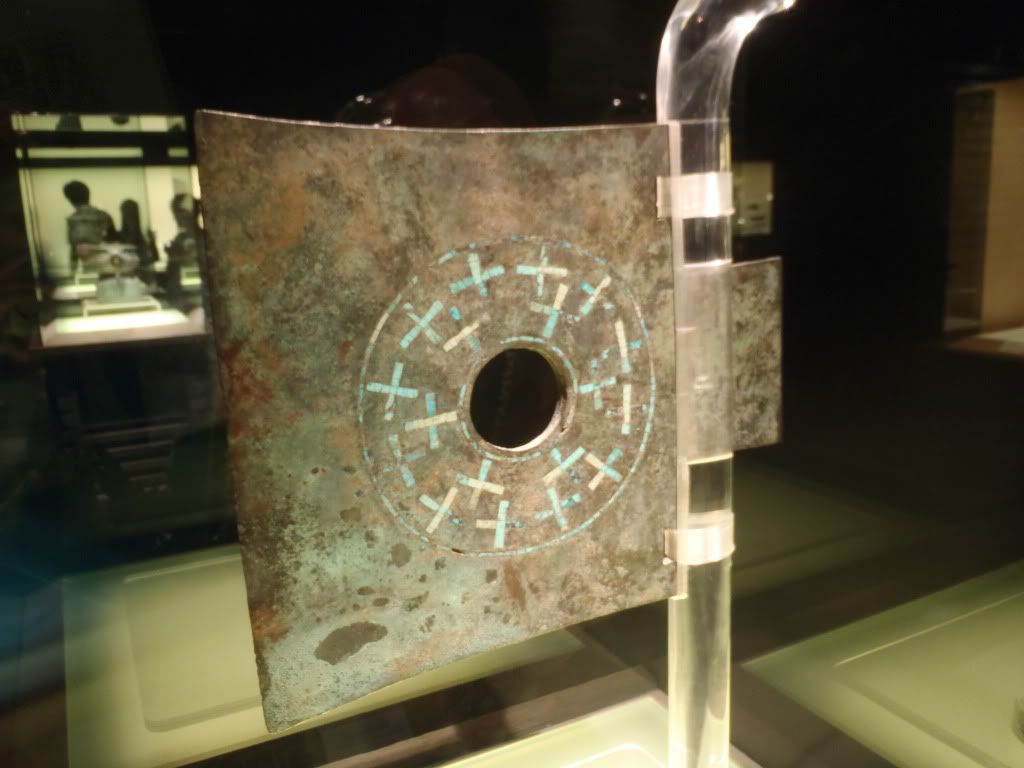
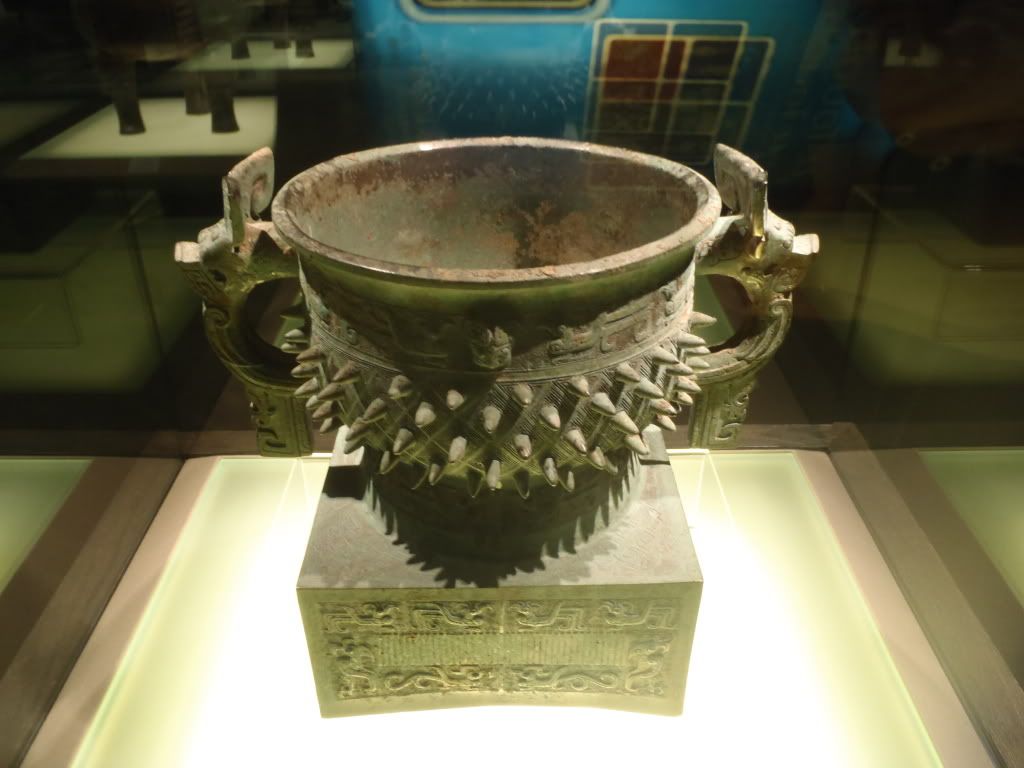
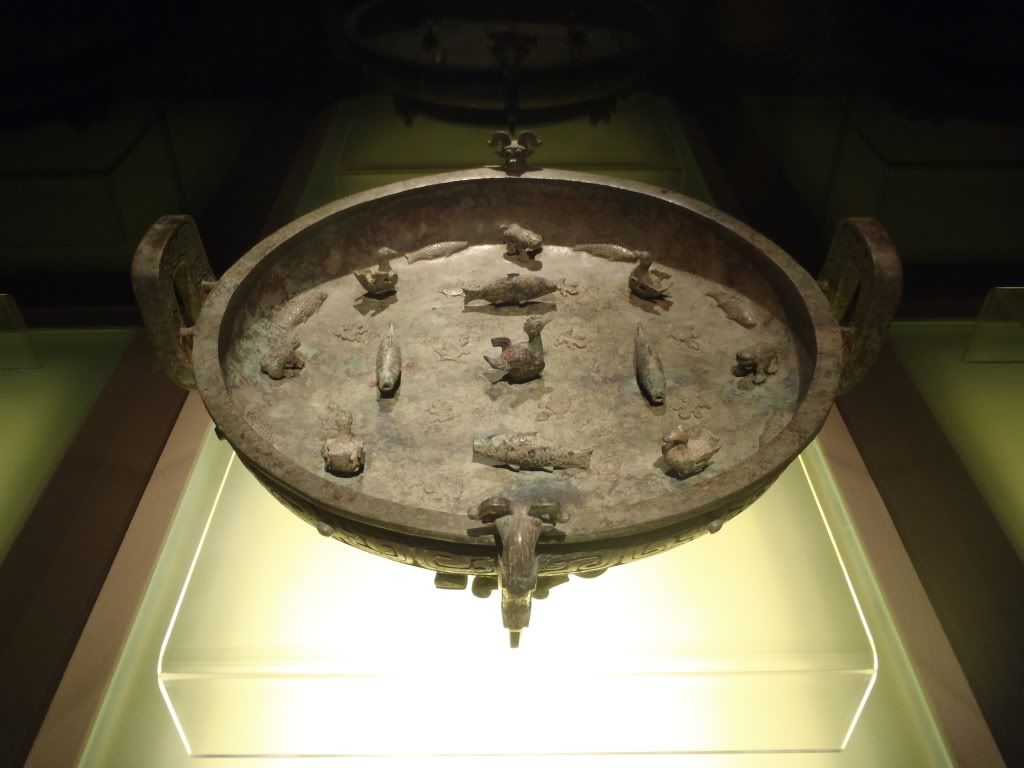
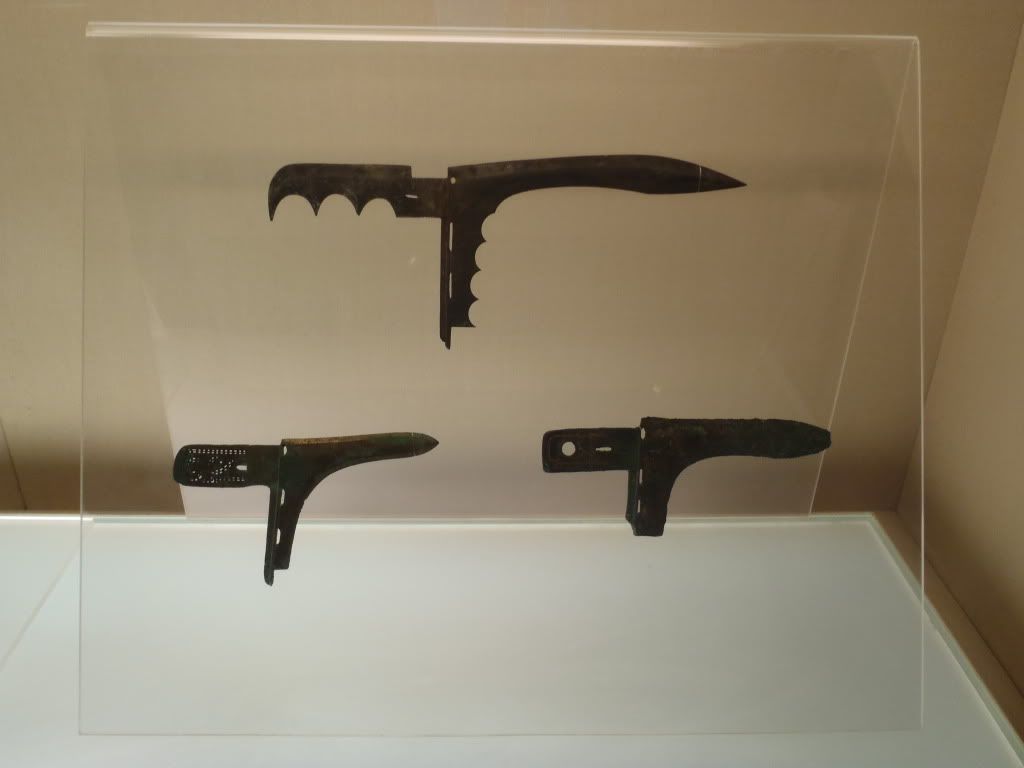
Henk and I had seen many different exhibits on Chinese ceramics by now – in many museums, all across Asia. We gave the gallery a brief walk-through still, discovering the different kiln sites around China have been discovered each using a distinct ‘style’ of glazing for which their pottery became known and widely distributed. The bronzes made by the Chinese during the 2000 years of the Bronze Age have been mostly for the upper class ceremonies. The quantity someone owned would indicate their social status and the bronze itself decorated in animal mask designs, phoenix-like bird designs (God of Wind,) or even dragon designs (God of Water.)
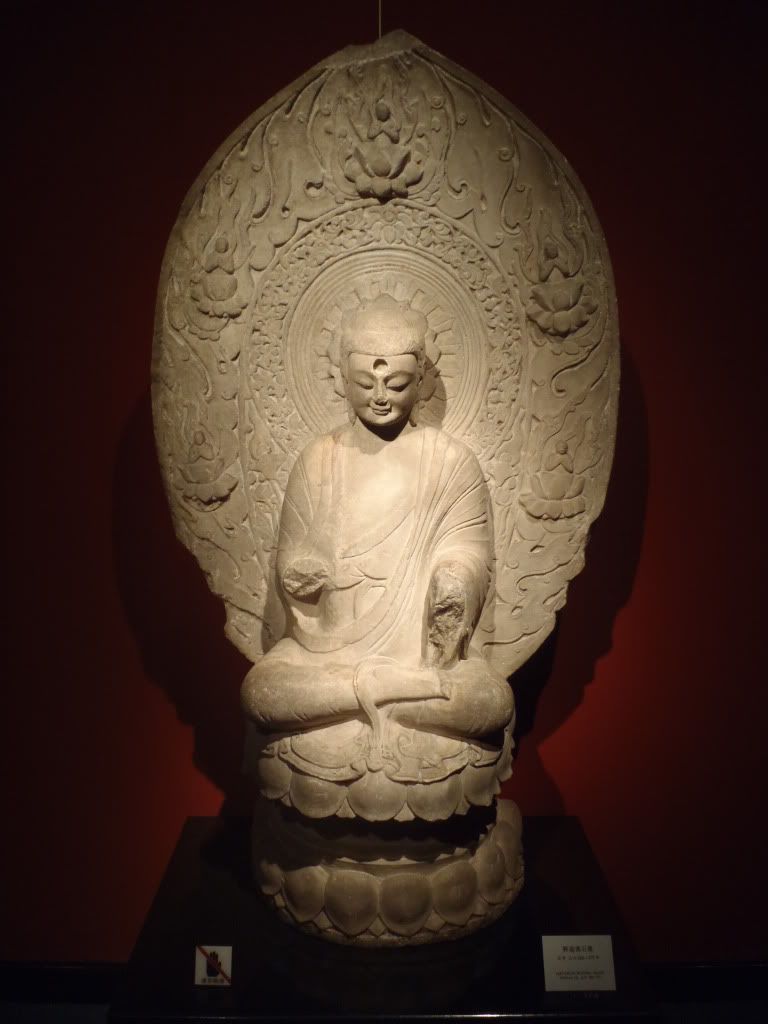

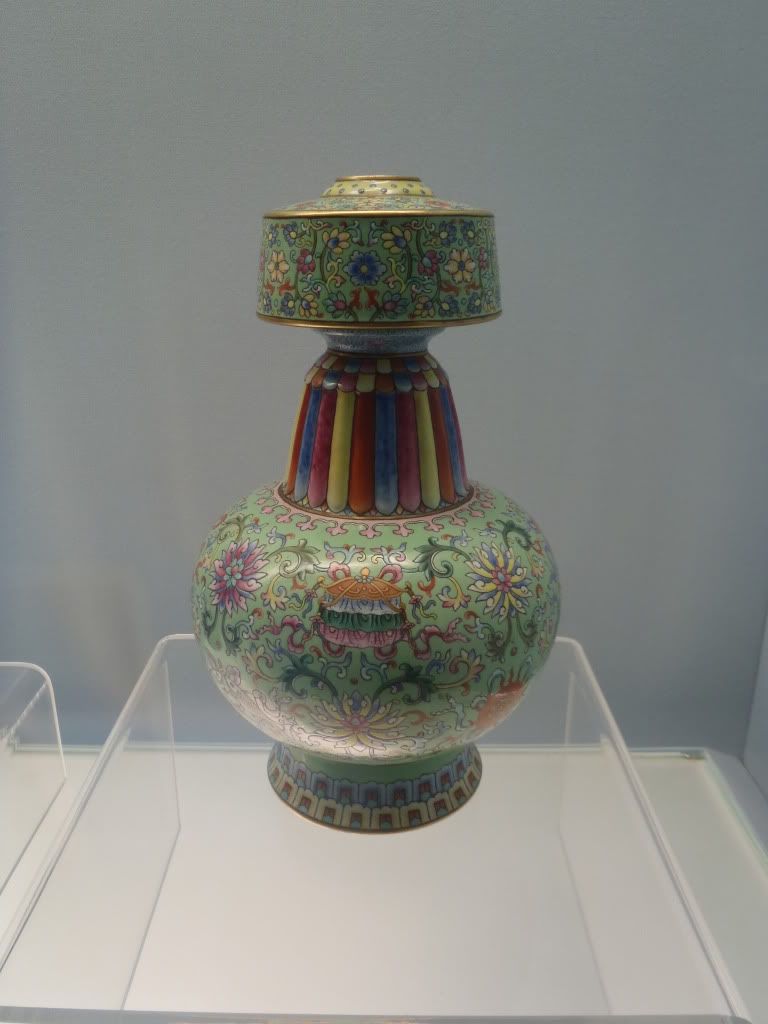

The jade gallery gave us an overview of ‘tools made out of jade,’ including those for ritual, ceremonies, jewelry and decoration, burial, decorative, and even for daily use as utensils. Pretty much everything you can think of in your house could have been made out of jade. But that would be a very expensive house! Some of the old currencies on display were interesting to look at since they weren’t completely round. In fact some were shaped like spades, others like swords, and the very first currencies shaped like cowry shells. Almost all coins had a hole in the center of them so a string could be used to tie the money together.
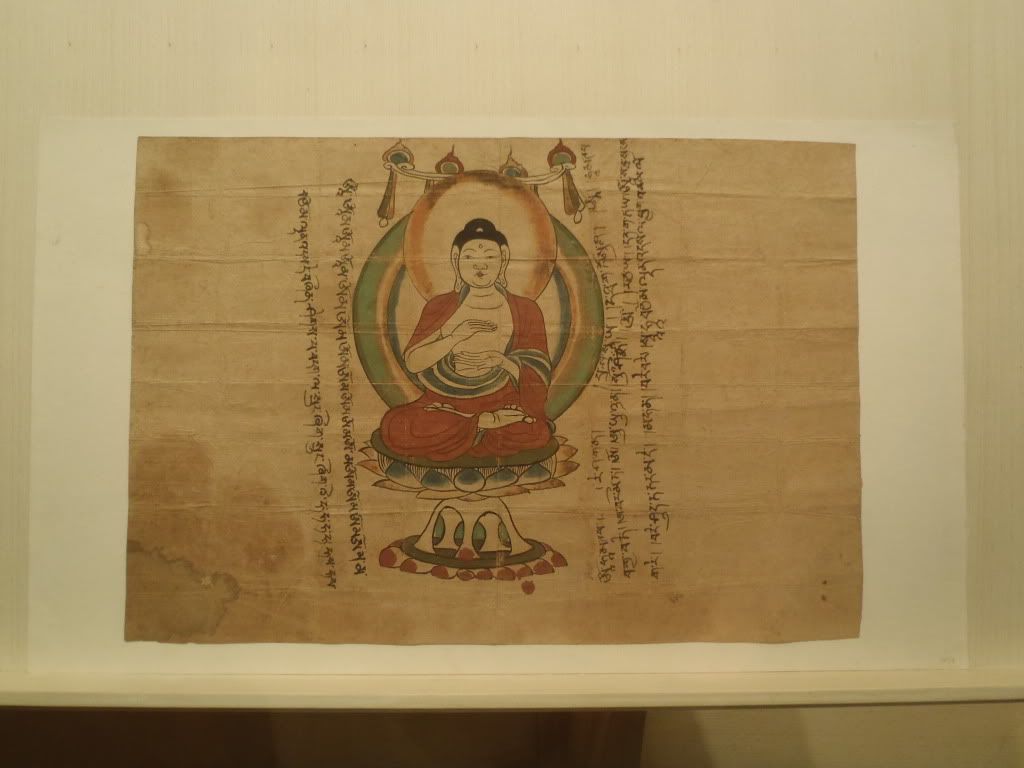
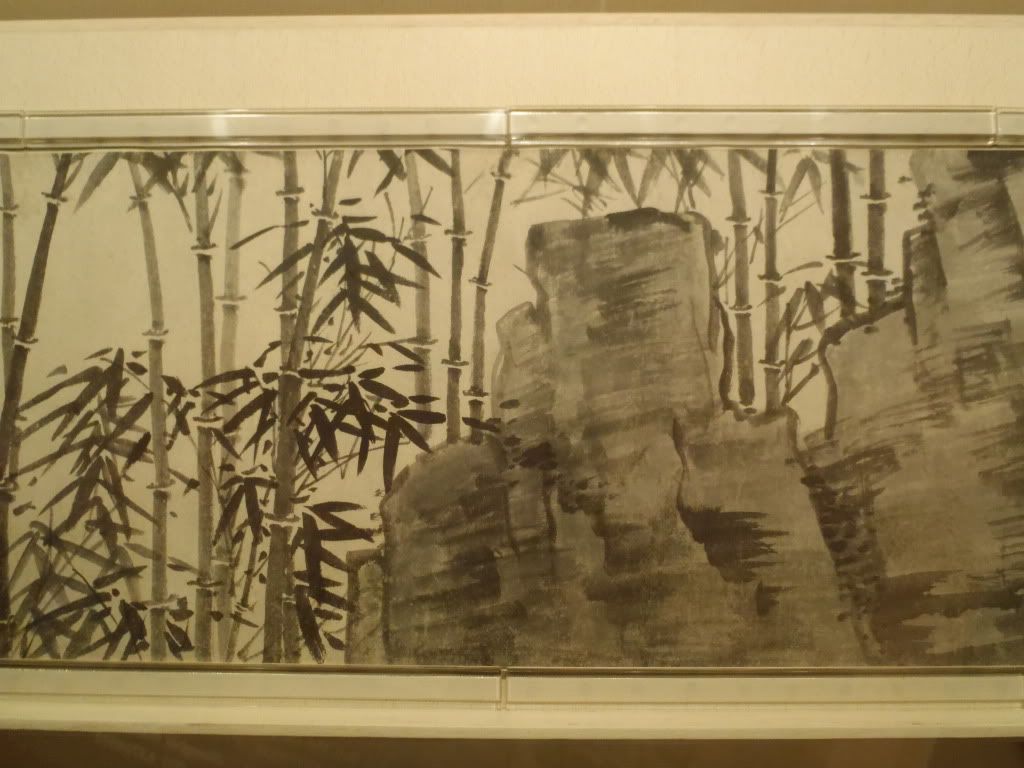
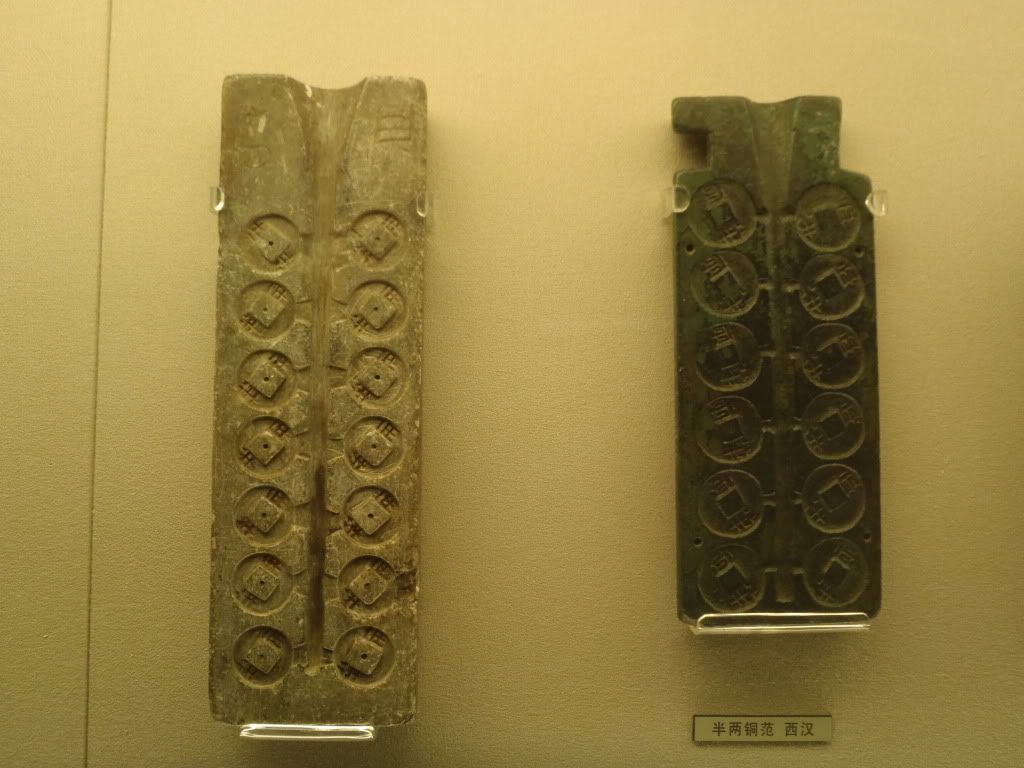
The Ancient Chinese seals we saw were very delicate and intricate-looking, some extremely small while others were impossible to even lift without using two hands! Chinese painting focuses on nature in general while their sculpture focused much more on individual figures. Nevertheless both are still similar in their simple appearance. Despite how complex the designs actually were, the end result would have a “cleanness” about it that Western art doesn’t emphasize as much.
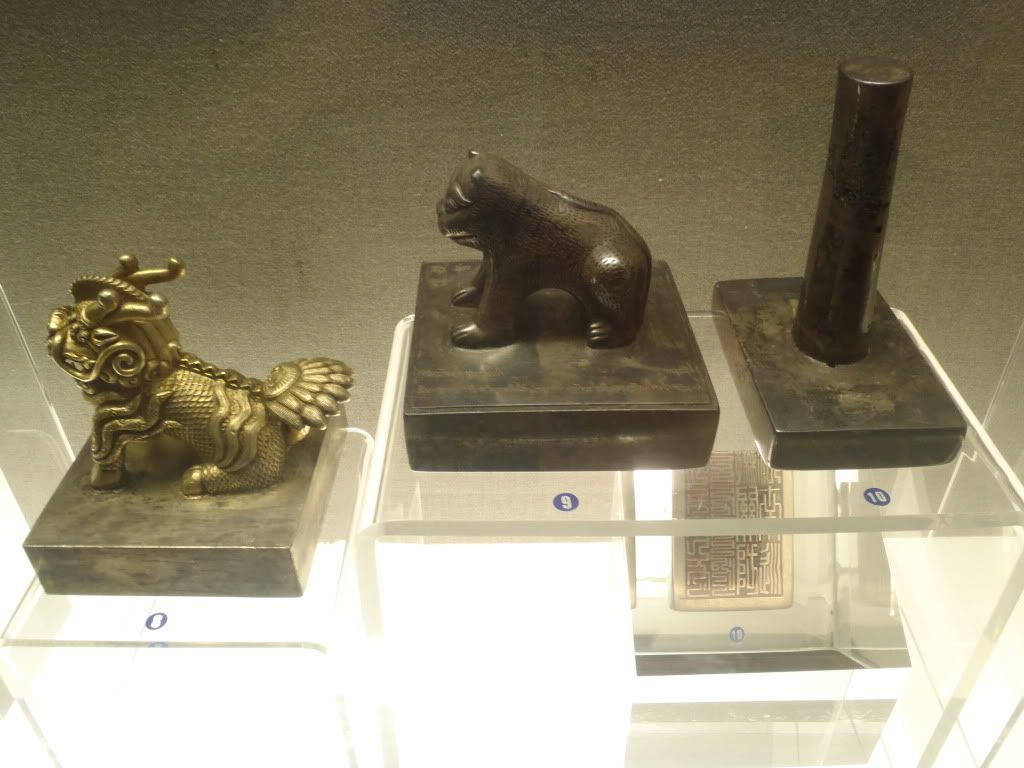
Chinese calligraphy started with simple inscriptions on animal bones and turtle shells, then moved to being carved onto bronze wine vessels, then was standardized by the emperor into a ‘seal script’ which emphasized the regularity and symmetry of each character. Calligraphy continued to evolve over the next dynasties, each time-period favoring its own unique style. Another interesting thing I learned while in the calligraphy gallery was that writing in large (rather than normal-sized) Chinese symbols, while it looks just simply larger to the Western eye, actually is an ancient Chinese equivalent to ‘shouting’ or ‘writing in ALL CAPS.’
The Ming and Qing Dynasty furniture has two distinct styles, with Ming furniture characterized by our brochure as, “…simple and elegant [in] structure with fluent lines and appealing proportions.” Qing Dynasty furniture is in contrast, “… larger and more imposing with elaborate carving and inlaid decoration.” One of the most interesting and colorful areas of the museum was the clothing exhibit from China’s ethnic minorities – 56 groups in total. Many of the groups we have encountered in Vietnam and Thailand such as the Dai and Lisu people had their traditional artifacts encased here. But some of the outfits were tribes less familiar to us such as the Tibetan people and the Uygur nationality. There was also an awesome-looking wooden fishing boat carved and painted by the Gaoshan people who live on Lanyu Island in Taiwan with multi-colored ‘clan designs’ on either side. And to end the exhibit were an assortment of detailed ceremonial masks, mostly from Tibet as well!
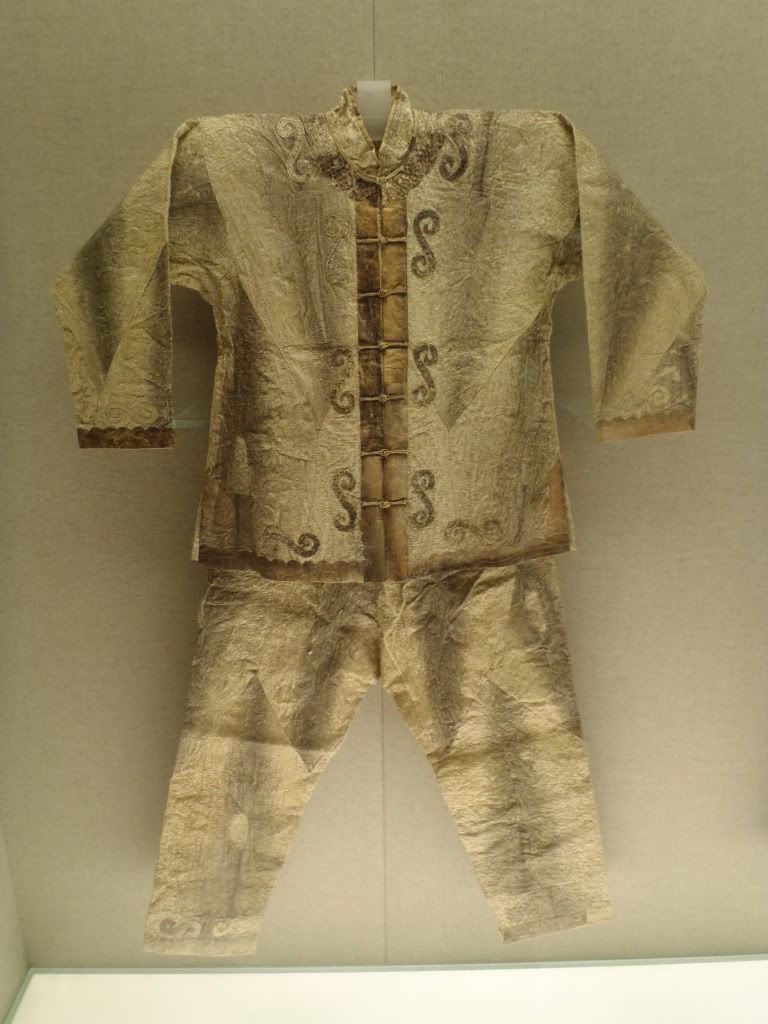
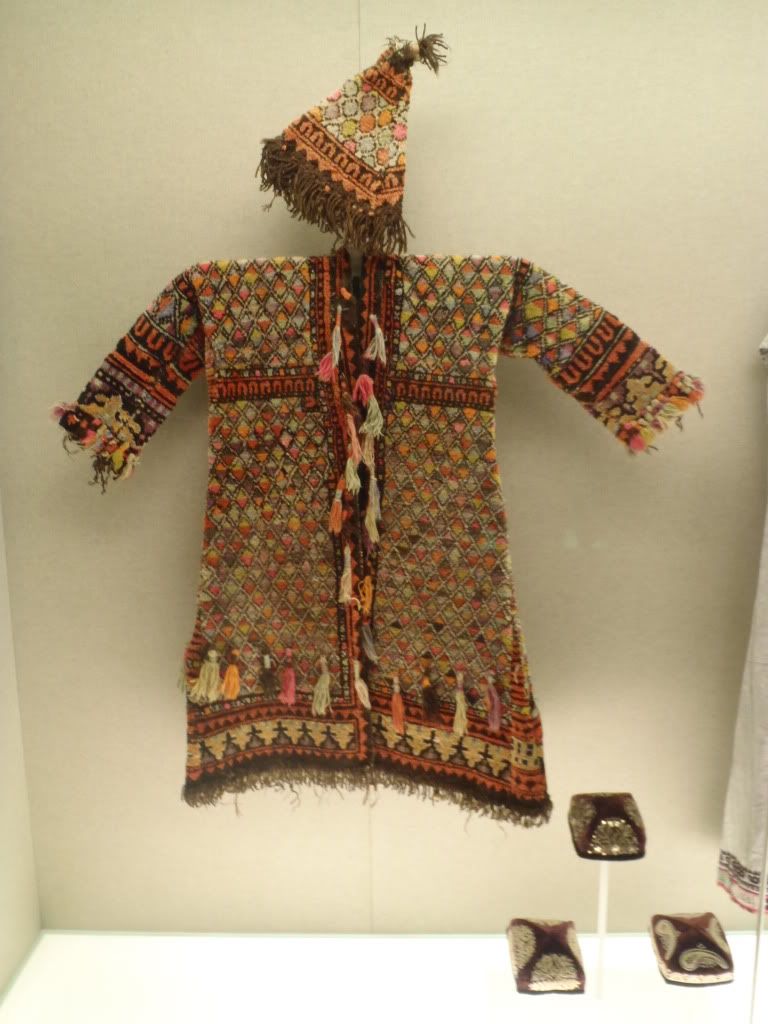
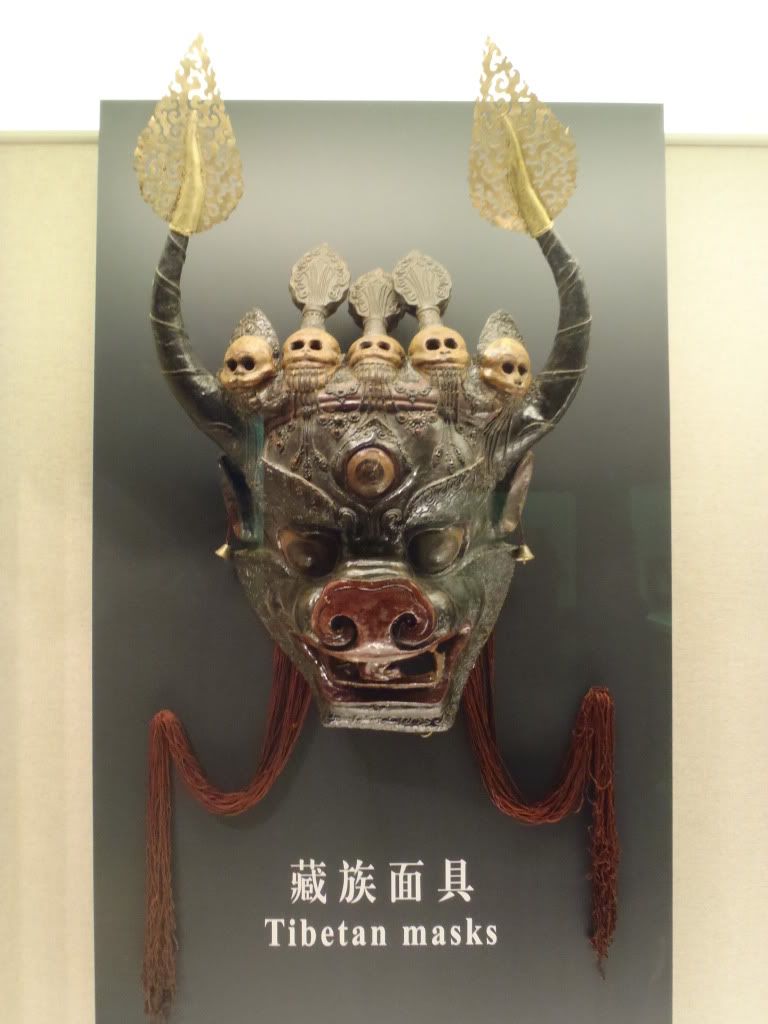
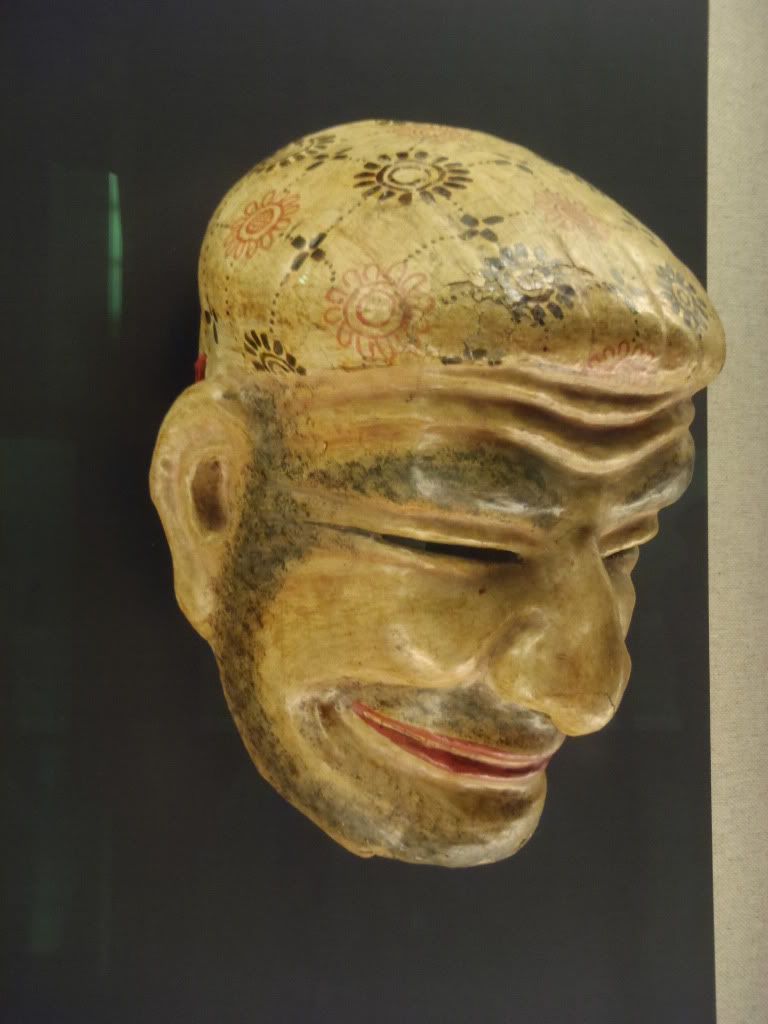
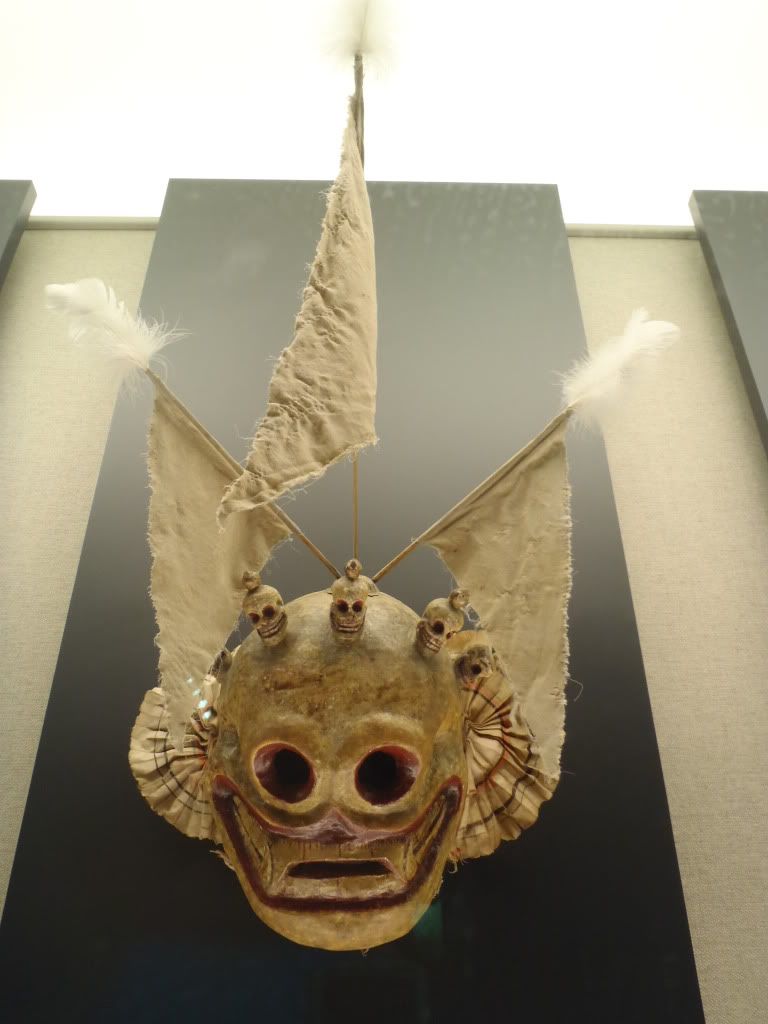
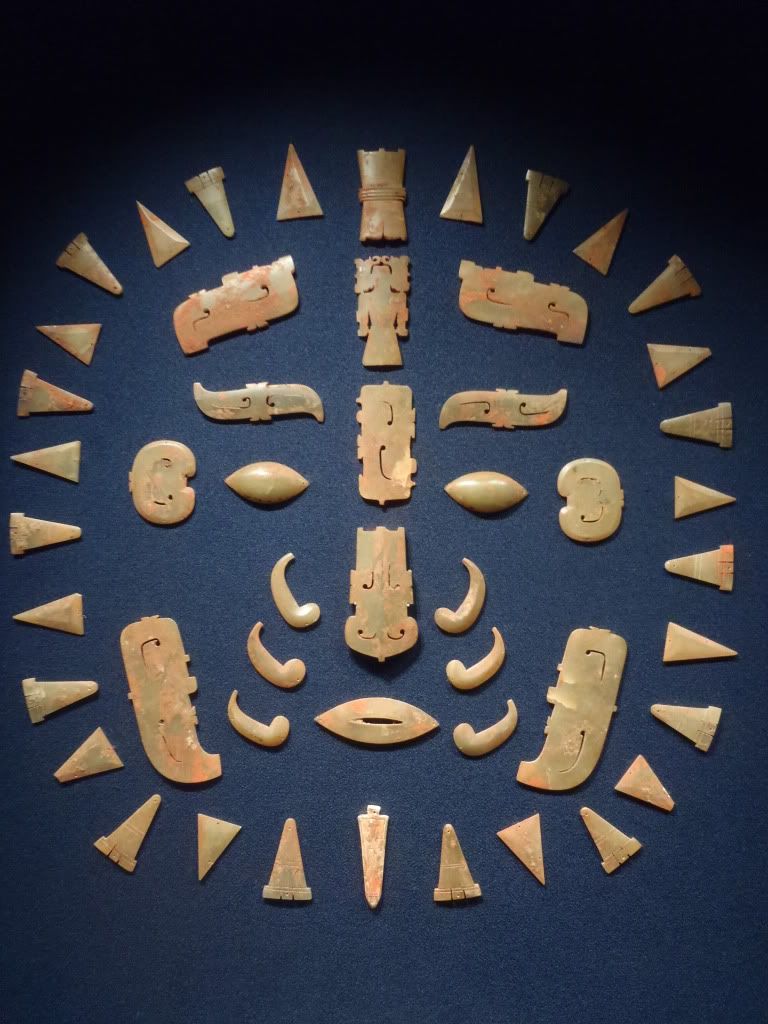
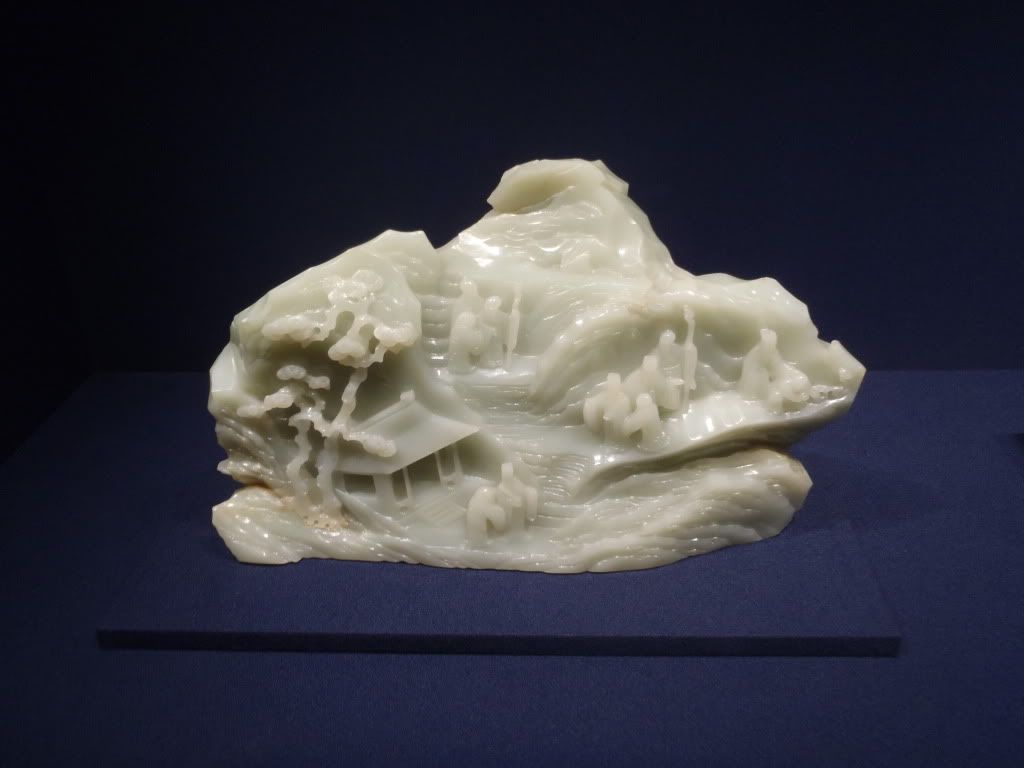
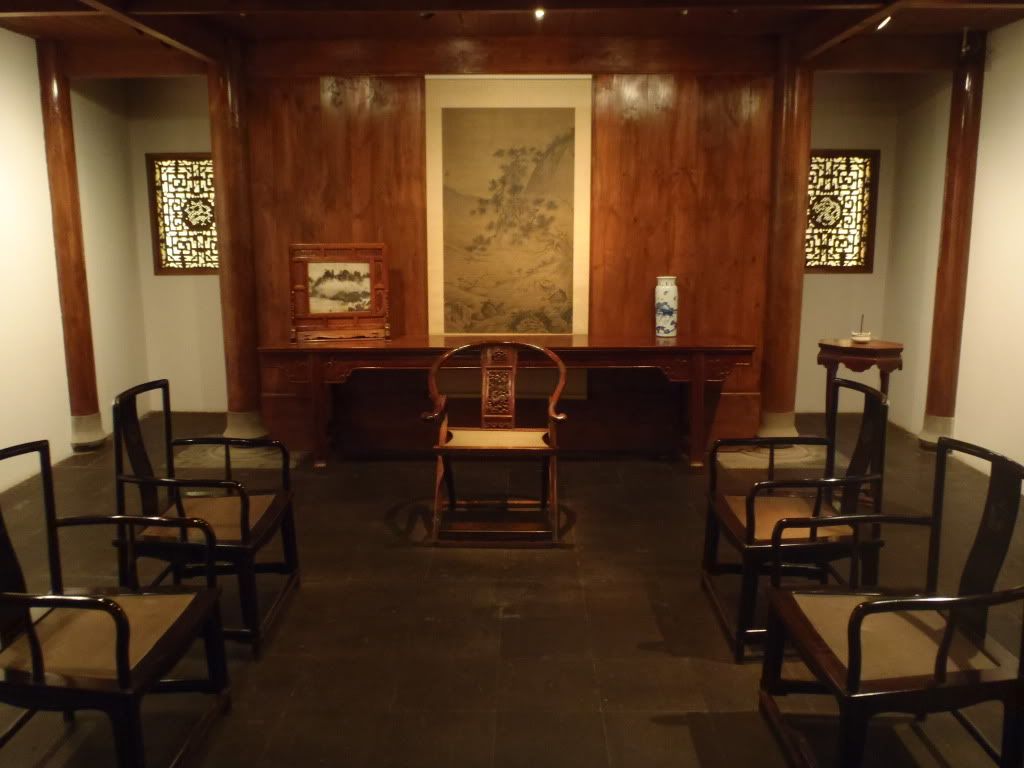
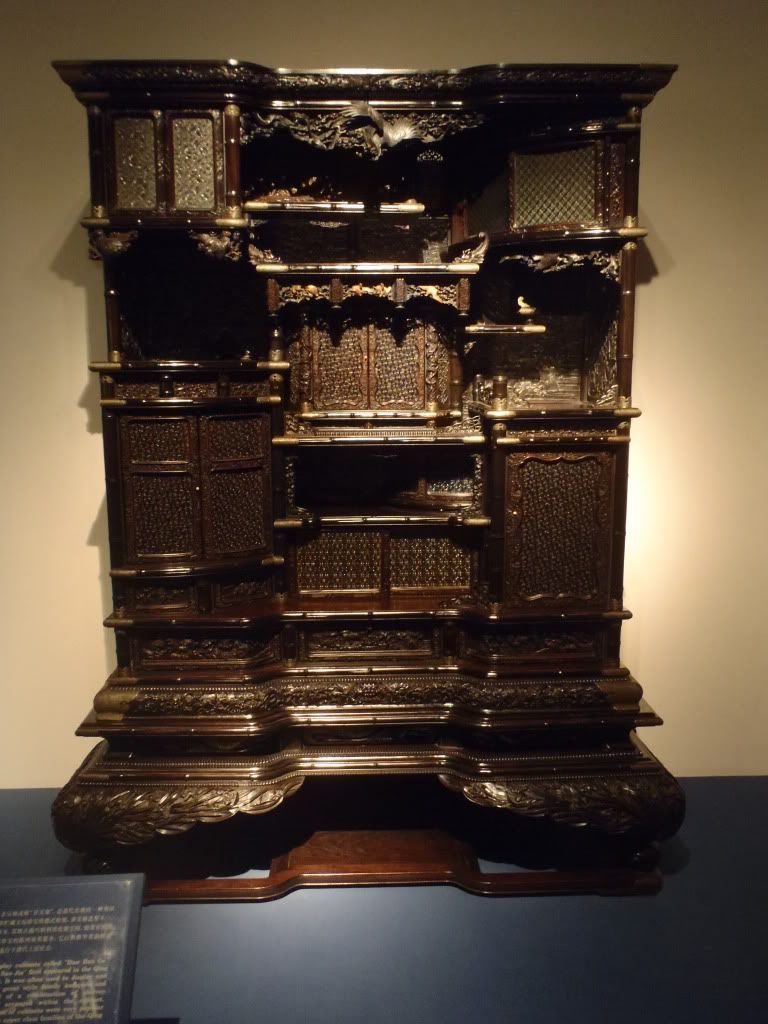
Henk had gotten me an audio guide for the museum so we returned it before we left, heading next to an art museum which we found already closed (the annoying thing about Chinese museums is that they all close their doors one hour before the officially listed closing time… in other words, if you want to just quickly walk through a museum to check it out in the last half hour it is open you are out of luck) so instead we made plans to find a Western-style grocery store. We promised our hosts a delicious dinner prepared by us so we needed to find the food first! First we headed towards East Nanjing Road to look at the historic 1926 No. 1 Food Store and the No. 1 Department Store which the Lonely Planet lists as formerly one of China’s largest and most famous department stores. Finally, Henk showed me the art deco Liza Hardoon Building. A few of the markets inside had various food festivals going on, but didn’t prove that interesting.
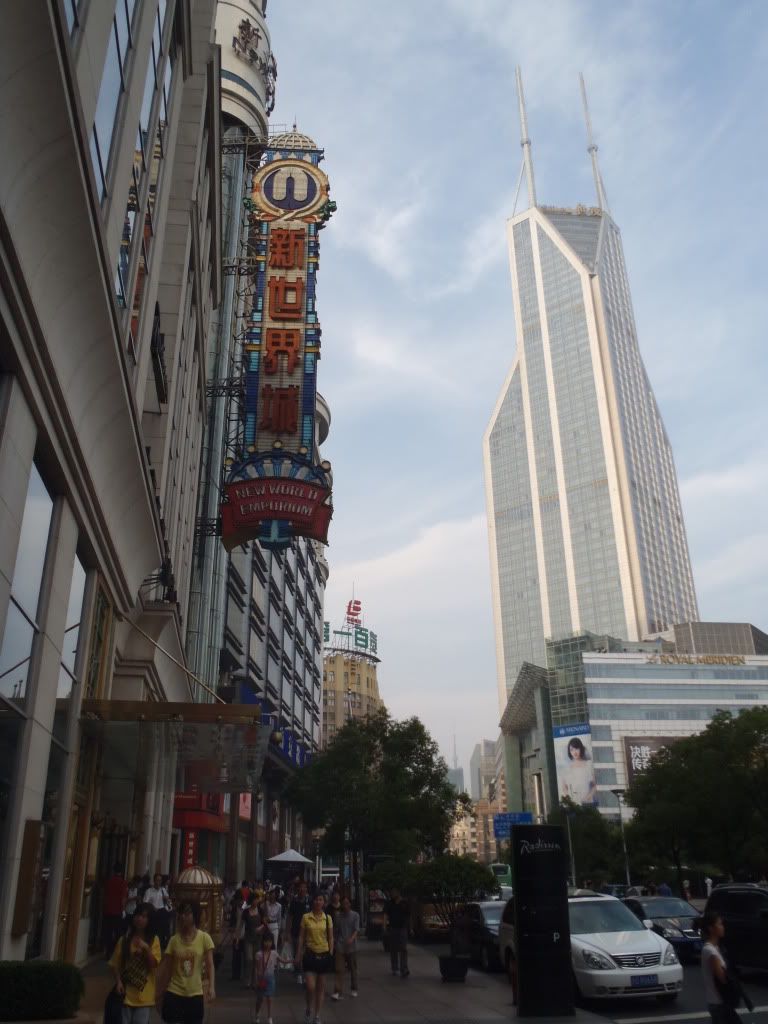
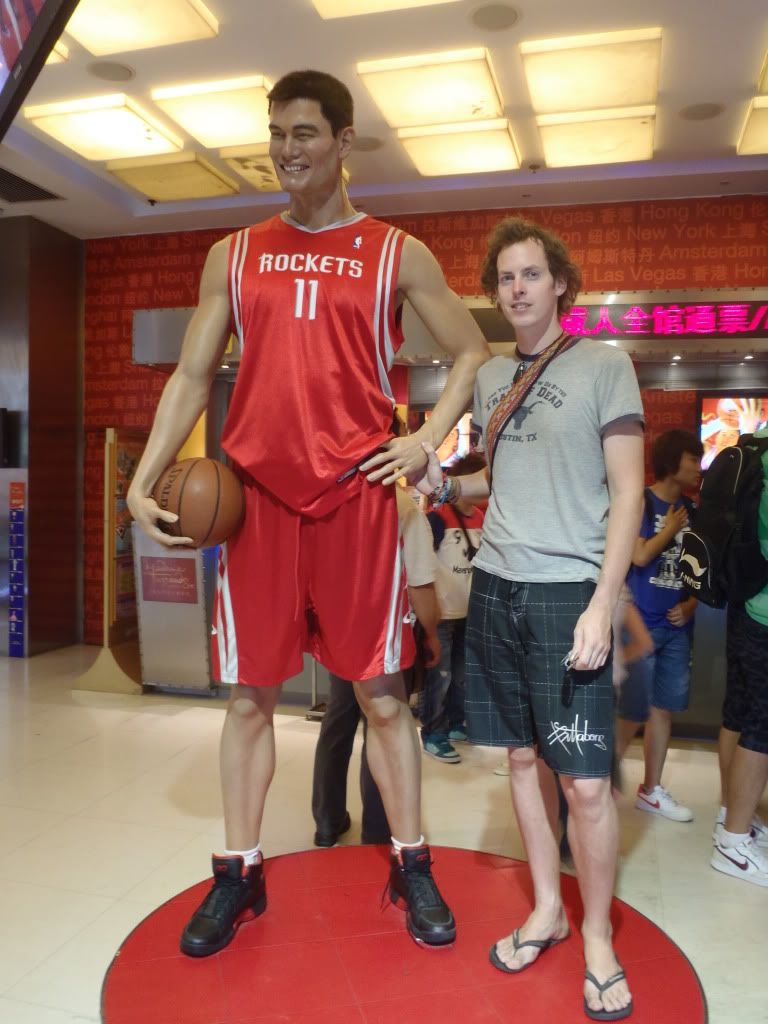
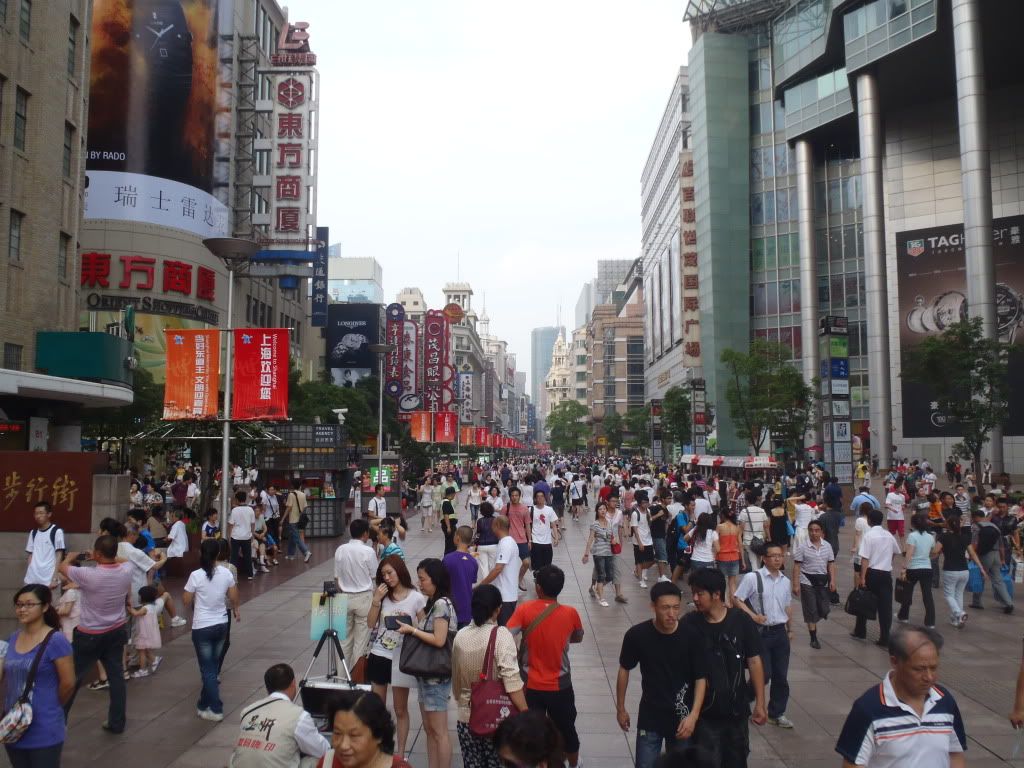
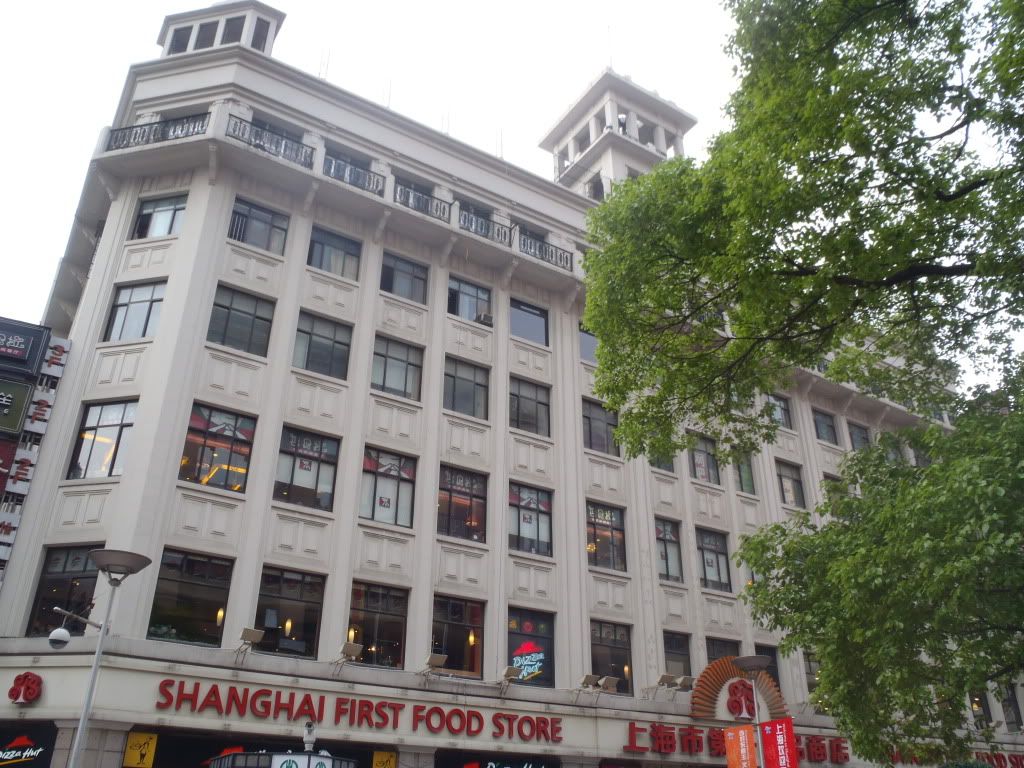
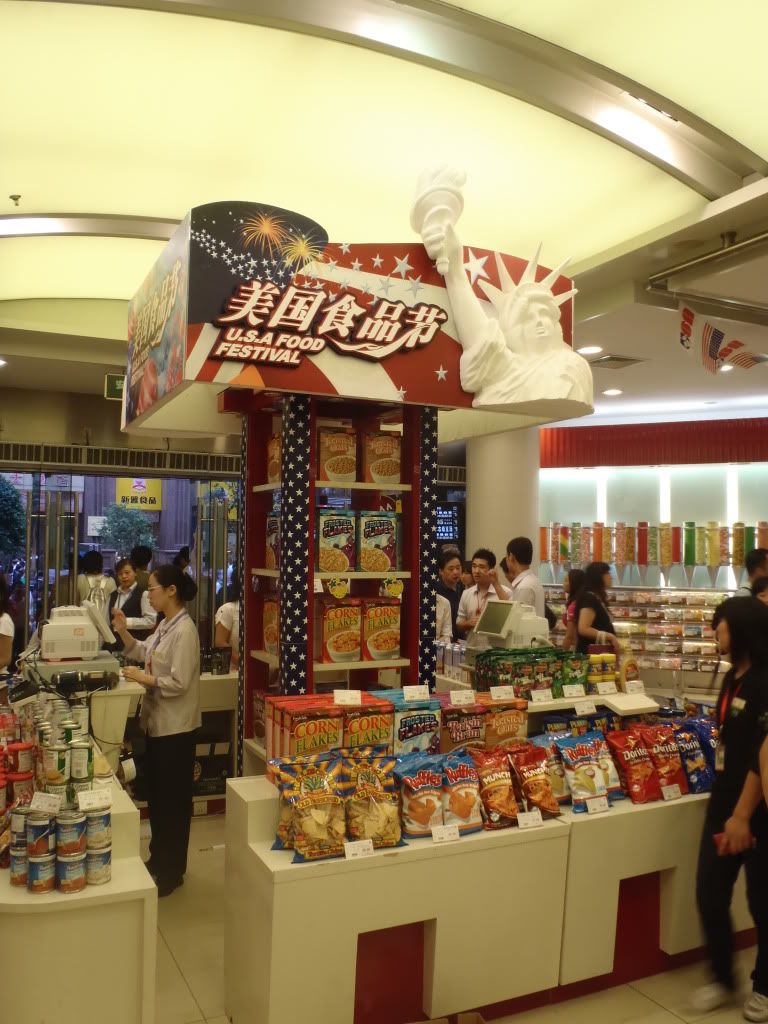
Plus the first couple of stores we tried either didn’t have the things we wanted or were insanely overpriced. Eventually we found a supermarket in the Subway station that had pasta and sauce, but the service in the store was quite horrible and slow, so it ended up being yet another stressful Chinese experience to add to the list! But eventually we got our groceries, stopped for some fruit and ice-cream, and went back to their apartment where Henk and I (Henk mostly, because I had to be on Skype) prepared P & J a small feast! Our famous special pasta, a side salad, and an ice-cream dessert completed the meal and John offered us some delicious cheese he had picked-up earlier as an after-dinner snack.
July 8th happened to be a Thursday and since we planned to visit the Shanghai Expo on Friday we decided exploring the French Concession (one of the most beautiful and my favorite place in Shanghai) would be the agenda for the day. All of the narrow streets and alleys have this dark and romantic feeling, constructed in small black and red bricks. The French Concession by Wiki:
“The French Concession was a foreign concession in Shanghai, Republic of China from 1849 until 1946, and it was progressively expanded in the late 19th and early 20th centuries. The concession came to an end in practice in 1943 when the Vichy French government signed it over to the pro-Japanese puppet government in Nanking. The area covered by the former French Concession was, for much of the 20th century, the premier residential and retail districts of Shanghai, and was also the centre of Catholicism in Shanghai. Despite rampant re-development over the last few decades, the area retains a distinct character, and is a popular tourist destination.”
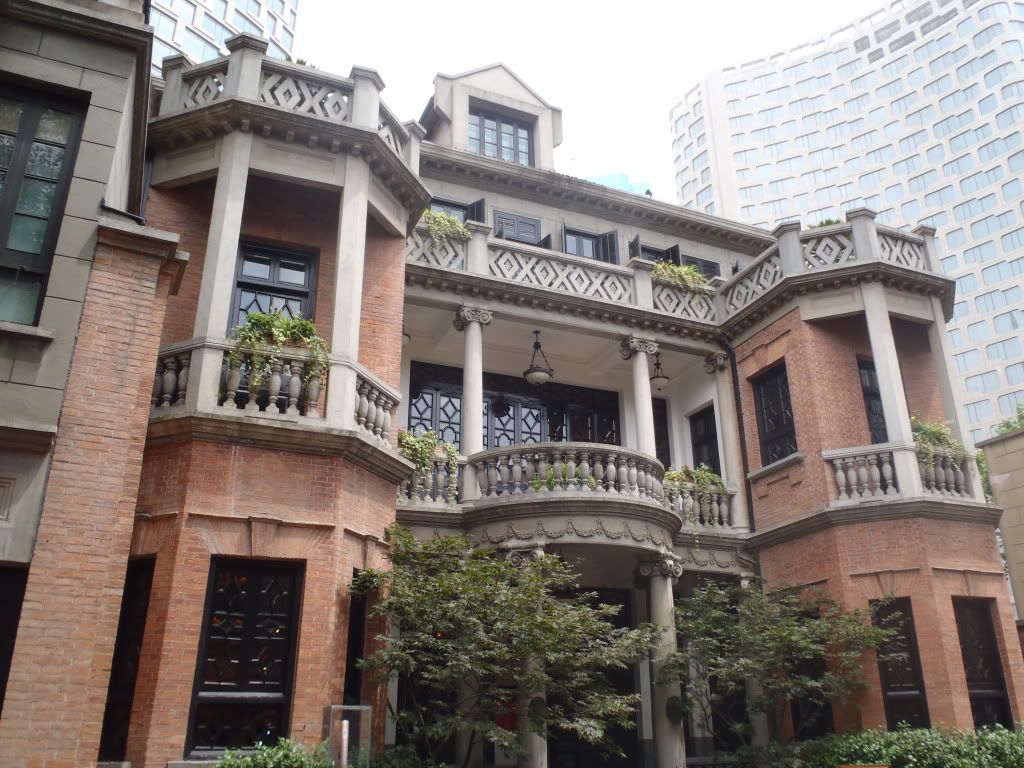
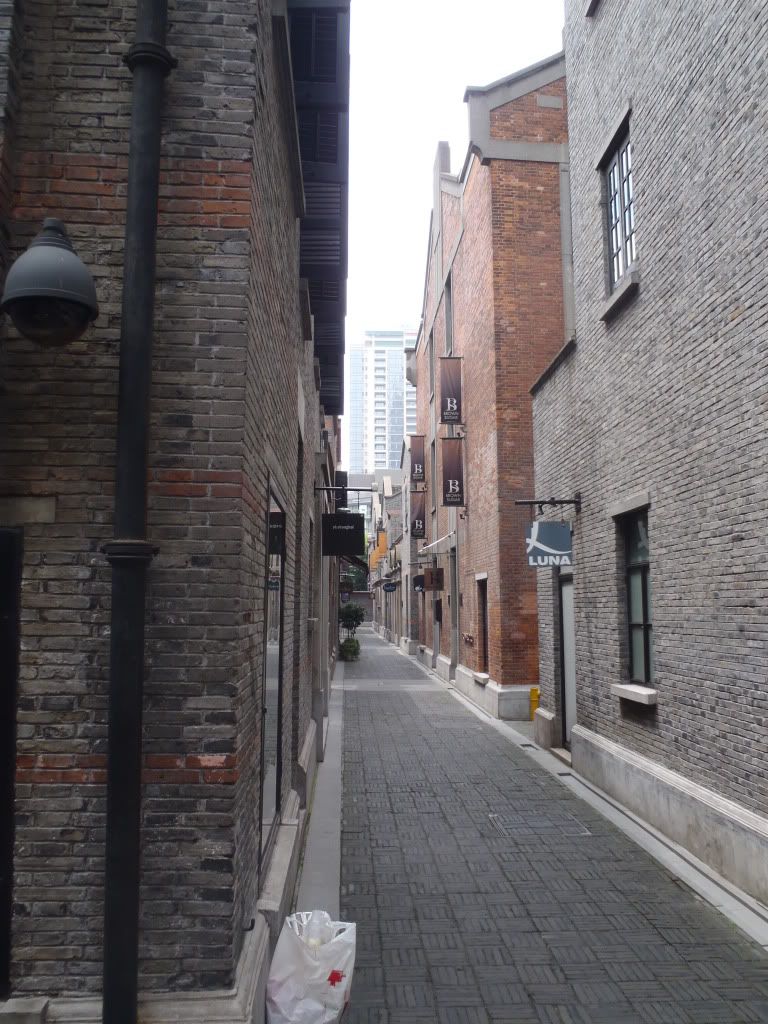
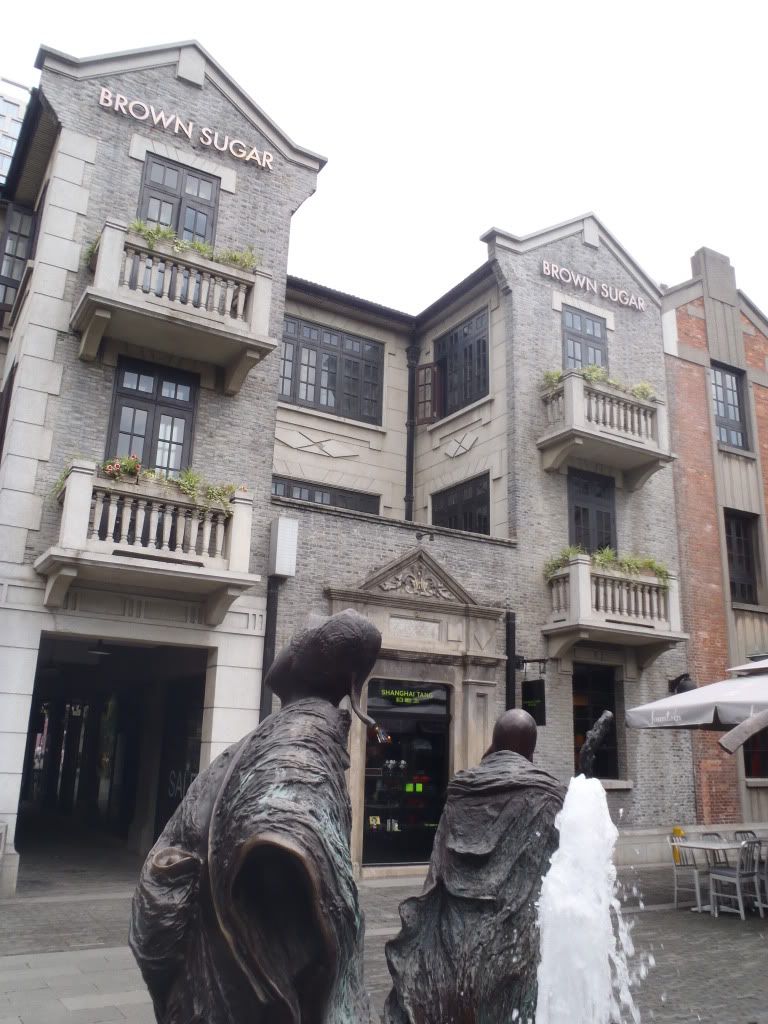
One of the first places we popped into was an exhibit on the founding of communism in China. We learned how the May 4th movement of 1919 brought China from a rising economy moving towards communism. By July 23rd, 1921, the First National Congress of the Communist Party of China was convened in Shanghai, electing their leading body and adopting ‘The Party Program.’ When police from the French Concession heard about the meeting they shut it down – but the Chinese revolution did not stop. The exhibit continued, showing us the table party members met at, the quarters they stayed/visited, and wax figures of what the key founding members looked like. Next we crossed the street to what we thought might be the Shanghai Postal Museum but instead was a tiny post office with a couple of exhibits that were of little interest… the place seemed to be almost a ‘Museum on the Postal Museum!’ Strange. One thing to note was an awesome picture from 1911 of the Shanghai Postal Service on their first bicycles!
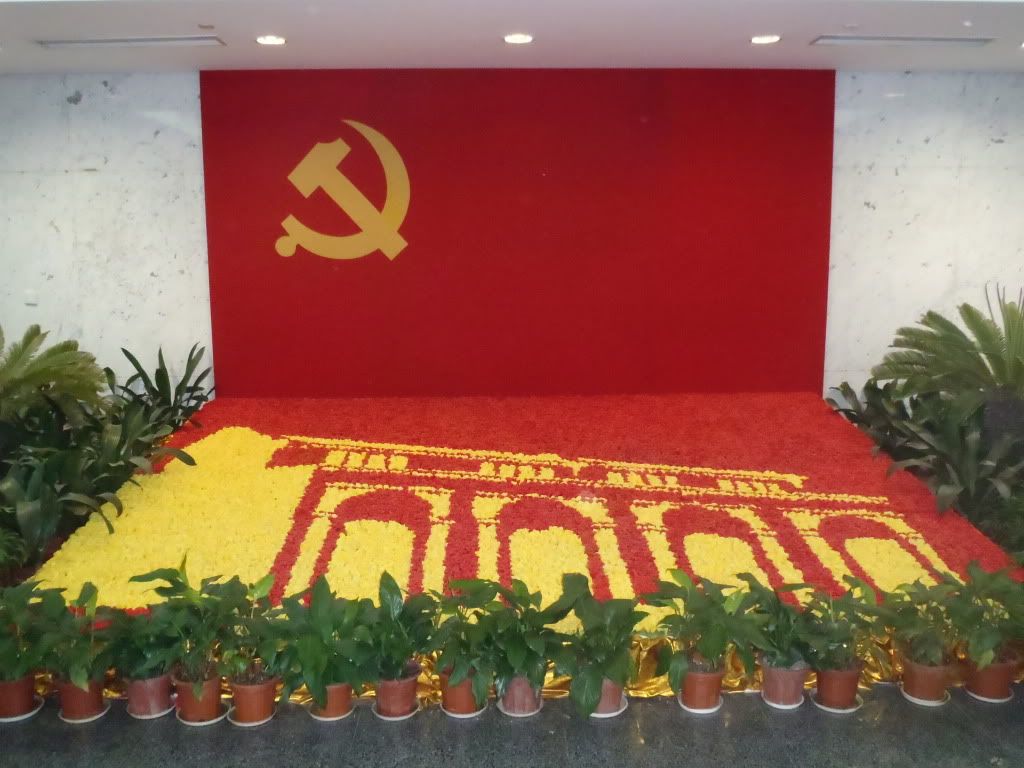
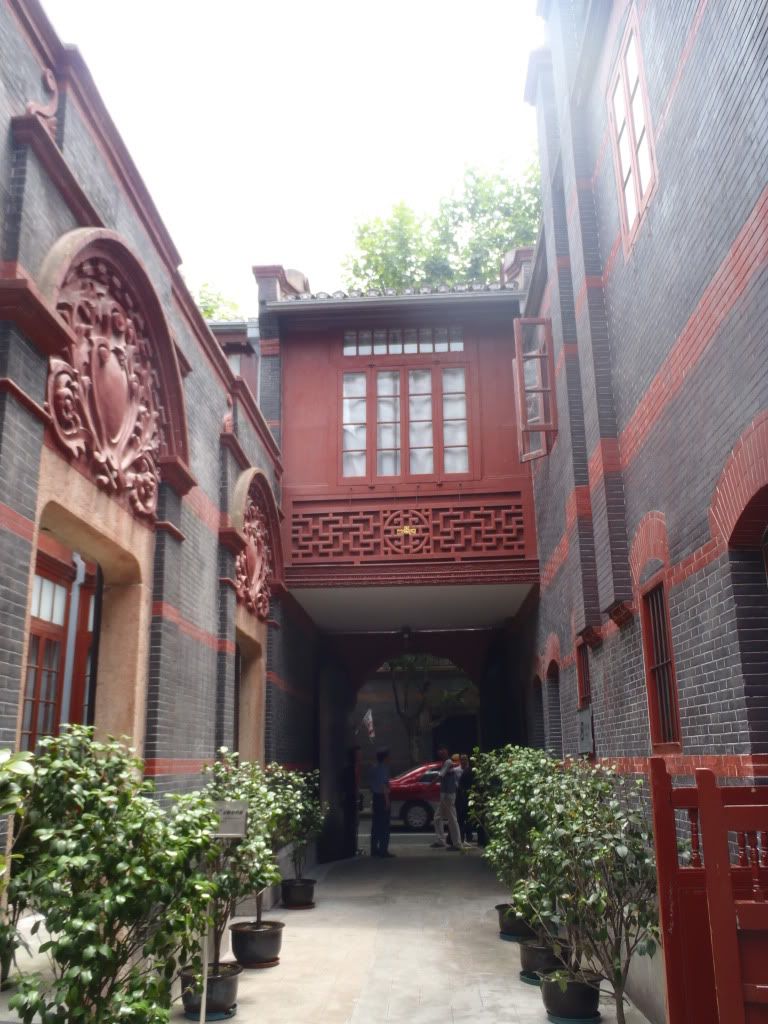
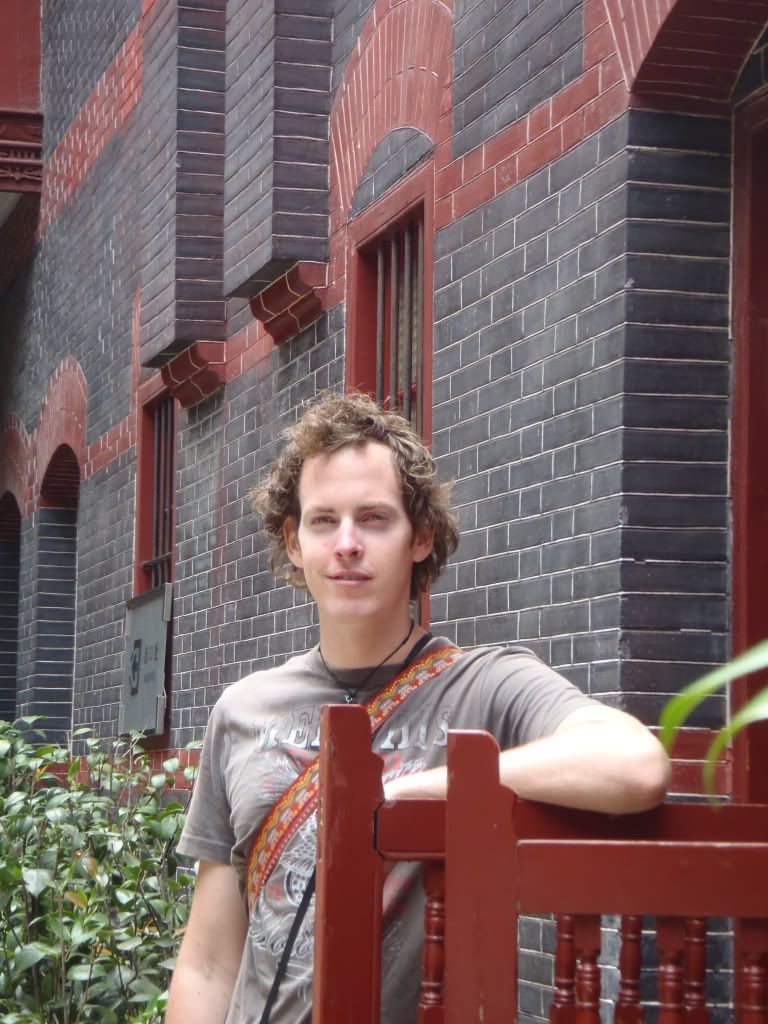
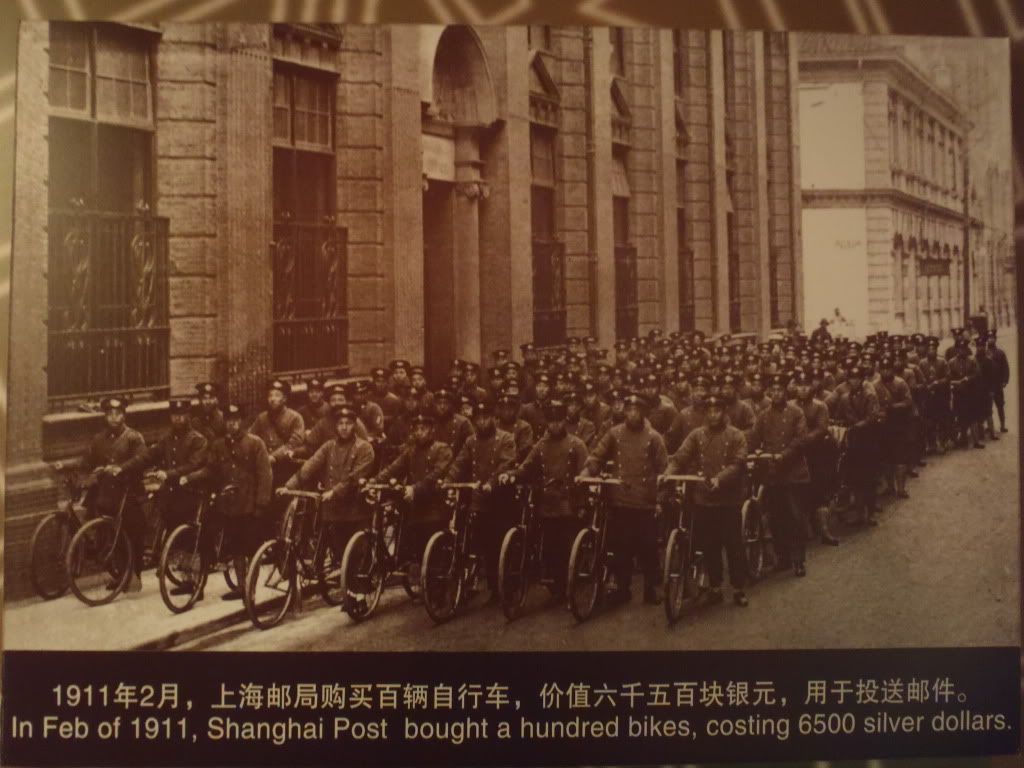
Before the Communist Party exhibit we had checked out the example home (in a Shanghai Shikumen Building) but decided to return there a bit later. We went there now for an ‘open house’ to tour the building. This was a 1930’s style Shanghai building which, according to a listed sign, were “…commonly found in courtyards and alleyways.” We saw the living room, kitchen, bedrooms – all the typical apartment areas. One of the more unique rooms was the tingzijian; a small room between the first and second floors, near the staircase. These rooms were usually rented out to “starving artist” literature writers by the house owners. Henk and I somehow lost each other going through this house (they are bigger than they look!) and met up again on the outside. Done with the French Concession, we jumped in a taxi and headed to Dr. Sun Yat-sen’s former residence.
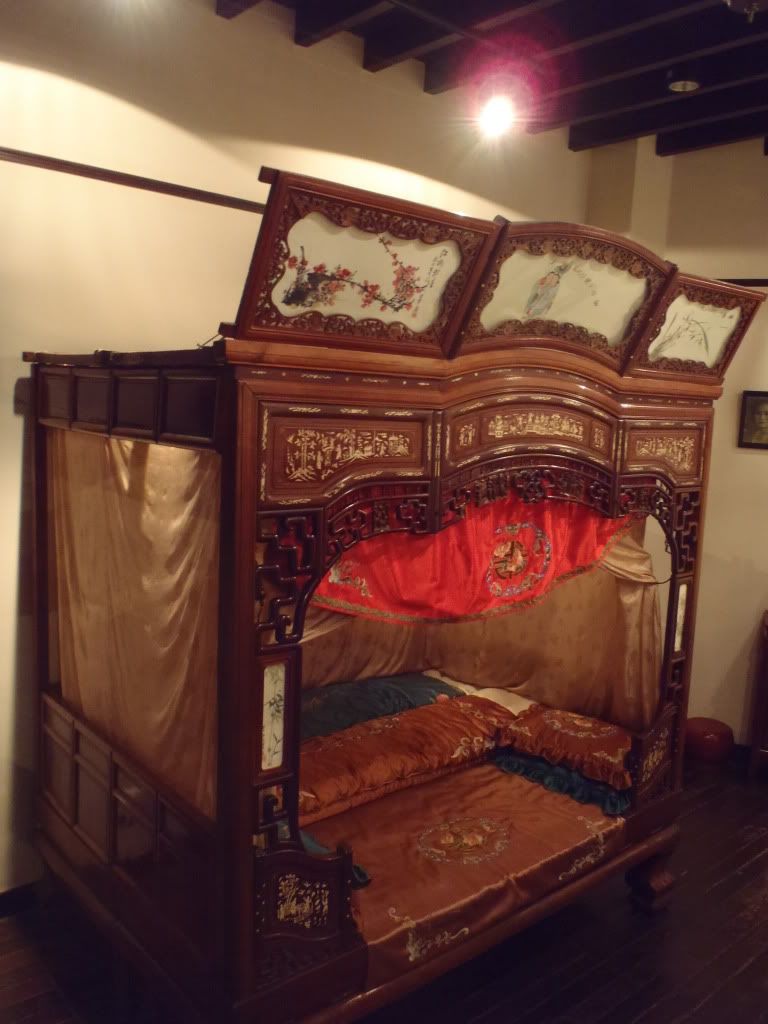
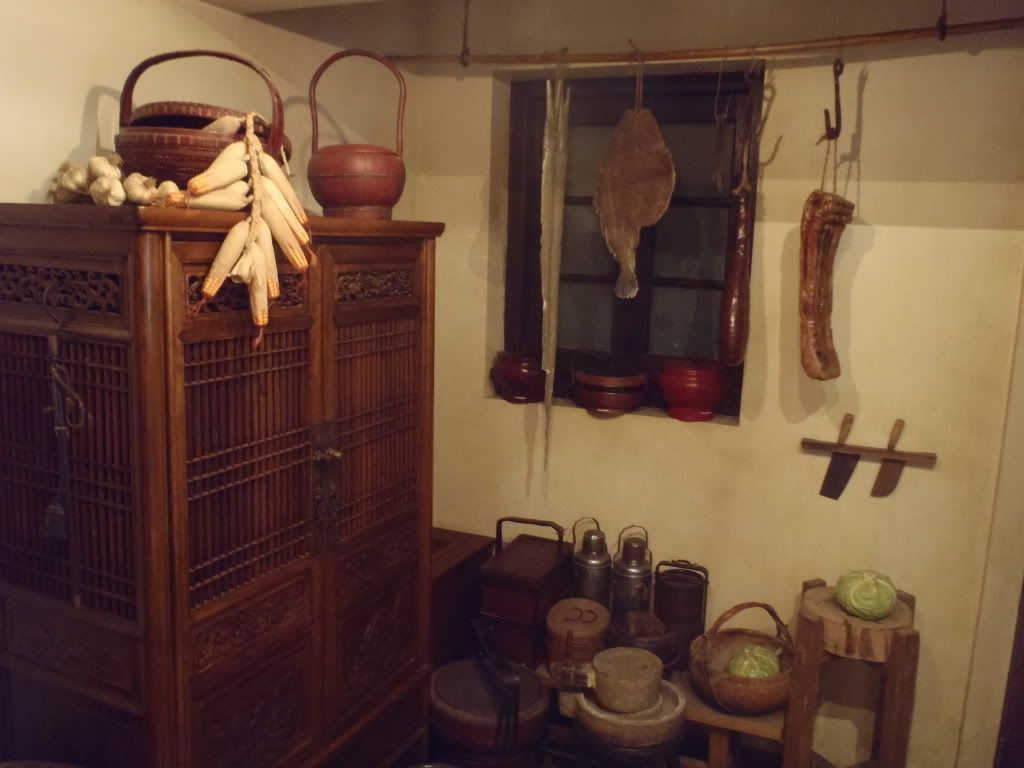
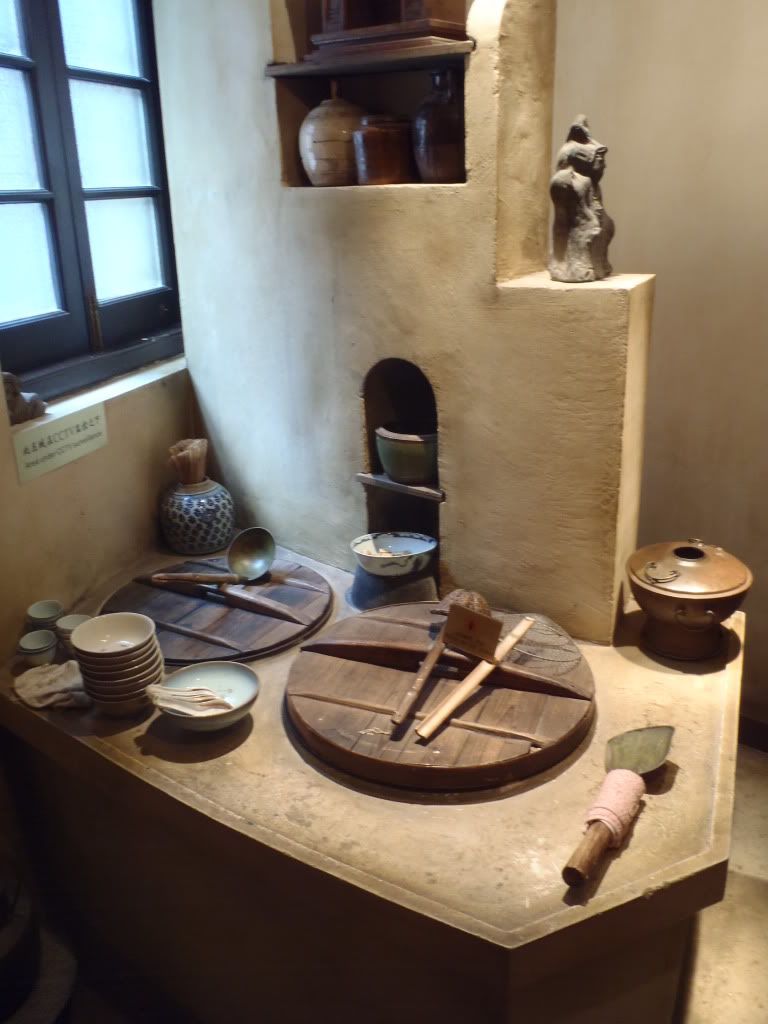
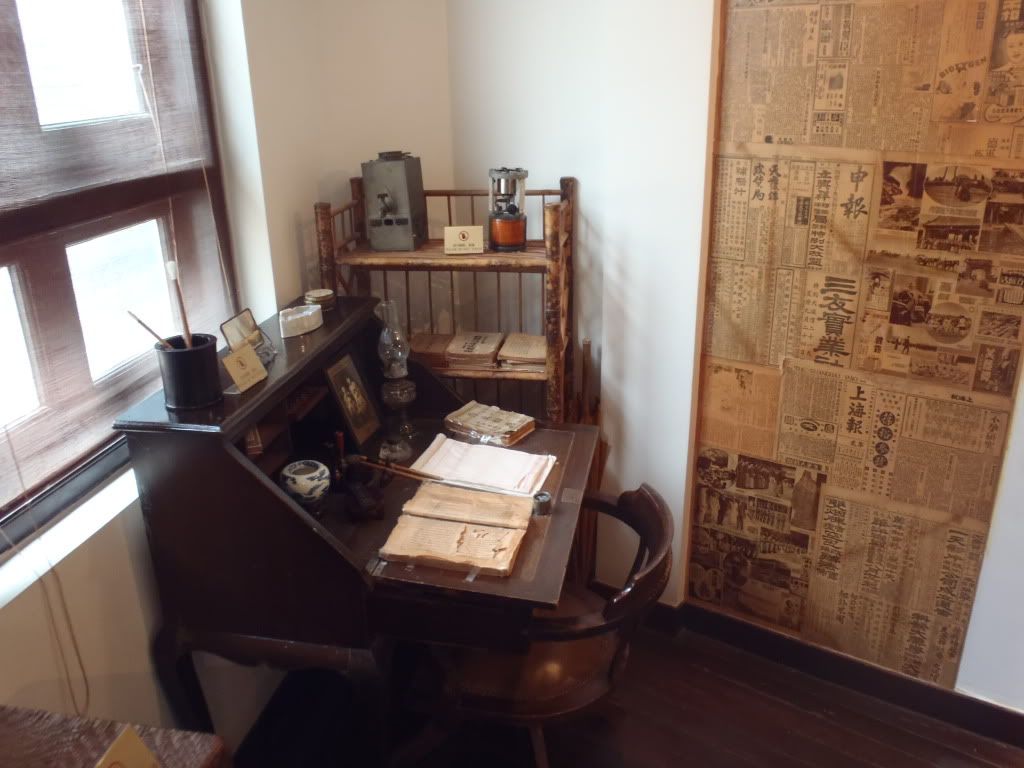
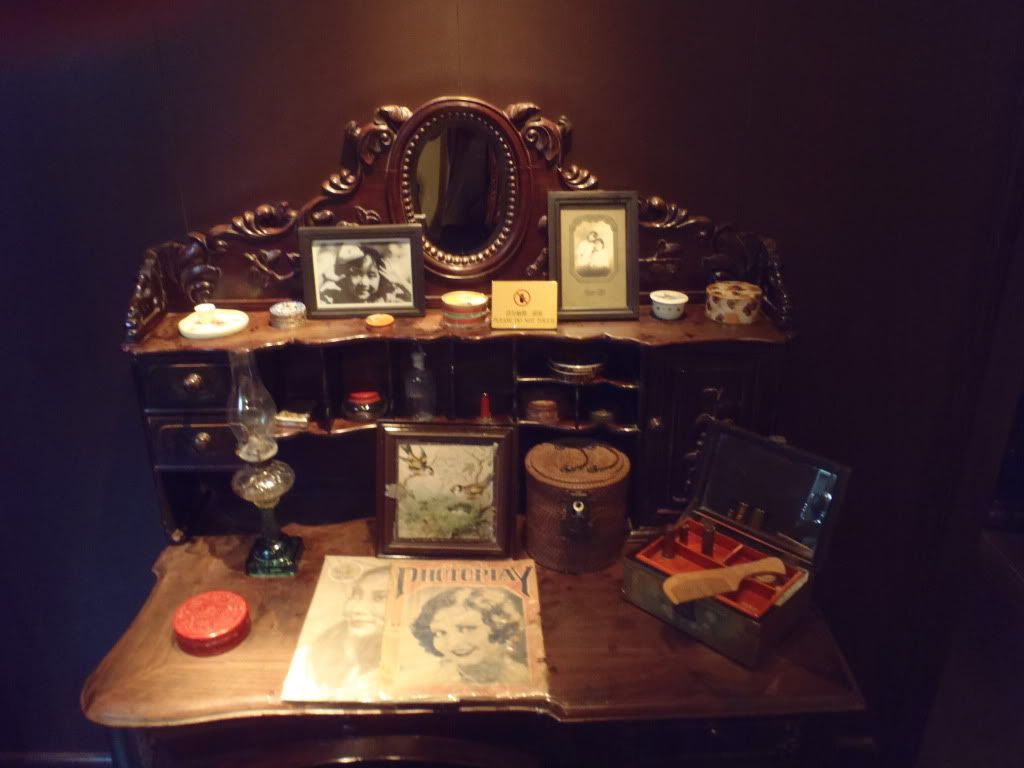
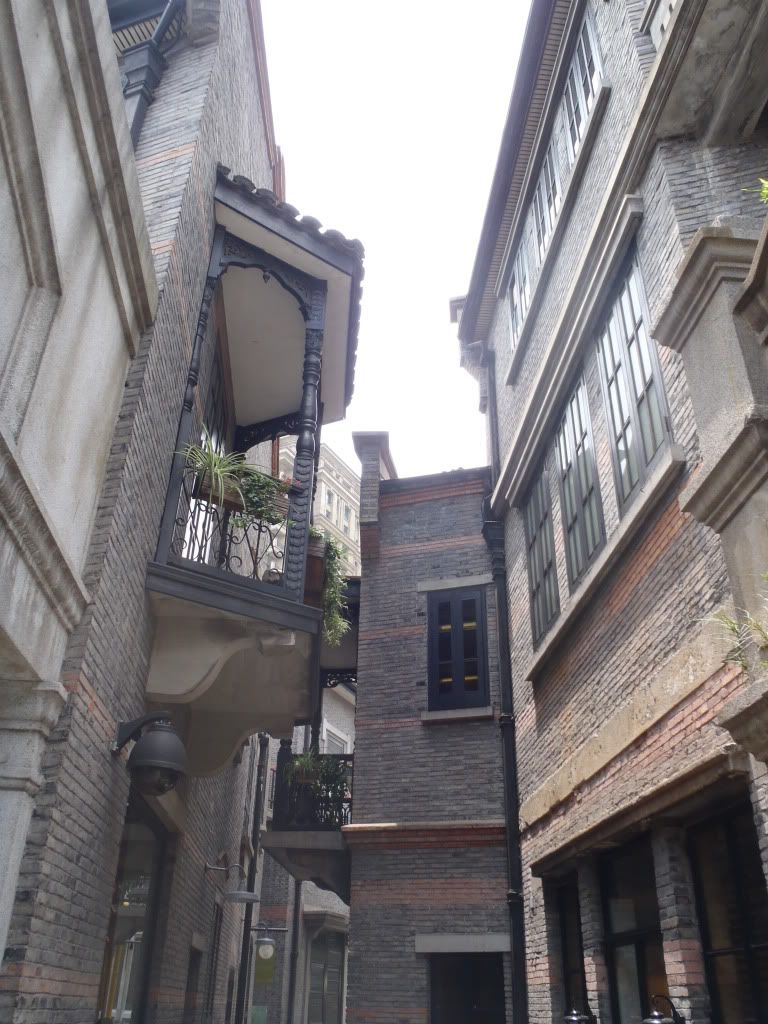
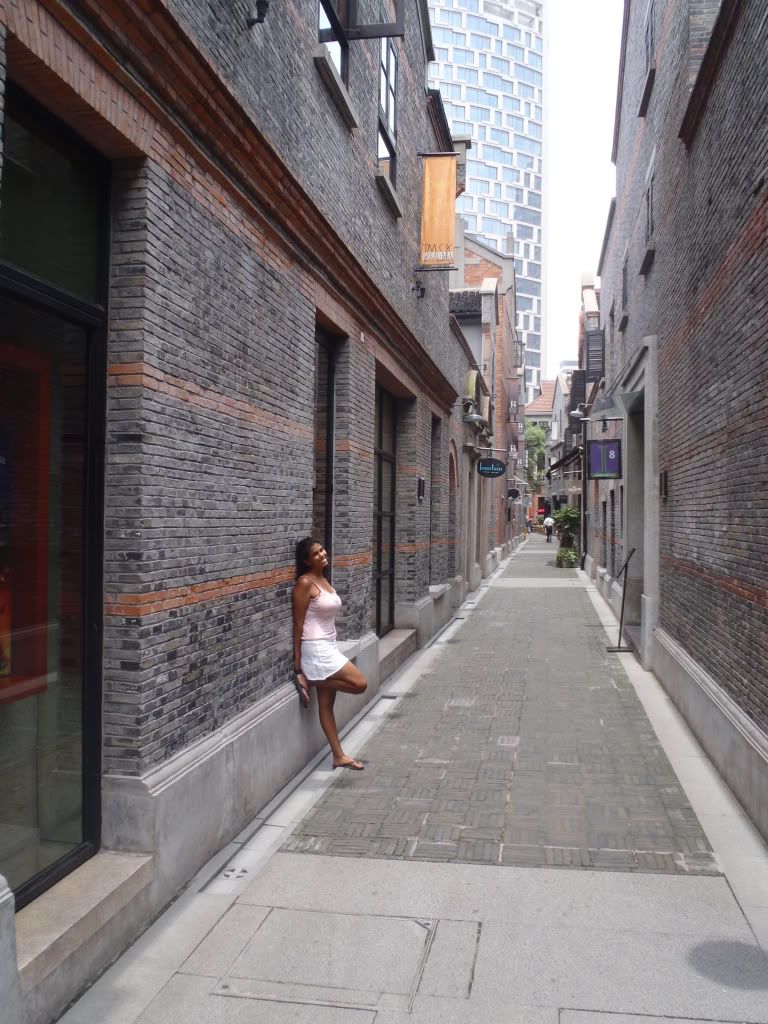
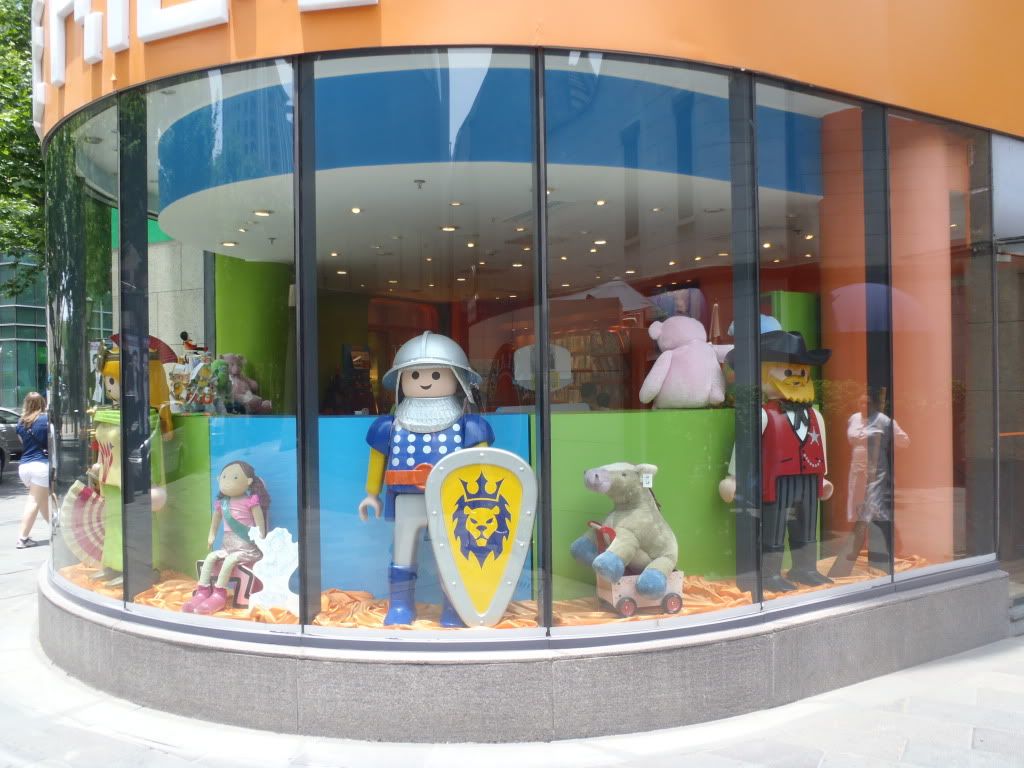
While I attempted to find out if there was anything interesting on the audio guide, we made our way through the museum and soon realized that there was an abundant amount of stuff to see in the cases. In fact, while the guide I had gave decent explanations, the running time of 2+ minutes per item would have taken hours to get through! I don’t understand why it seems to be so difficult for museums to make short, simple yet educating audio guides. There are SO many bad ones out there! (Someone get on that, and call me up to test it for you.) Dr. Sun Yat-sen was a revolutionary who advocated abolition of the Chinese monarchy and the establishment of a Chinese republic. He drew up plans for a new vision of China while living in the residence we stood in – which has now been transformed into a museum. Sun Yat-sen lived here with his wife but also worked on his important works on the development of China and had press conferences and politically-charged meetings here as well. We weren’t allowed to take many pictures and the house itself didn’t take long to get through. Soon we were in a taxi yet again.
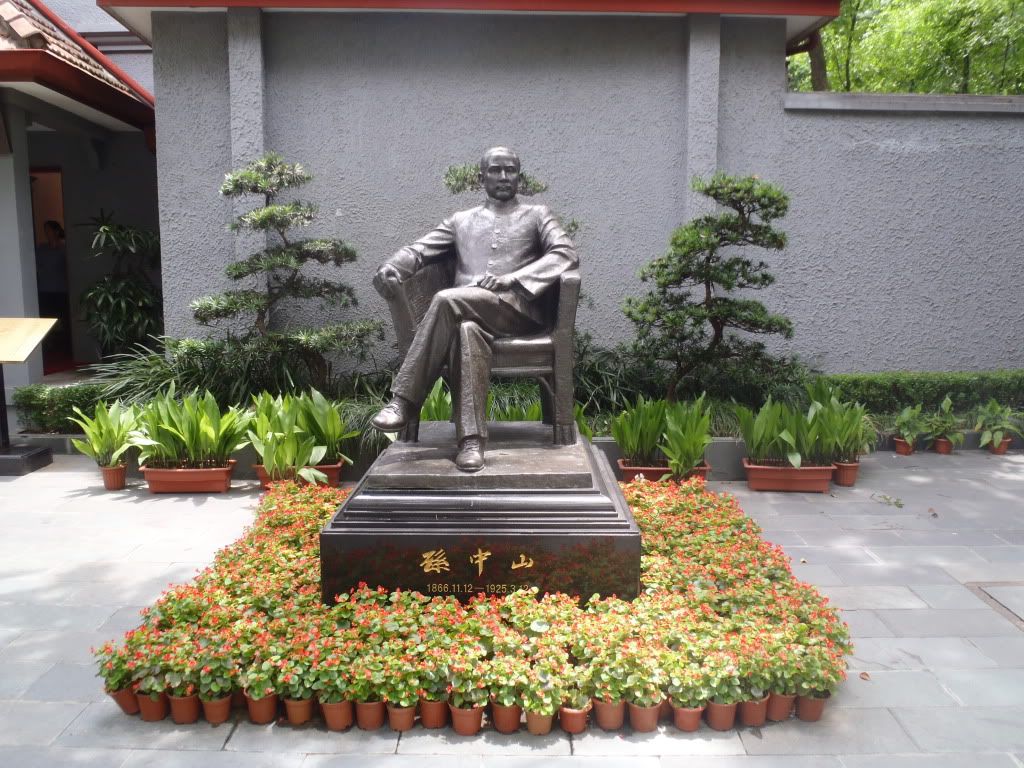
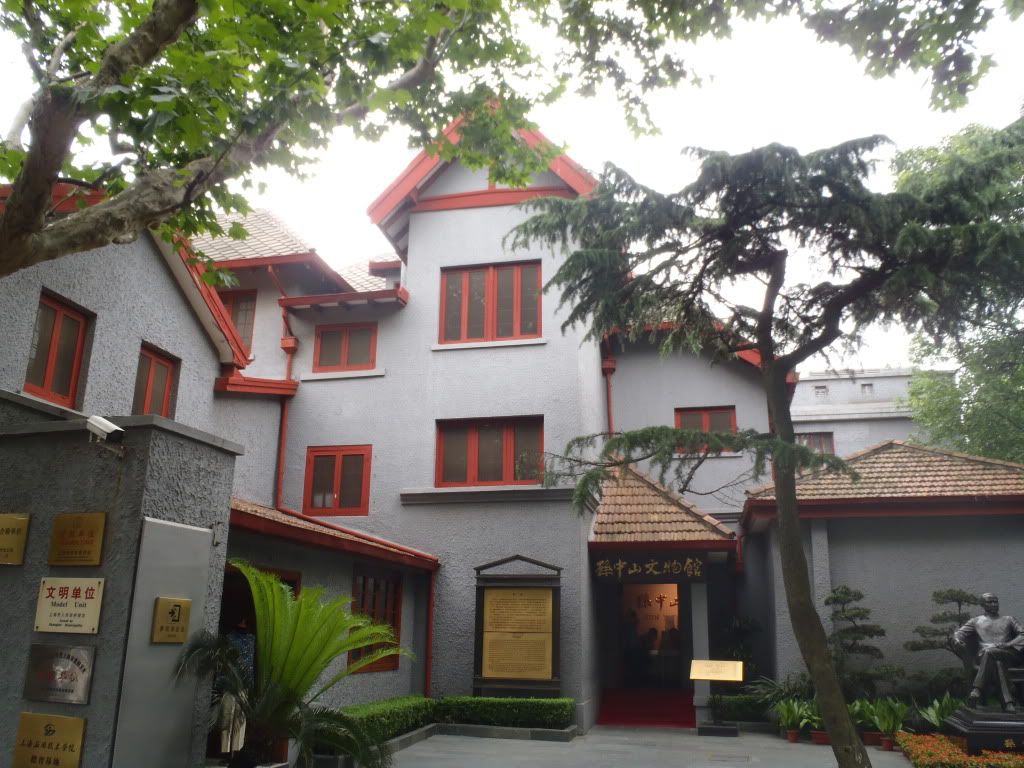
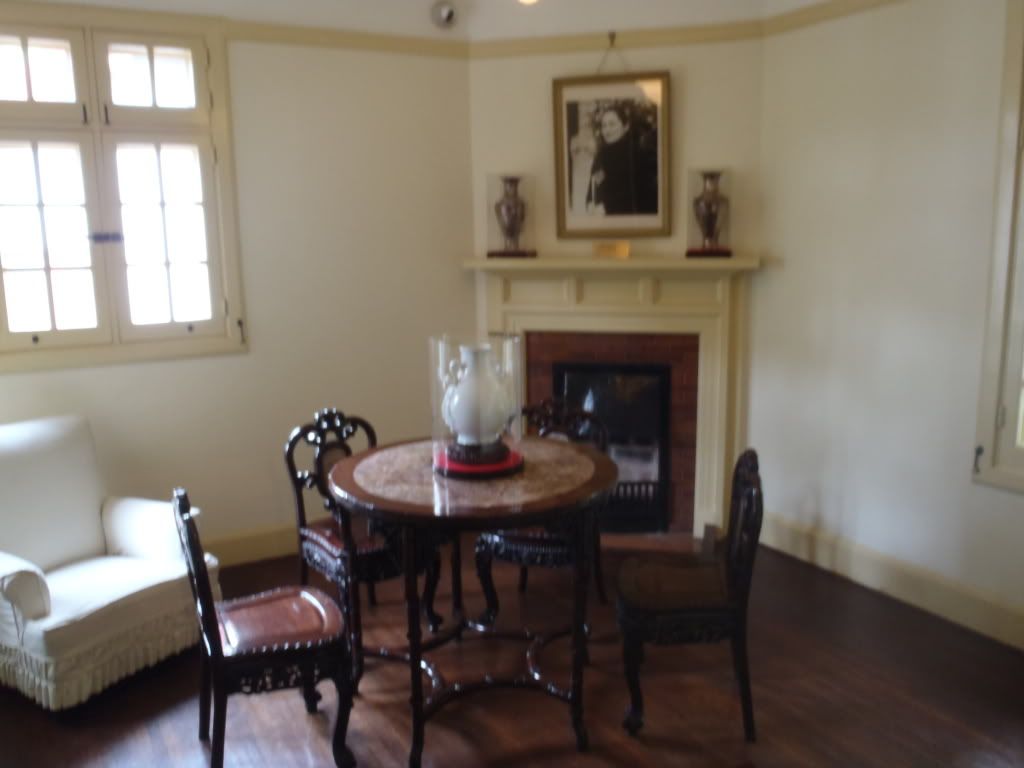
Since we were going to the Art Museum (it would be open this time!) we knew we would be near the Subway and could get some healthy subs to fill us up. Since we had left Malaysia we hadn’t really been able to find many Subways and we were intent on taking advantage of reasonably-priced healthy food. Anyways, the Art Museum had a few exhibits many that seemed to be quite focused on ‘the female body!’ Here are some of our favorite images of artist Feng Hai (concerned with revisiting vast space/slow times,) Zhou Chunya (concerned with the converging of East and West,) and Bettina Rheim (concerned with photographing hot celebrity women in the semi-nude!) The next area had a ‘touch-screen’ gallery of TV screens rather than actual artwork, showing images from the Uffizi Gallery in France. I have to say neither of us were that impressed with the way the exhibit was done and thus have to assume the museum simply can’t afford to host the actual works!
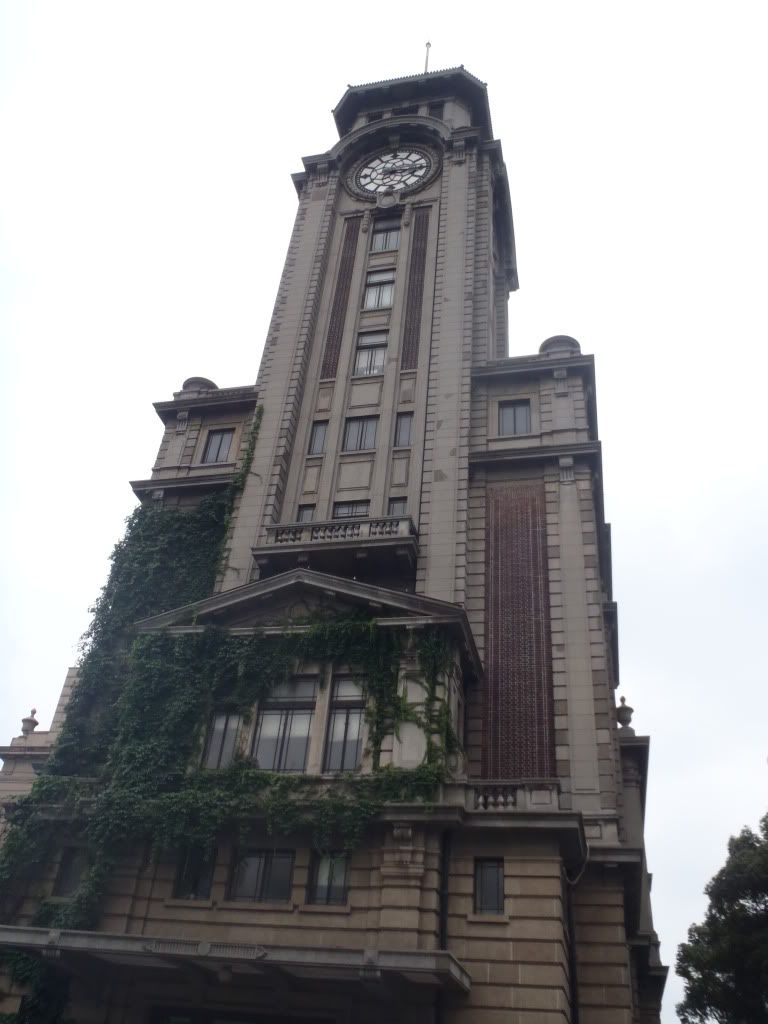
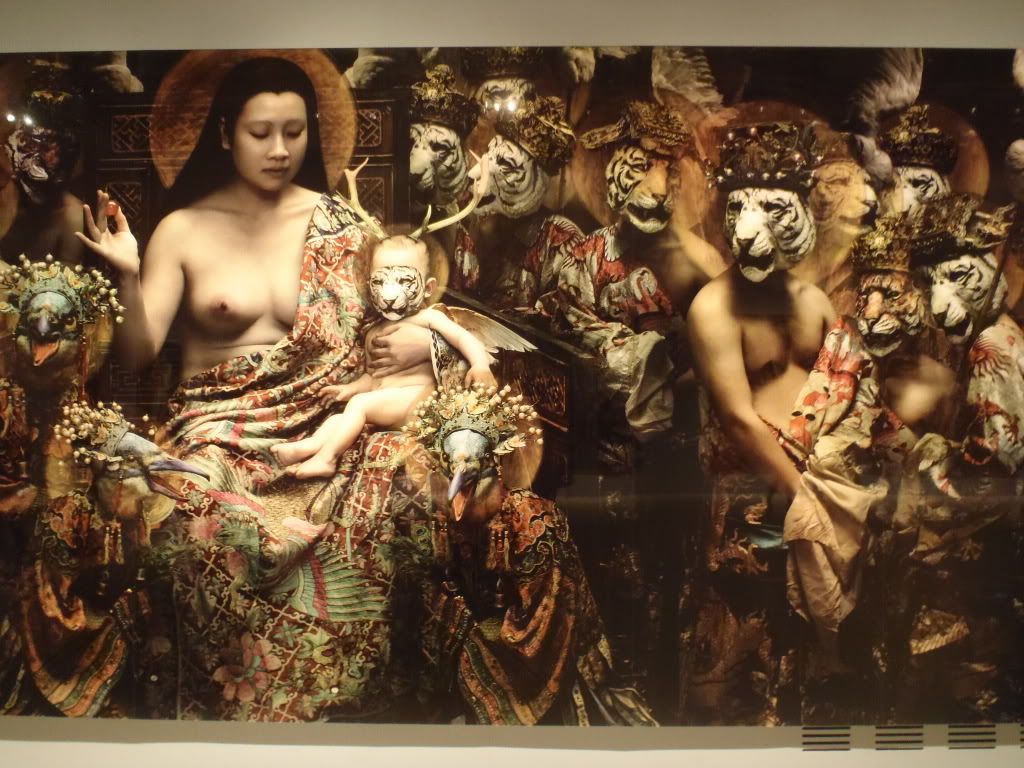
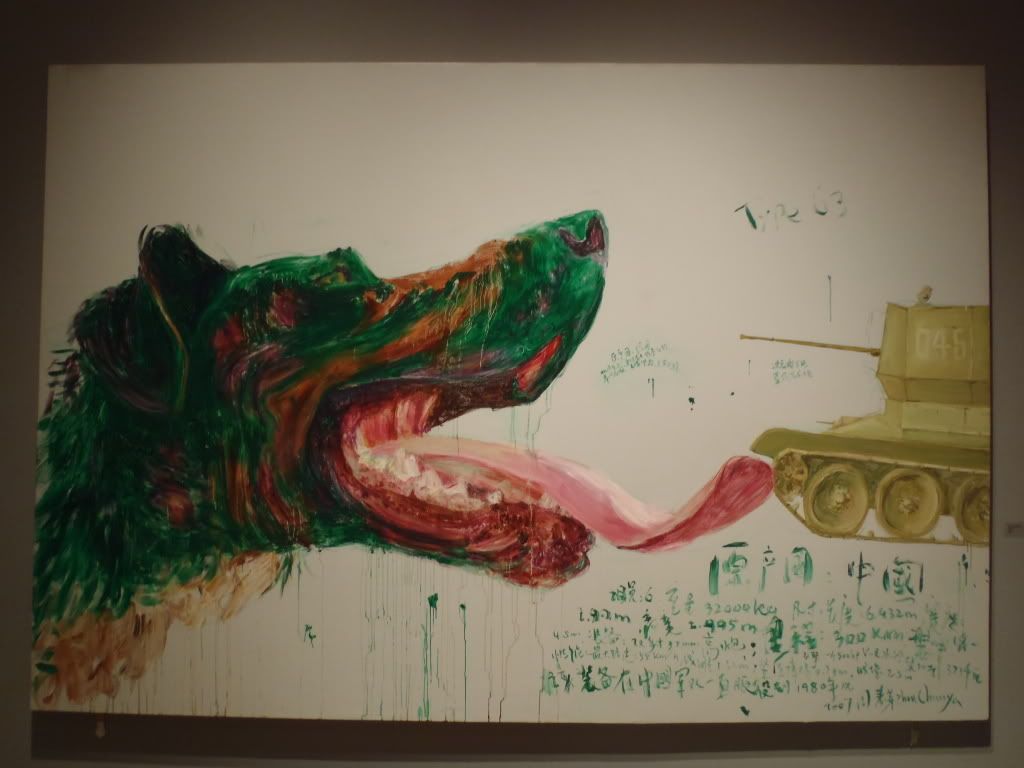
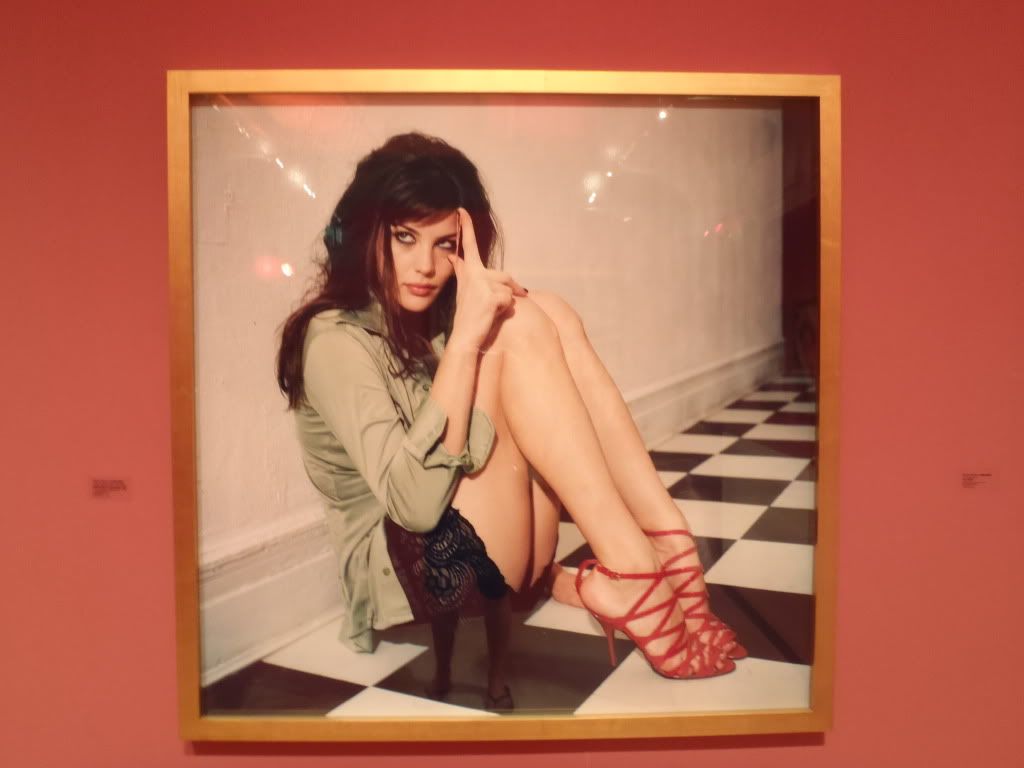
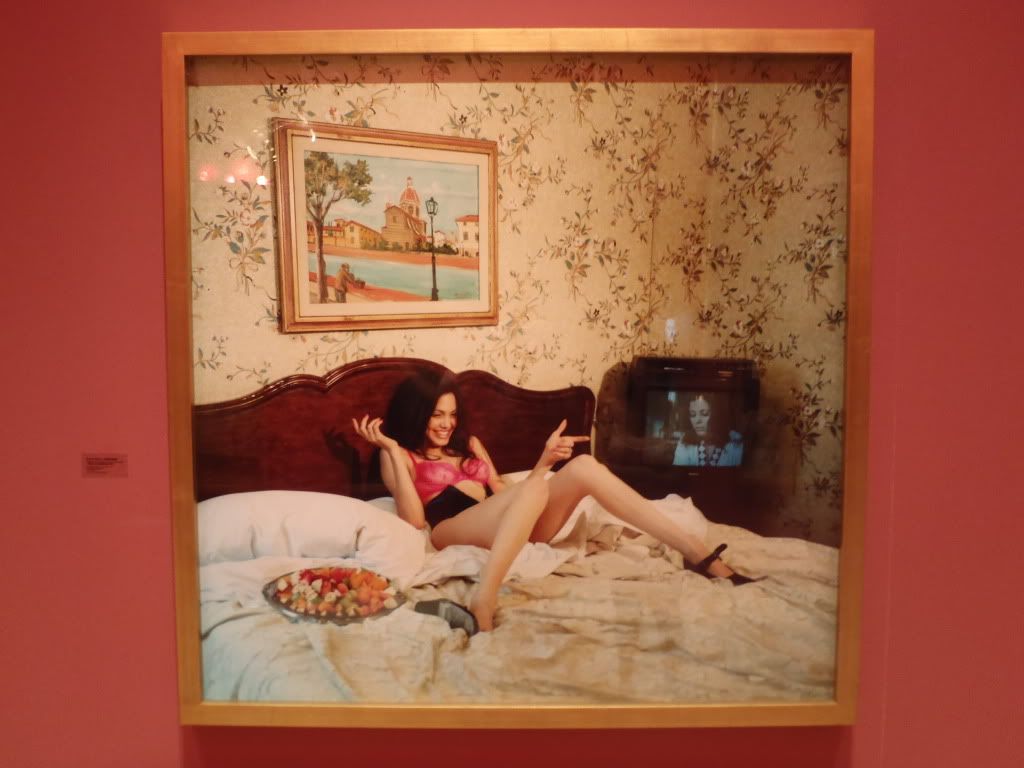
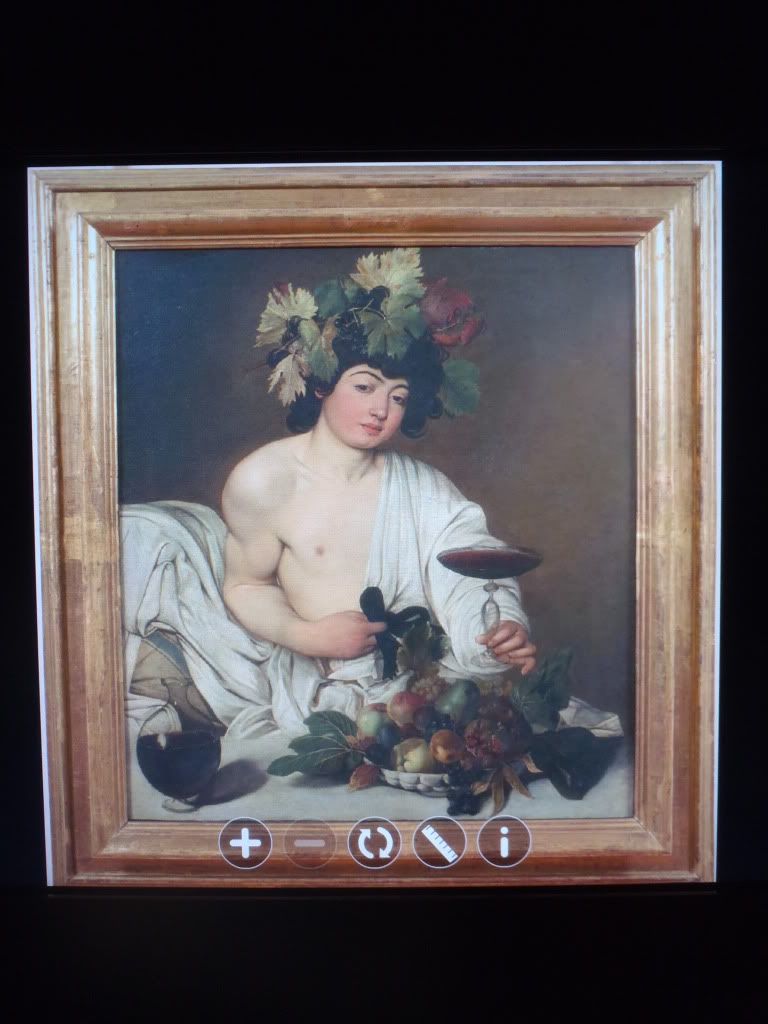
We then went into a room filled with Yin Zhaoyang’s strangely eerie portraits and extremely grotesque busts which looked like Halloween masks or monsters. Next door to his exhibit was a room of amazing photographs from Tibet and various parts of Western China. Hard to imagine when you go from mostly city to city that there is this whole other China out there! One of the coolest exhibits in the museum was a Shiseido-sponsored gallery on the idea of female beauty for Japanese women. We were given little gift bags when we entered the gallery which had mini samples of their sunscreen as well!
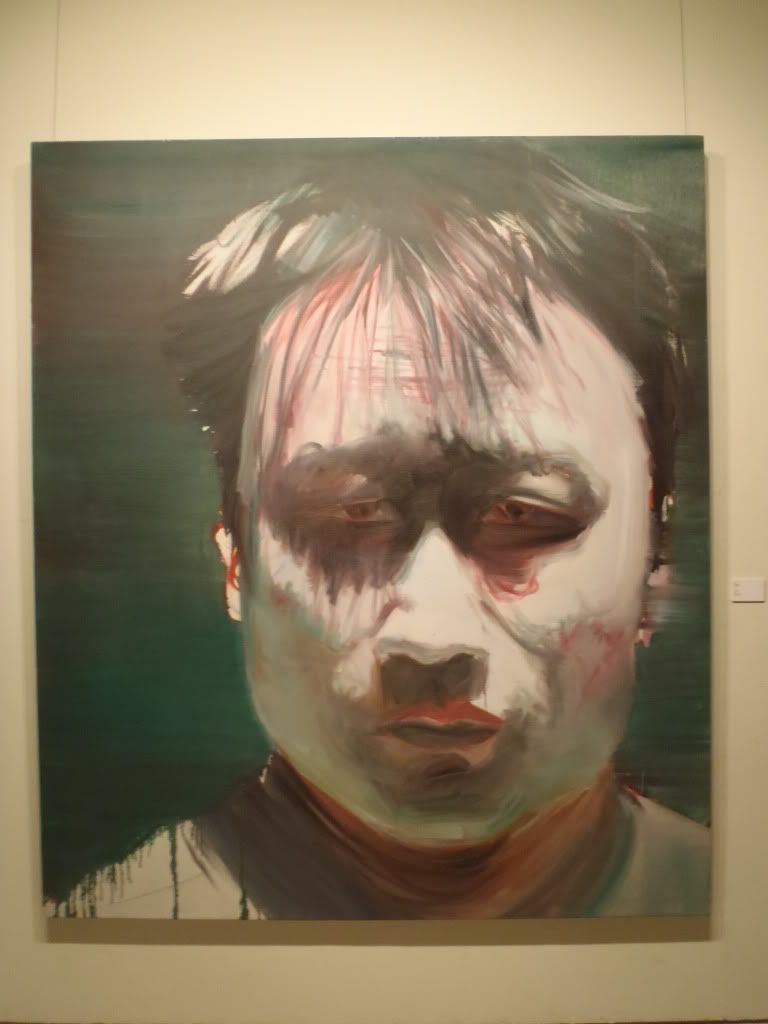
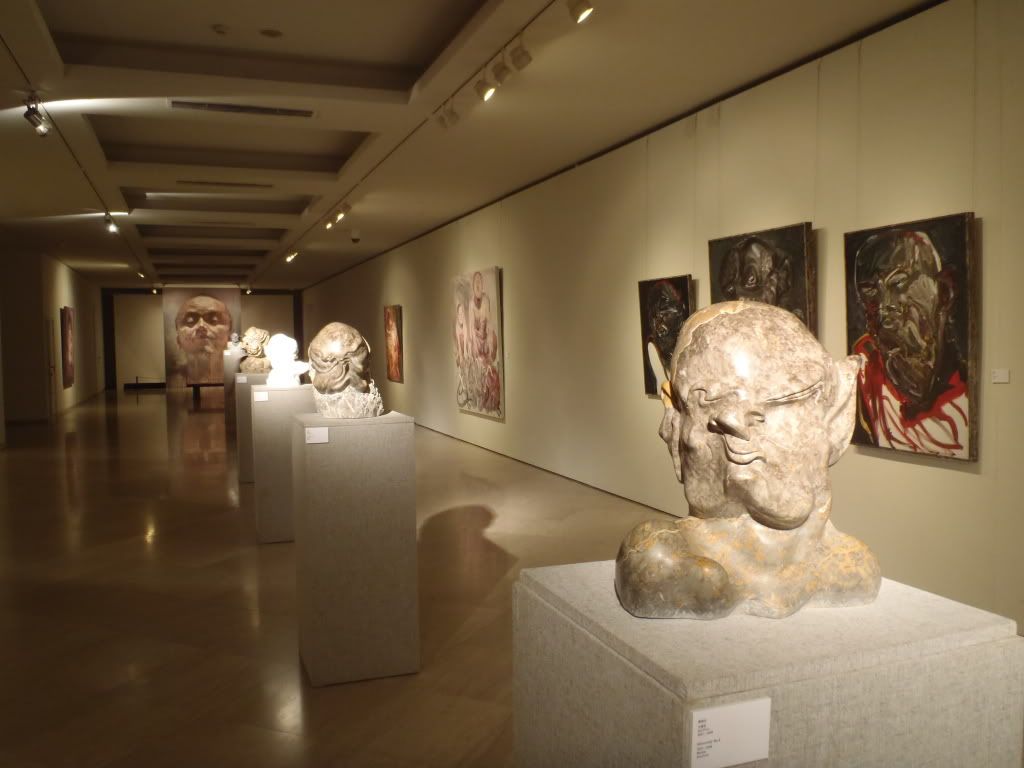
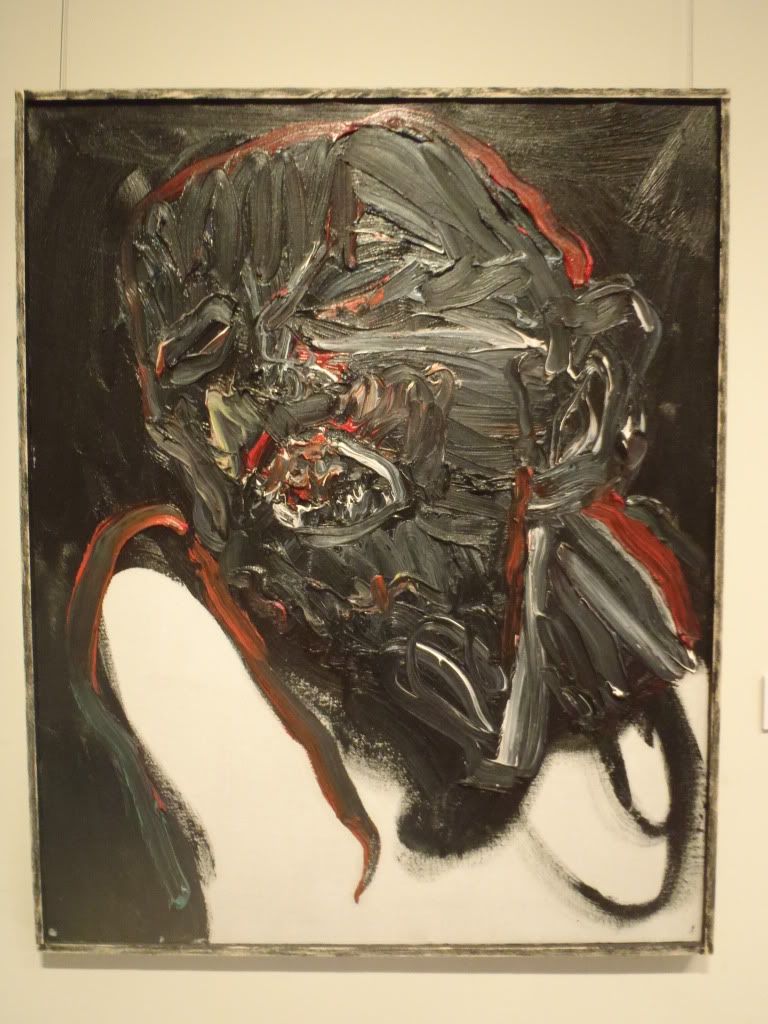
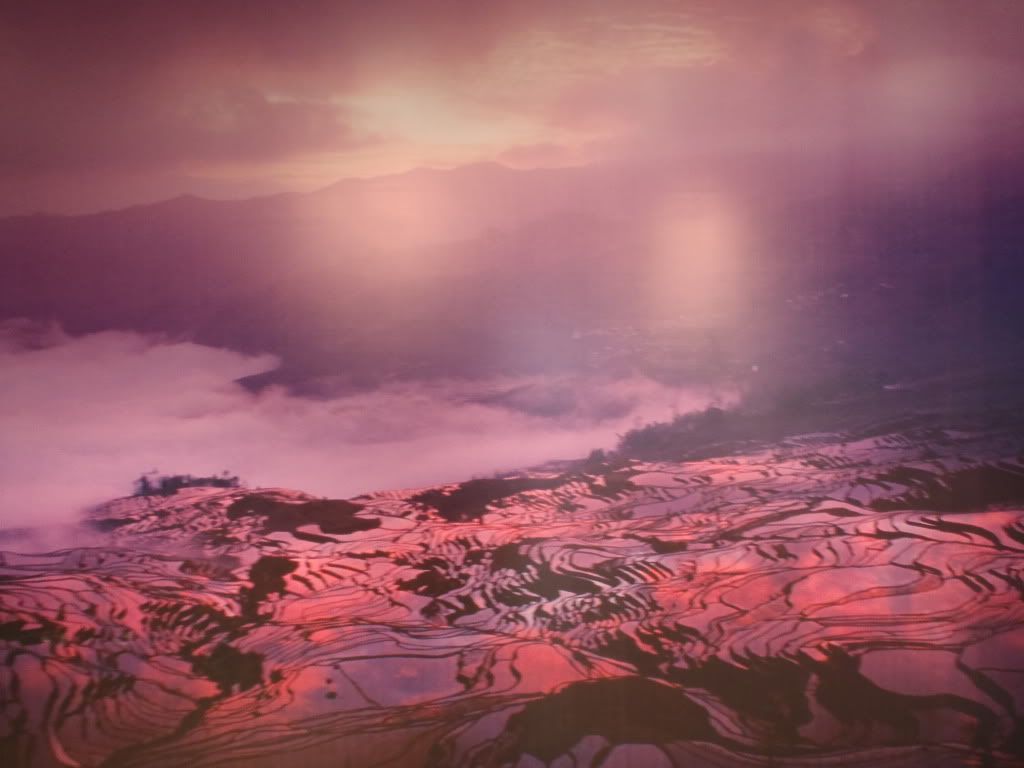
The gallery explained the following: “Traditional Japanese make-up involved three colors, white, red, and black, as in white face powder, red lipstick, and black eyebrows or hair. The combination of of white skin, the red of the lips that accentuated the pale skin, and dark eyebrows and hair was a manifestation not only of the Japanese concept of beauty, but of the concept of beauty in Asia. The concept of beauty that was imported into Japan from mainland China over a thousand years ago influenced the way Japanese wore make-up, and by the Edo Period (1600-1867) … had entered the mainstream. [Furthermore] … a young woman who became betrothed to be married would dye her teeth black, while women who became pregnant would shave off their eyebrows. In this way cosmetics played another role – to convey a woman’s social status, occupation, and marital status. ”
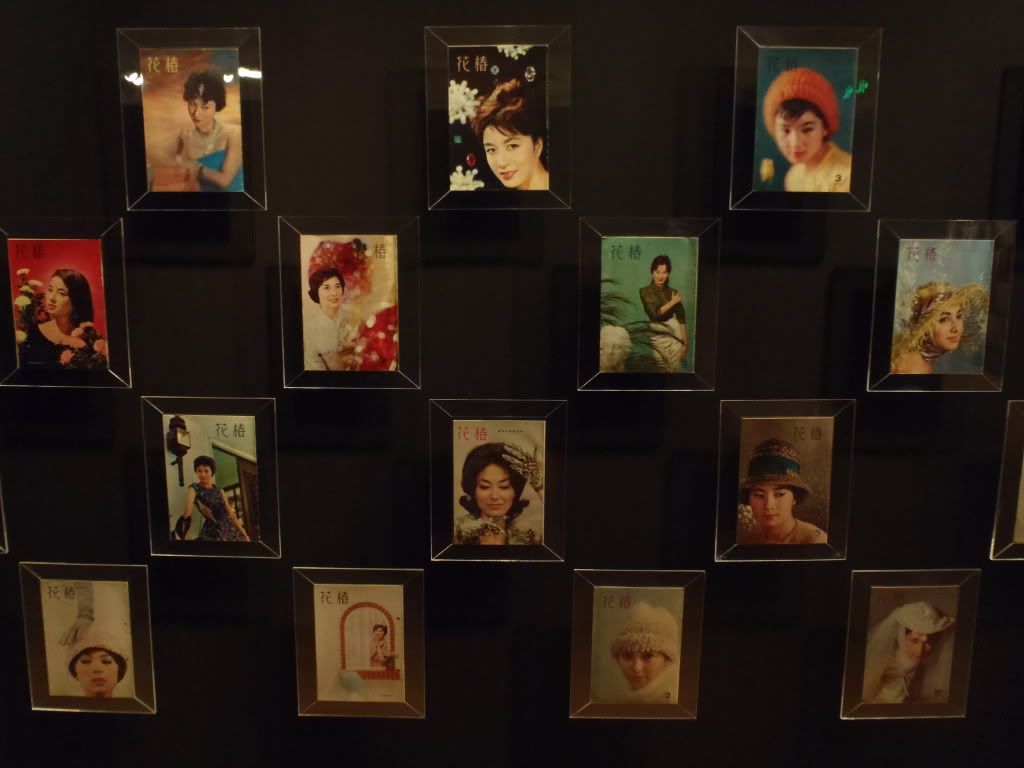
Apparently pre-1900’s large eyes and long eyelashes were not considered attractive in Asian society. It was narrow, almond-shaped eyes that were valued and women with large eyes tried various techniques to make their eyes appear smaller. It was also not attractive to have a nose that was “too tall” although a straight nose has always been important. There were tons of images of various women considered “attractive” at certain times by Asian culture and we quickly realized that the Asian vision of beauty in modern times has become extremely influenced by the Western version of beauty.
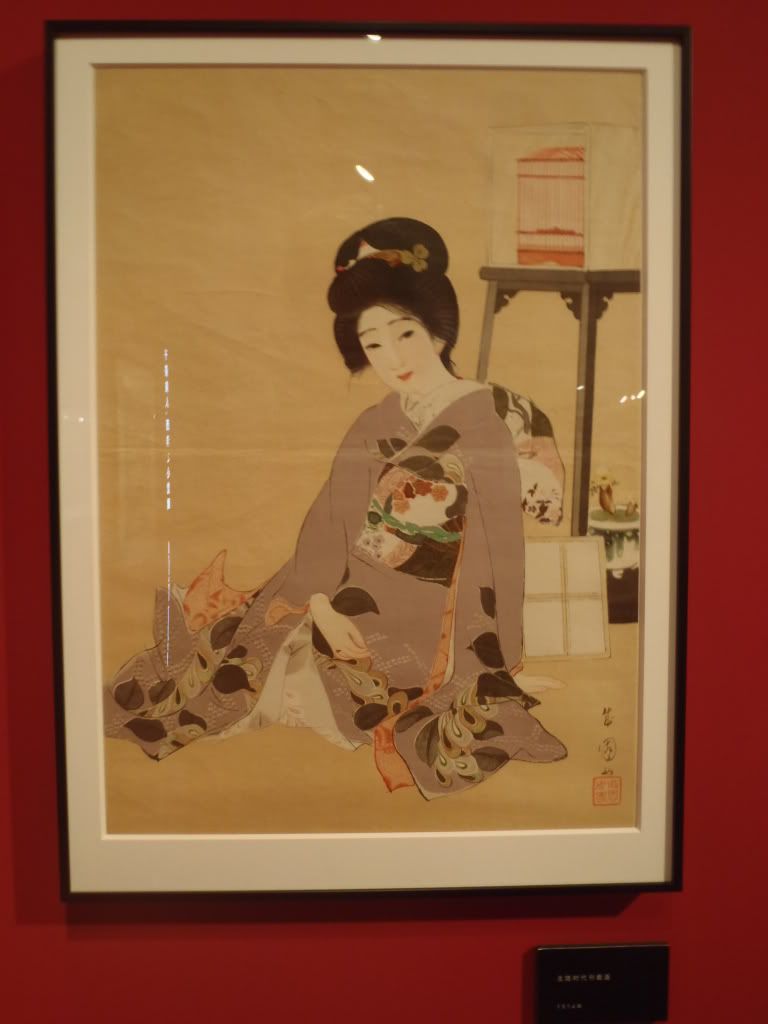
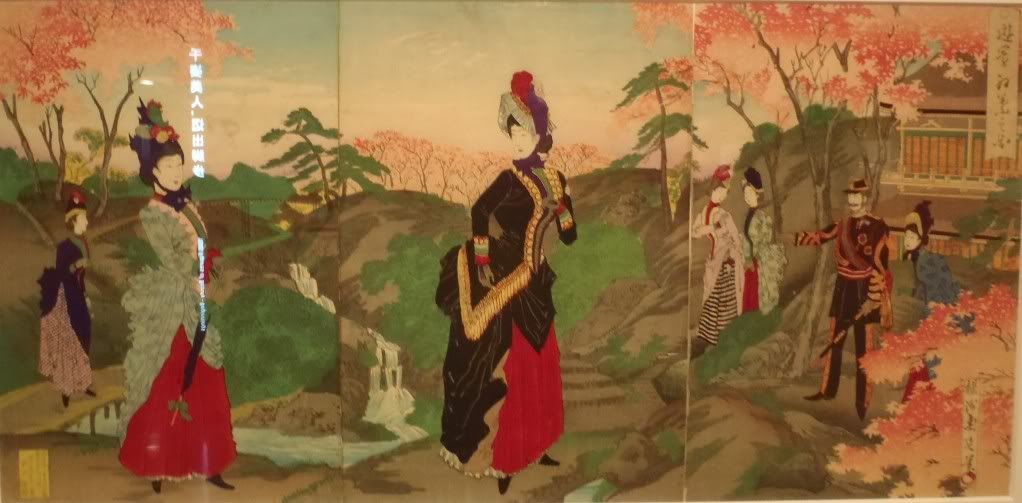

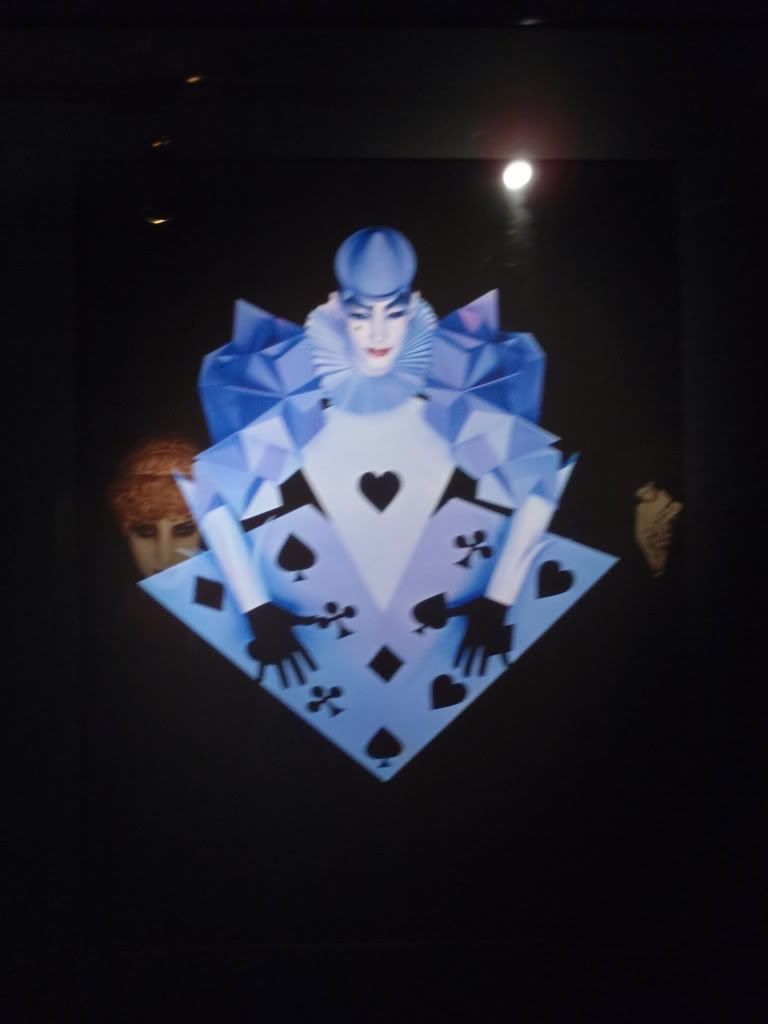
The next stop was another gallery of art – the Museum of Contemporary Art. Now this museum was really fun!! As soon as we stepped inside and started reading about the two artists and one musician whose work was on exhibit I got excited to see it all! The first artist, whose work took up half of the entire first floor of the museum, was named ‘Kea’ who (according to our brochure) took, “…different characteristics from various animals to create visually bizarre hybrid creatures.” His work almost looks ‘normal’ or ‘unspectacular’ at the very first glance before your brain begins to register exactly what you’re looking at! It is obviously a mind-bending combination of two completely different elements! Take a look – I was impressed with how fun his pieces were.
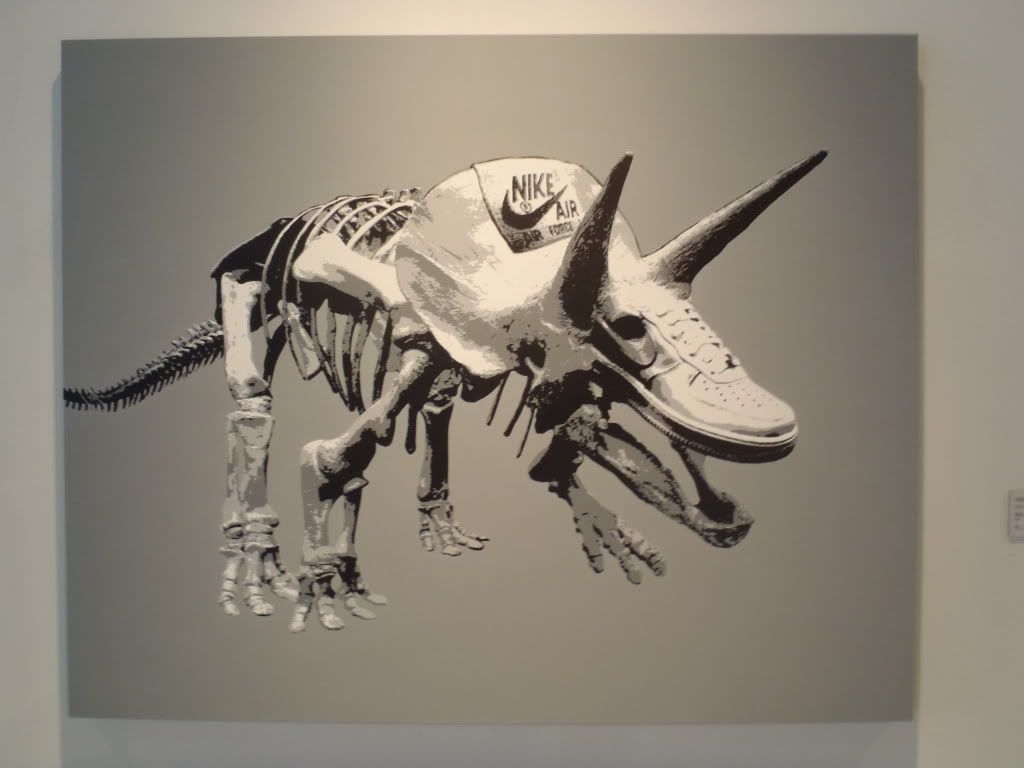
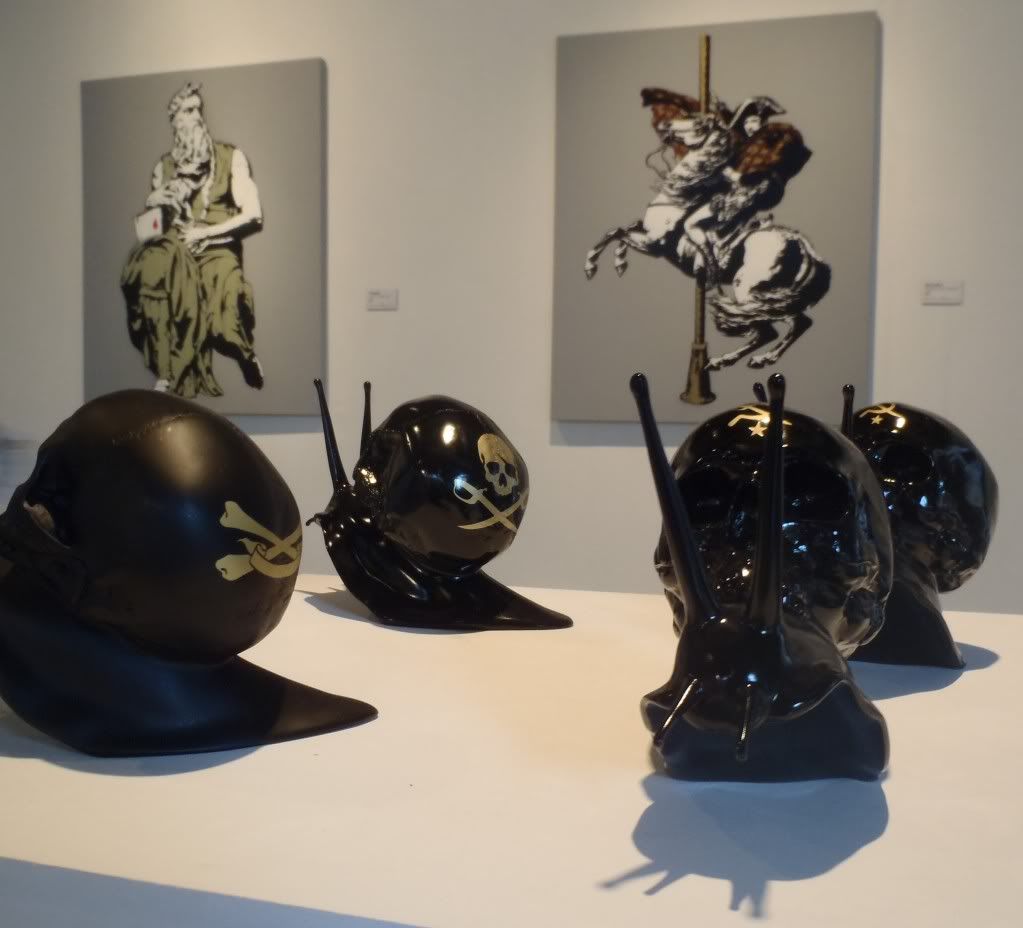

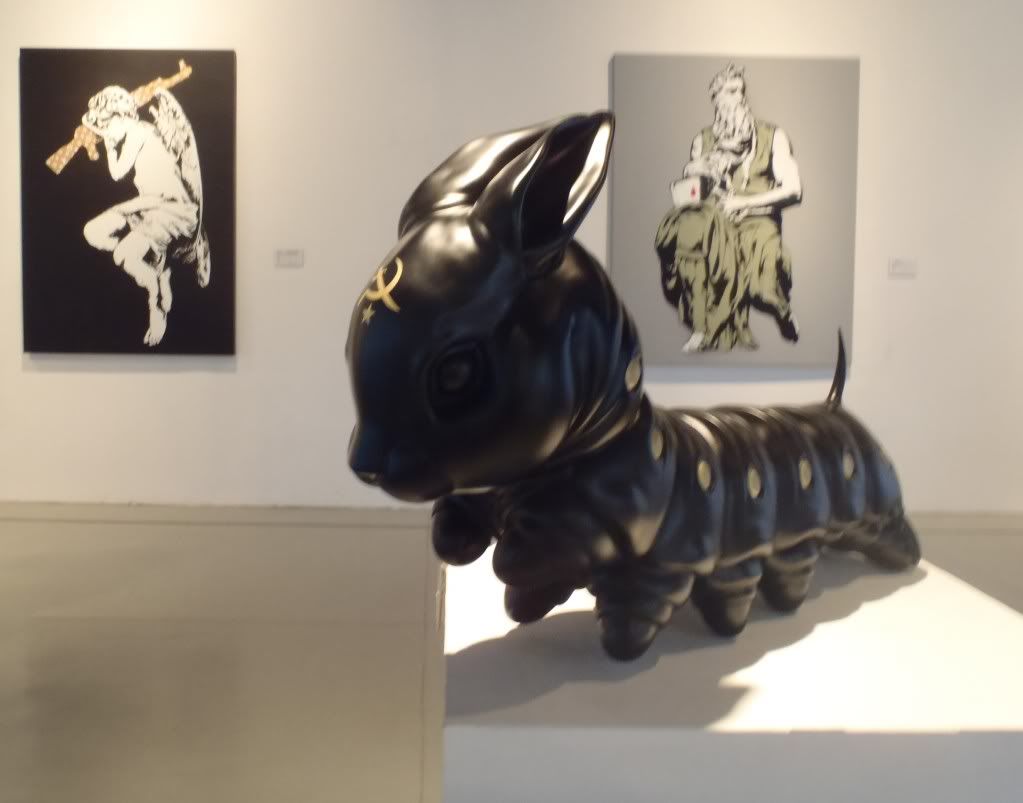
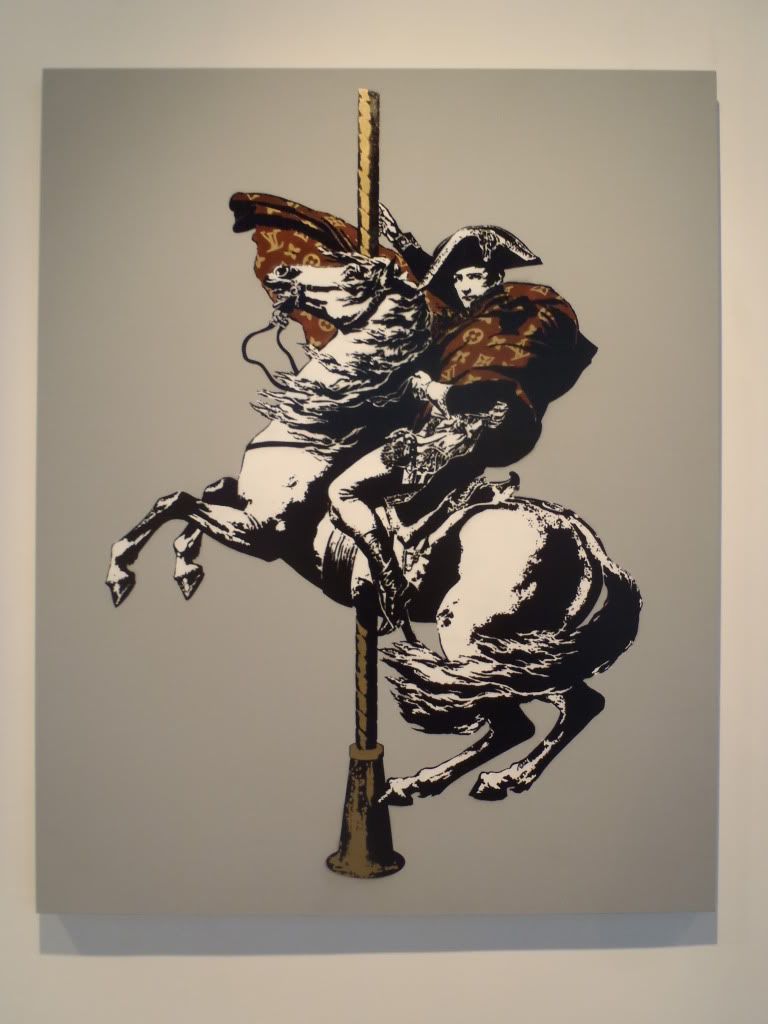
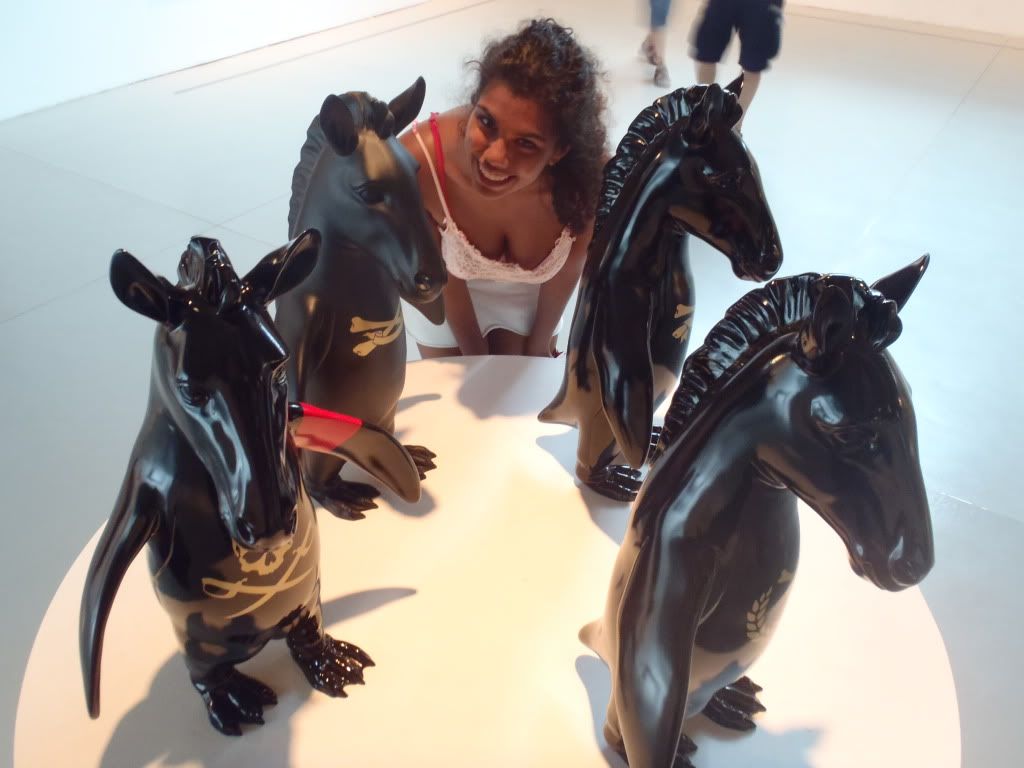
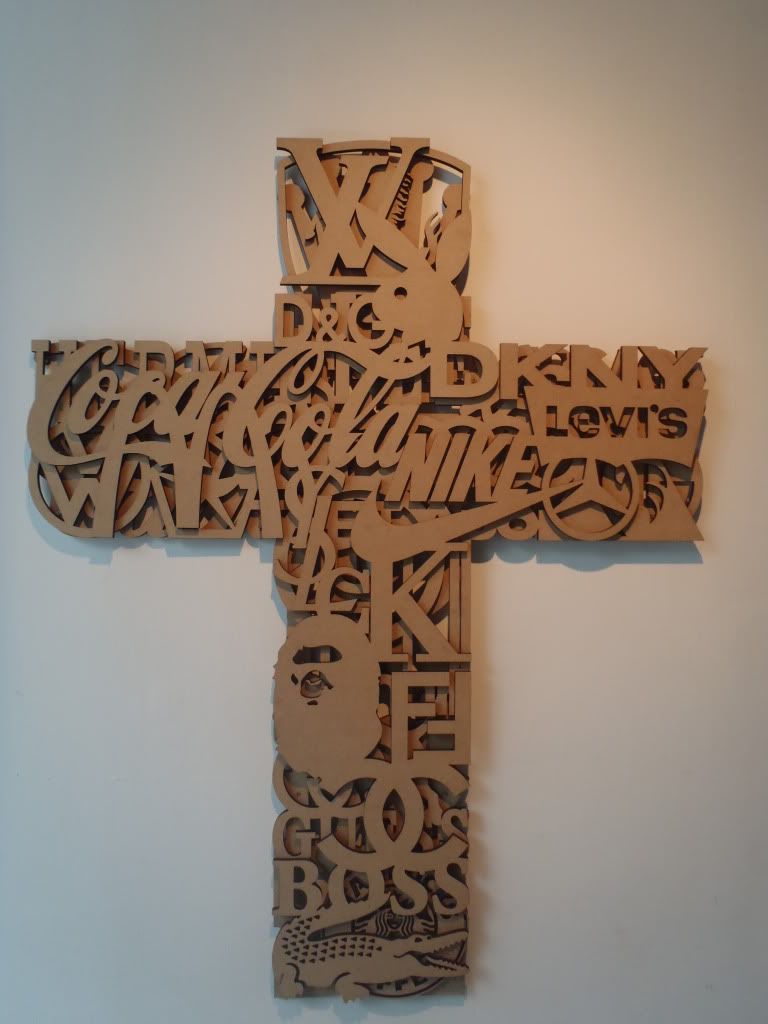
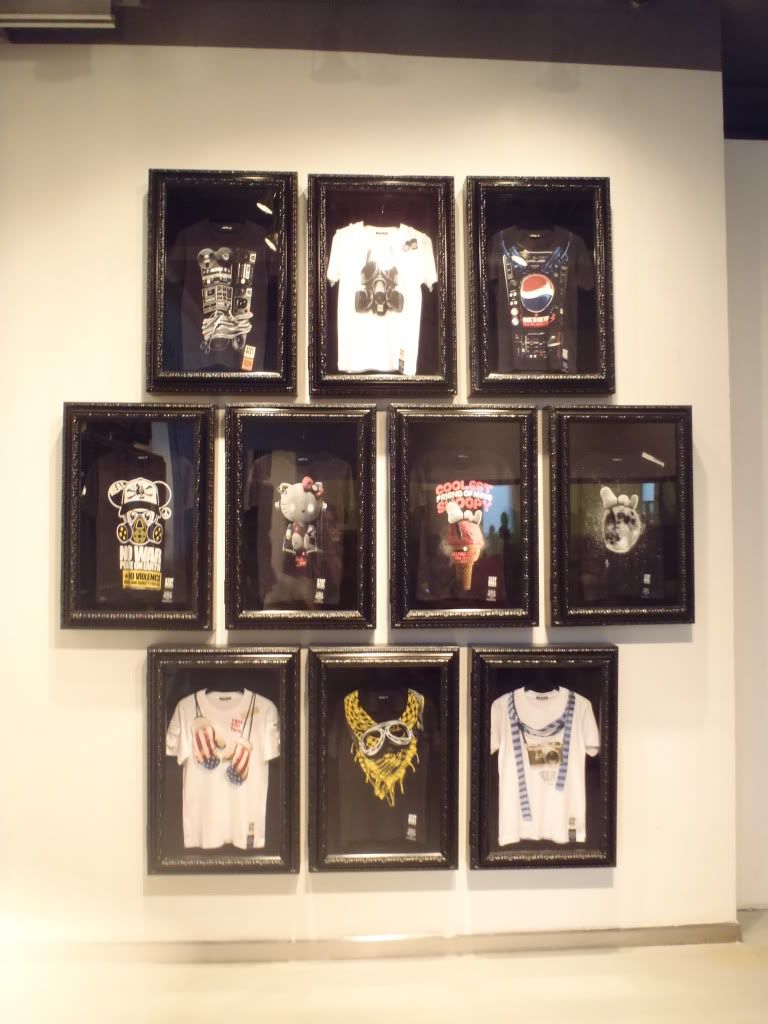
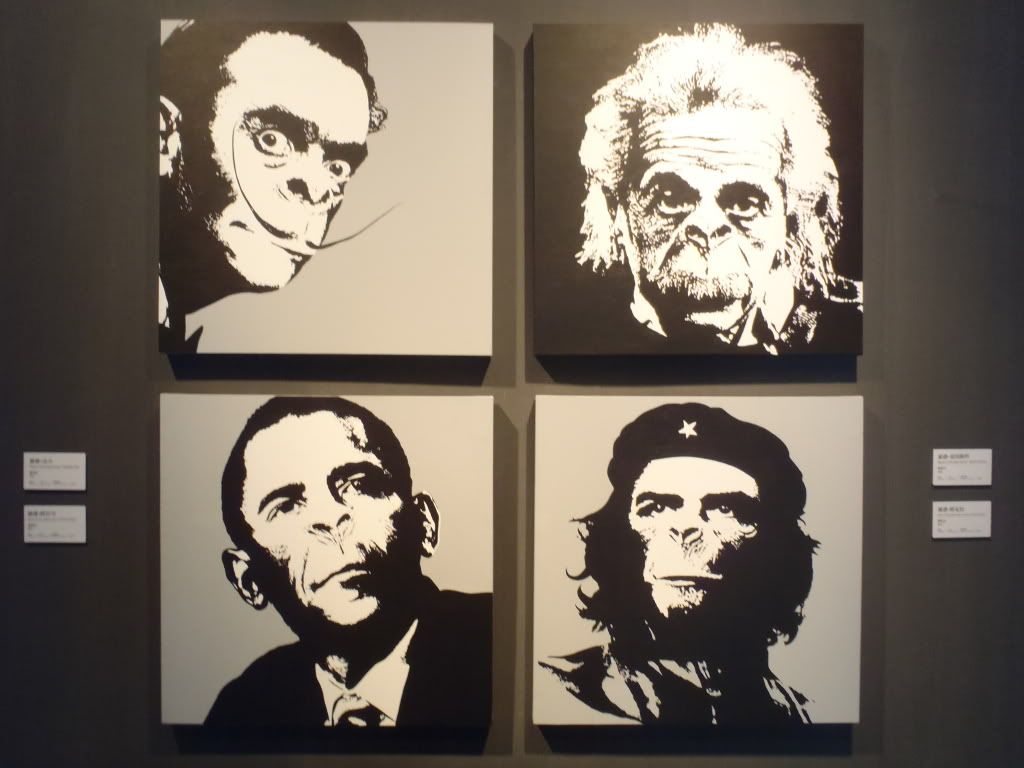
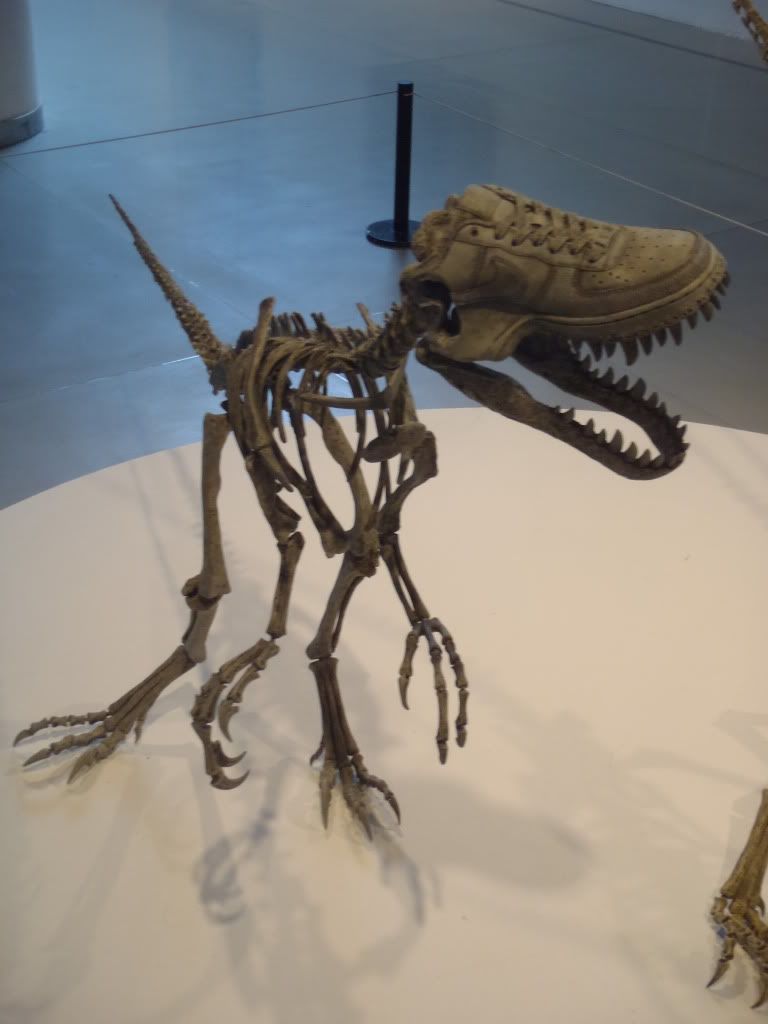
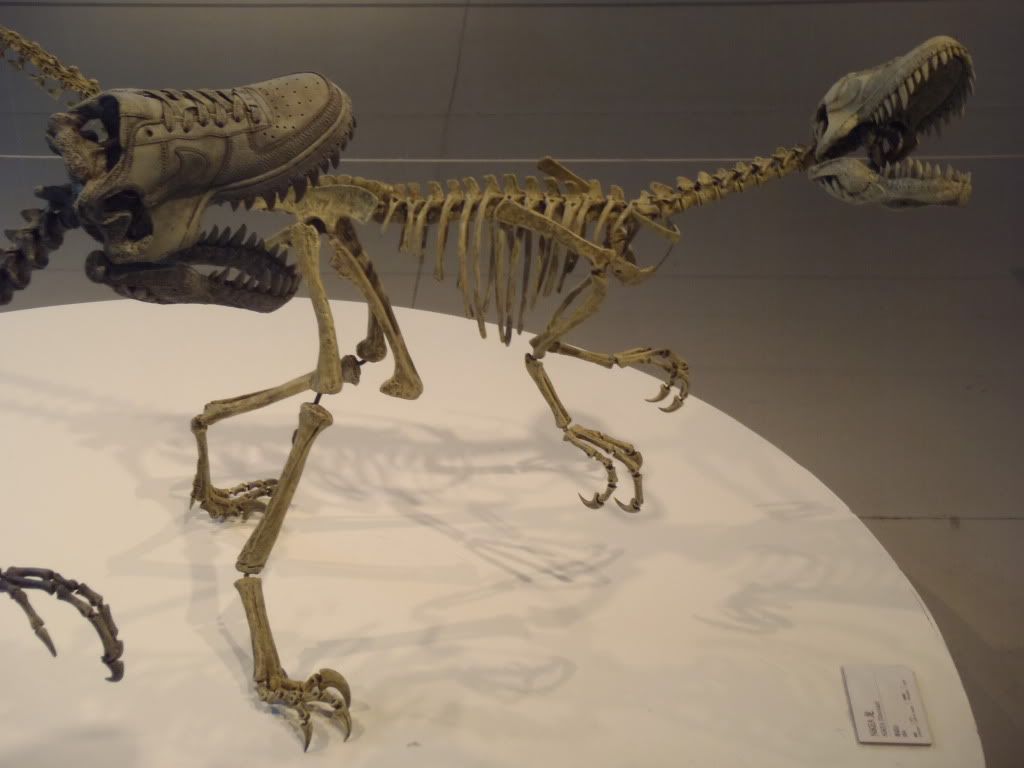
The second artist calls himself ‘No2Good’ and his signature artwork is tons of multi-colored large “cartoon mice” in various outfits. His work is really fun and you can’t help but smile when you see it. It almost brings you back to a child-like state, which seems to really be savored by present Asian culture. The musician ‘Ashin’ whose work was played over a speaker (‘being exhibited’) upstairs along with visual accompaniment is from the band MayDay. He is both an audio and visual artist and it was quite a different experience to go to a museum and get to listen to music as art.
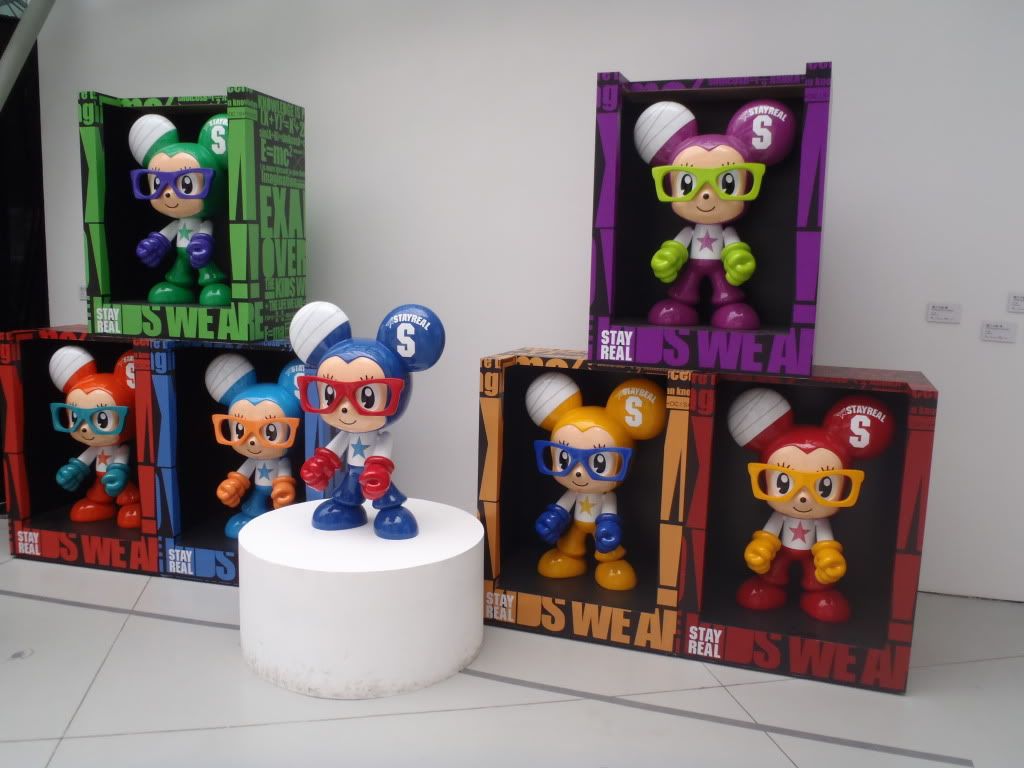
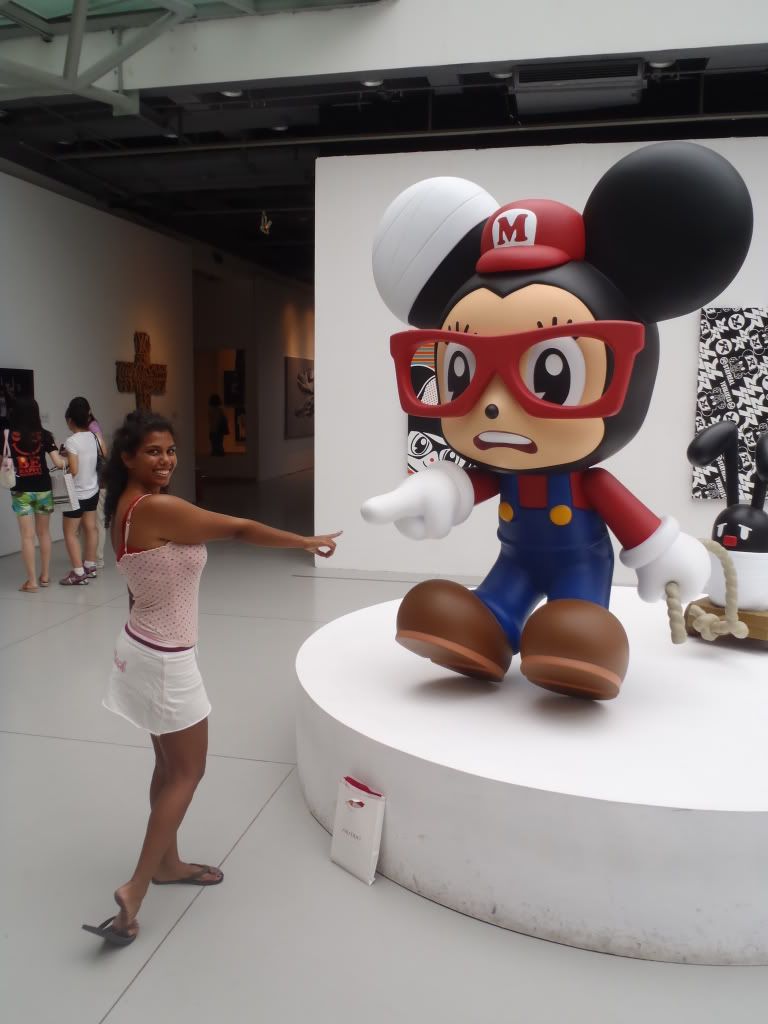
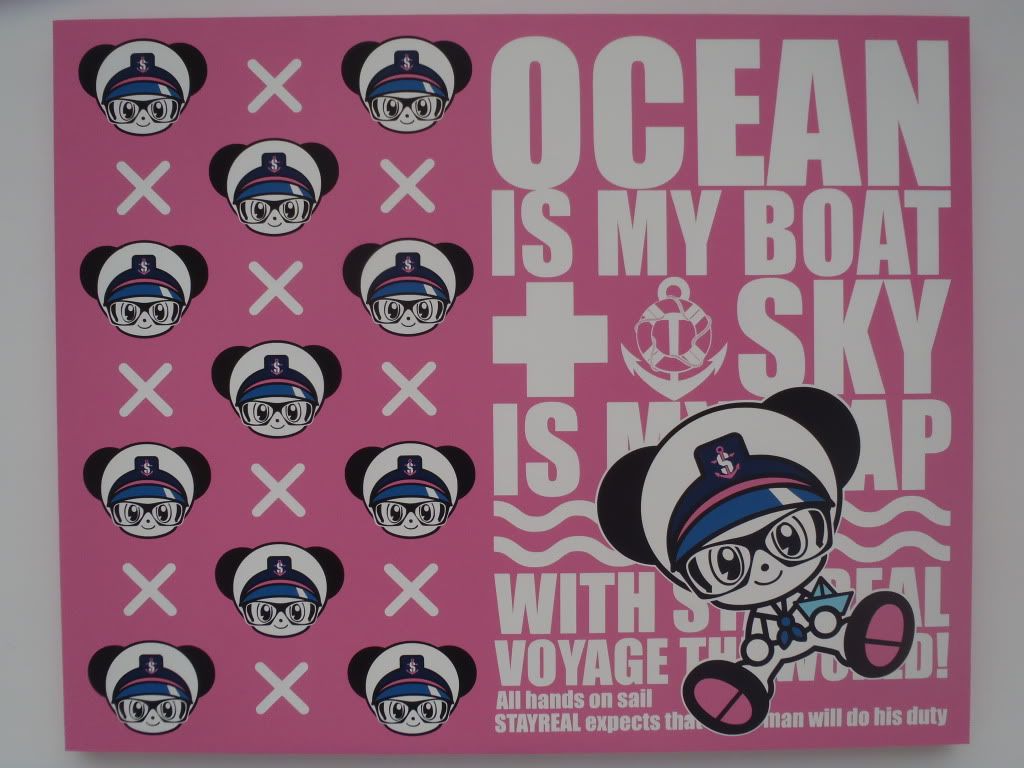
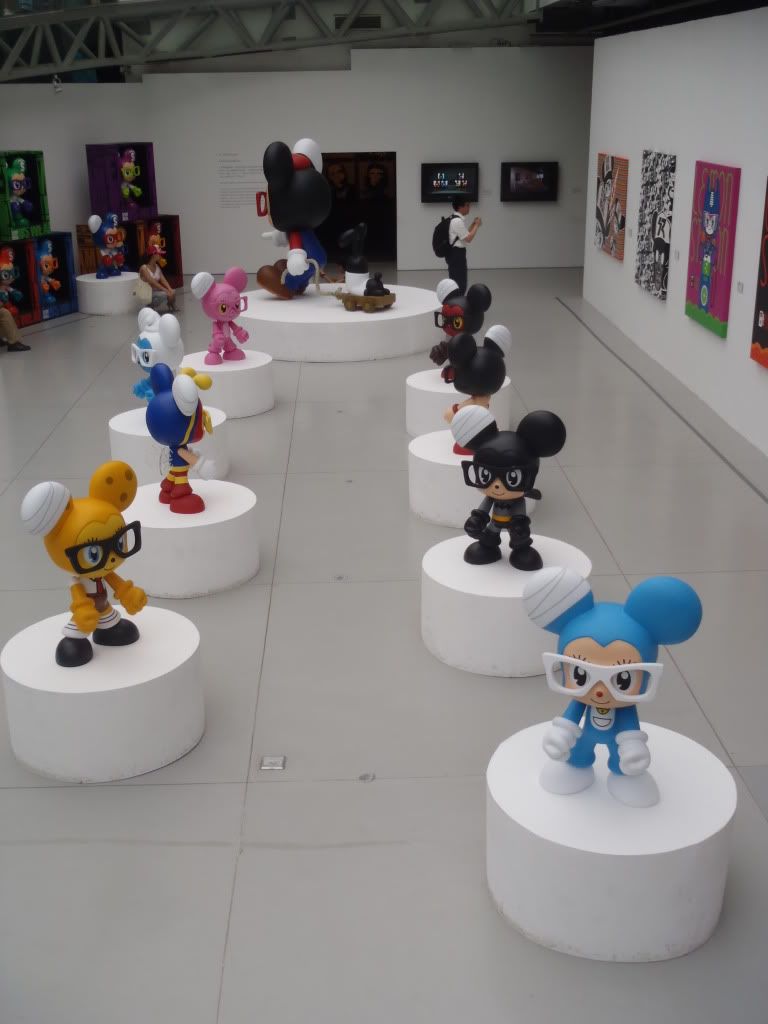

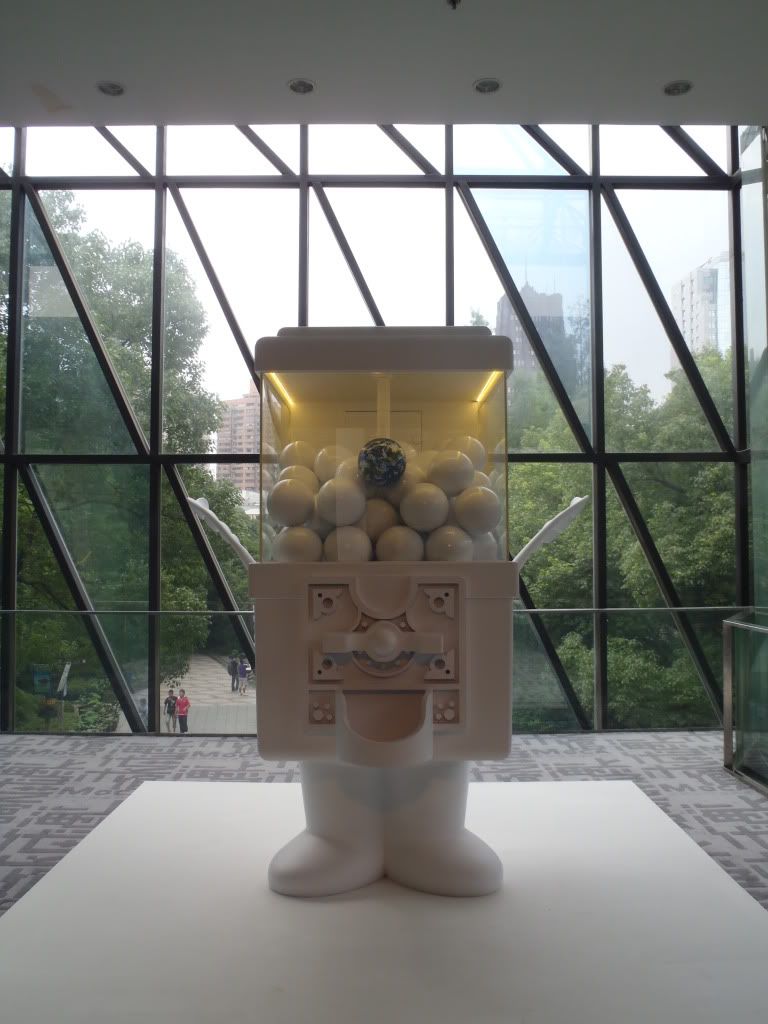
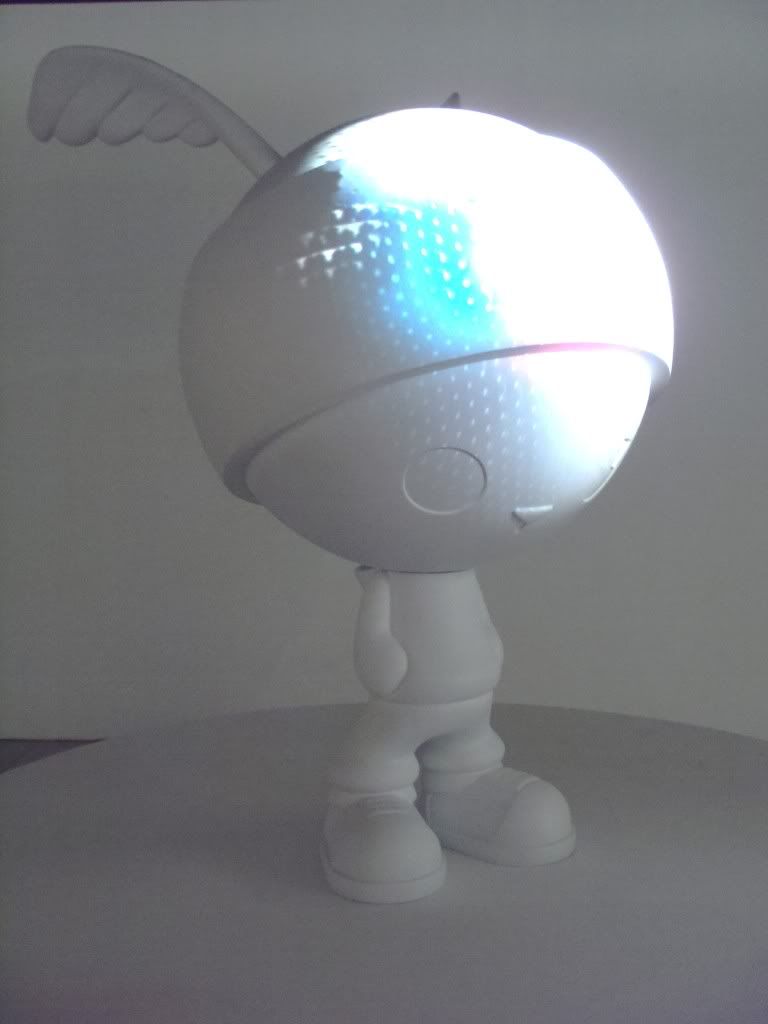
You would think we’d be finished after looking at so many museums in one day but we wanted to try and make it to one more: the Shanghai Exhibition Hall. This hall had a large model of the city and a bunch of different floors with various visual exhibits on the city structure and surrounding facilities (subway, train stations, airports, etc.) None of it was too interesting, so we were able to make it through pretty quickly which was a good thing since we just barely made it out before closing time. We returned to the apartment where we exhaustedly enjoyed a large pizza and garlic bread from Melrose Pizza. I had Henk start watching ‘My Fair Lady’ but the movie was so long that we ended up falling asleep before we could finish it. Plus we had to get up reeeeally early for the Shanghai Expo the next morning. Here we go… (this won’t be pretty!)

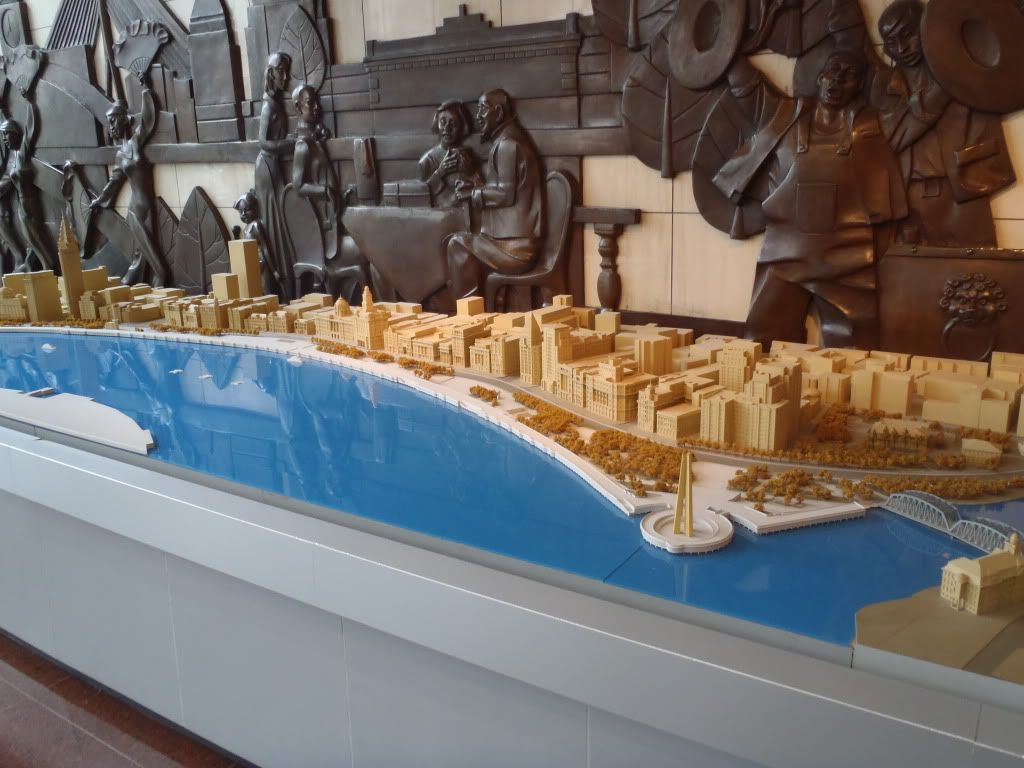
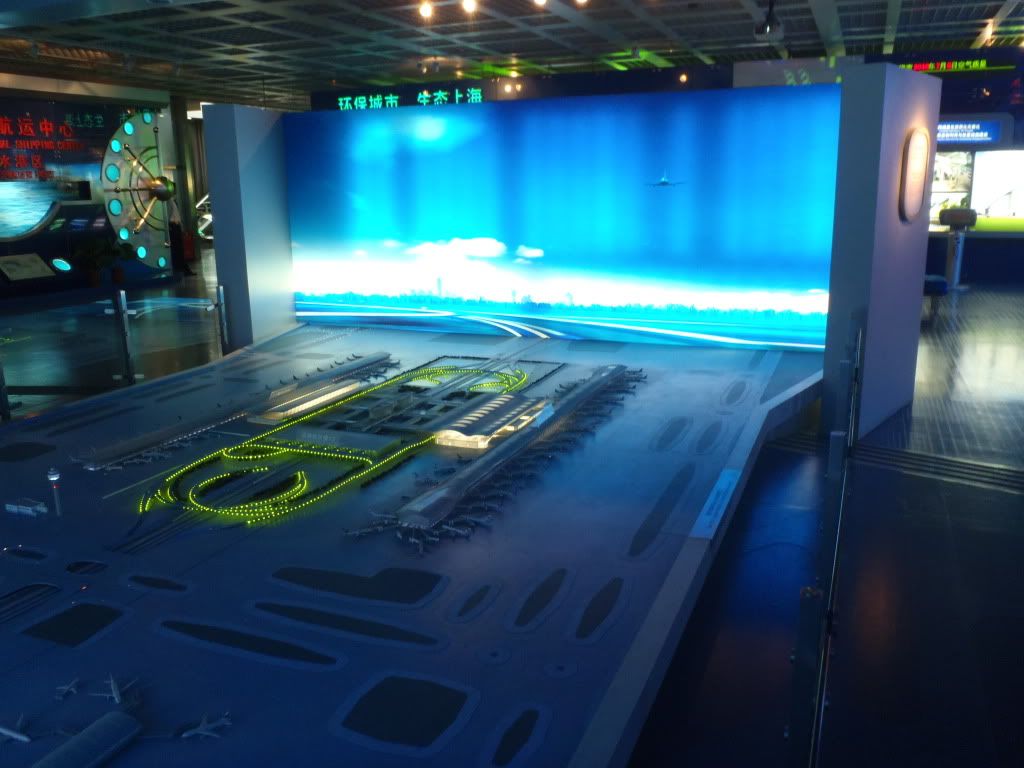
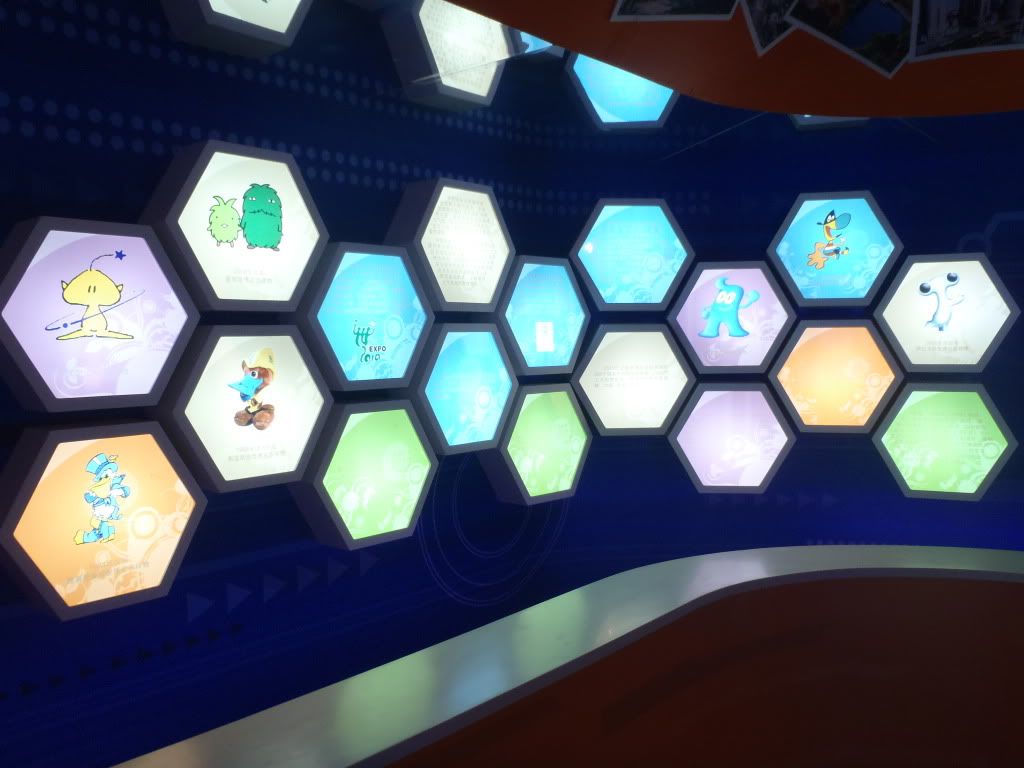
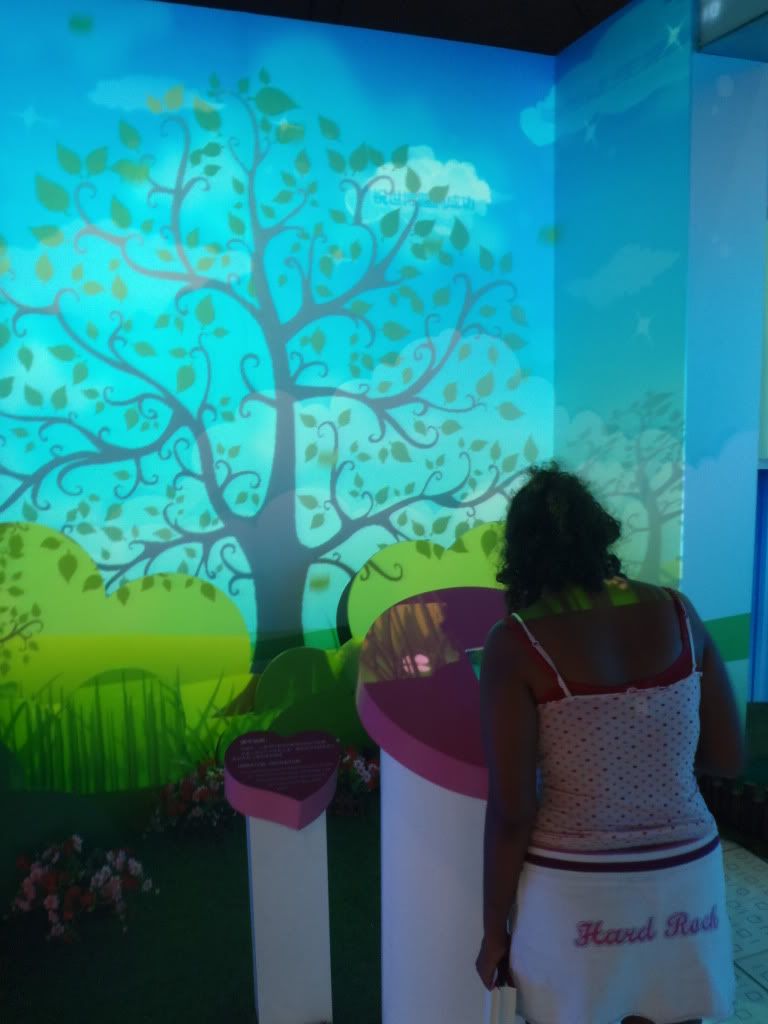
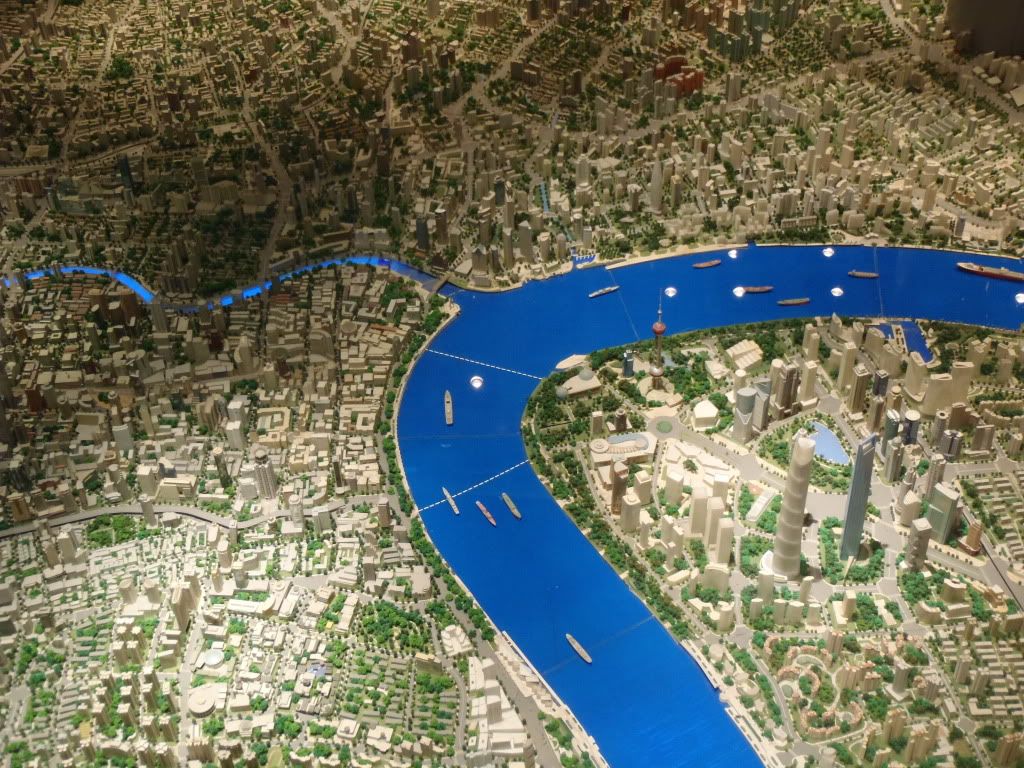
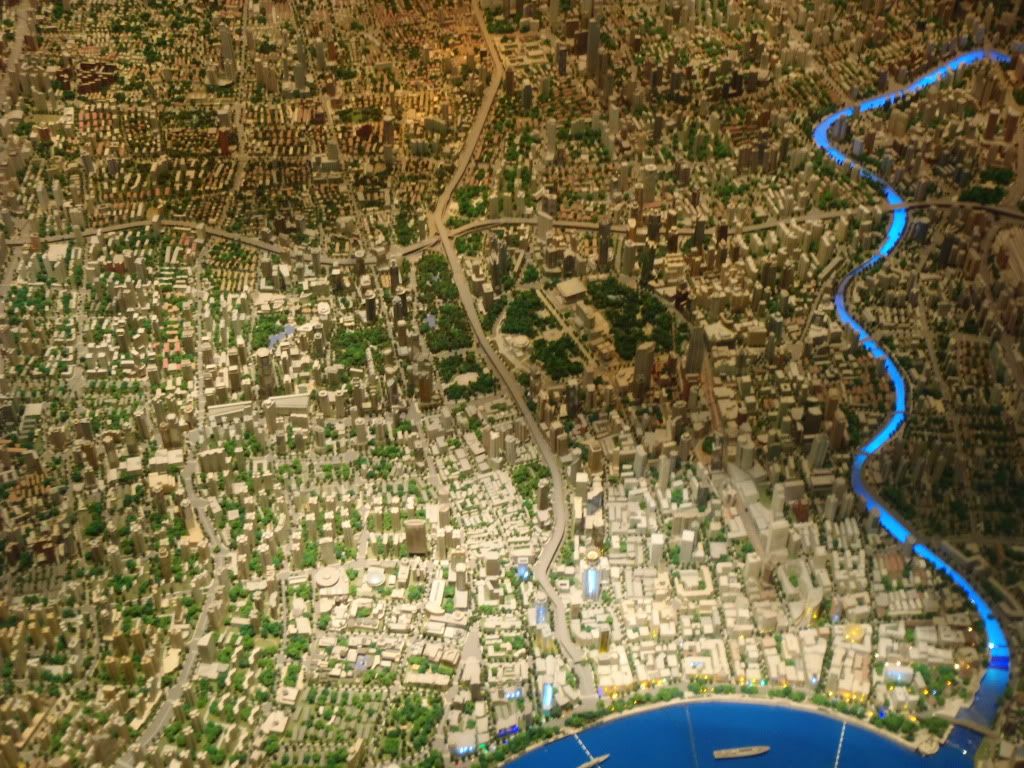
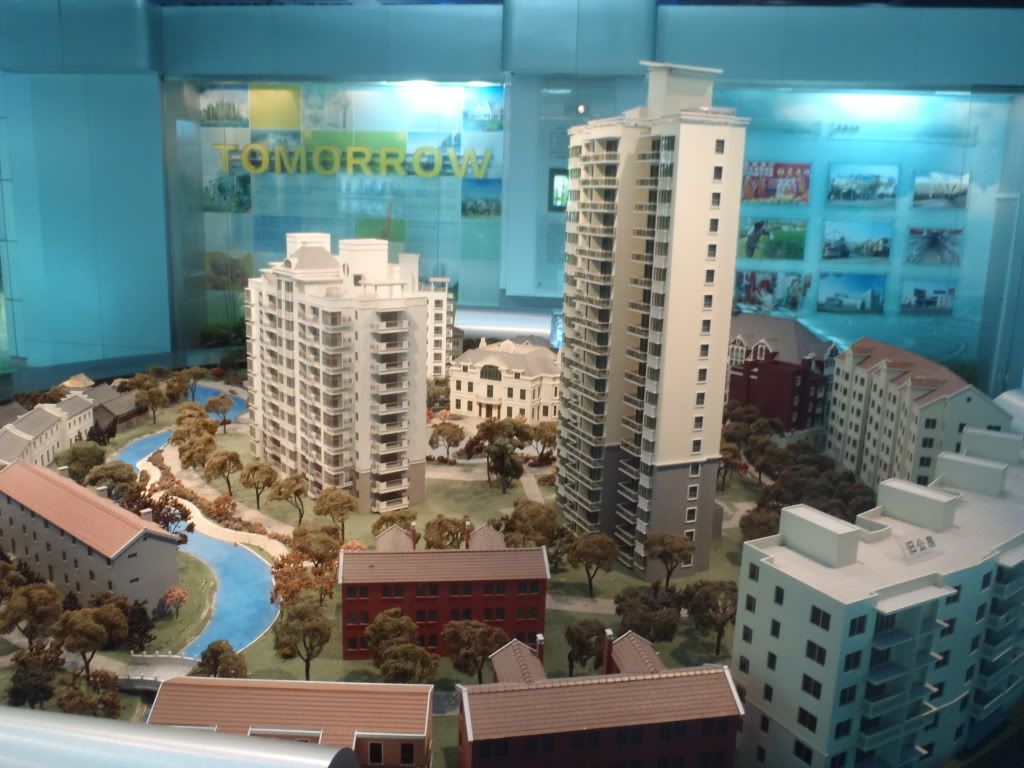
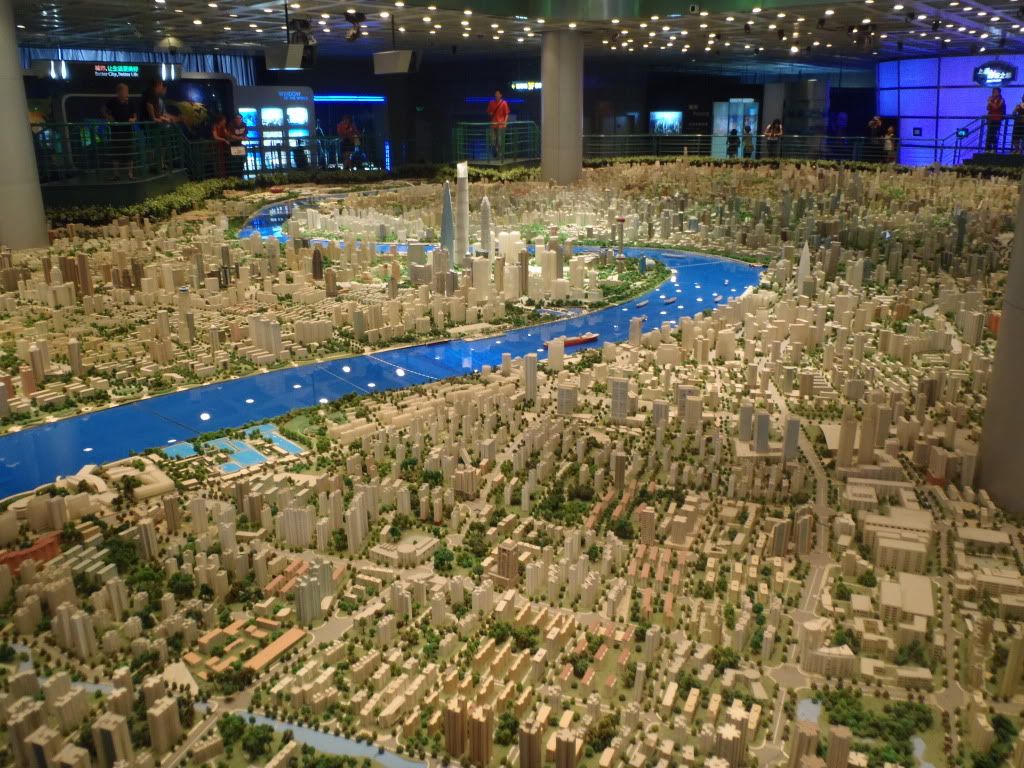
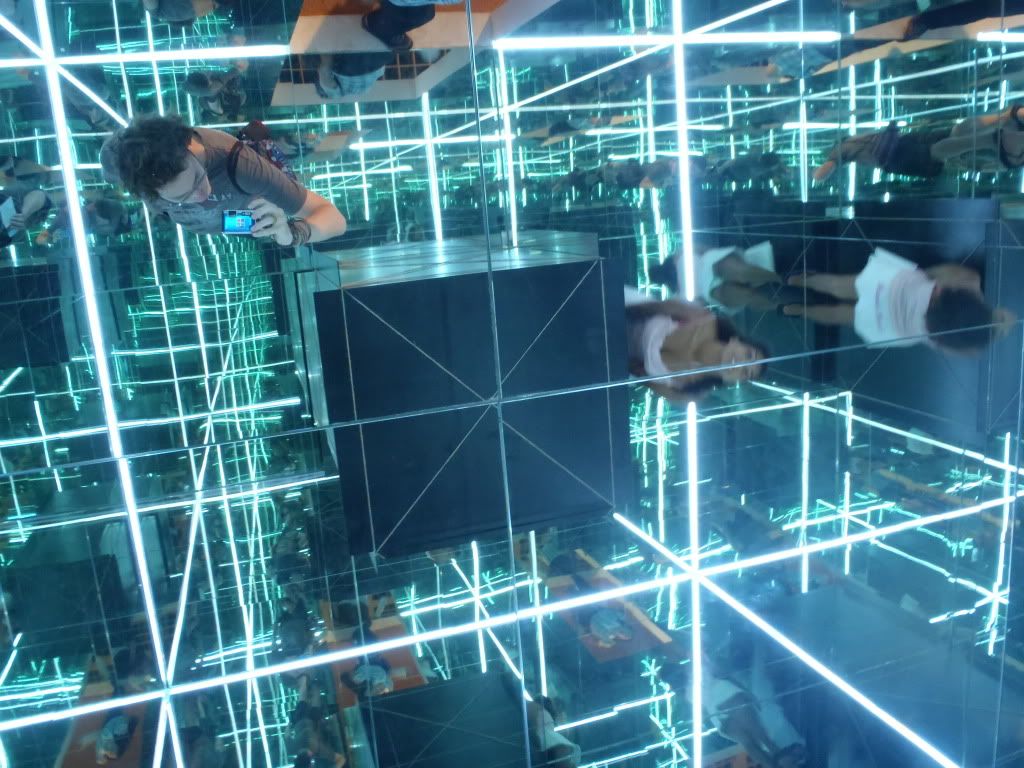
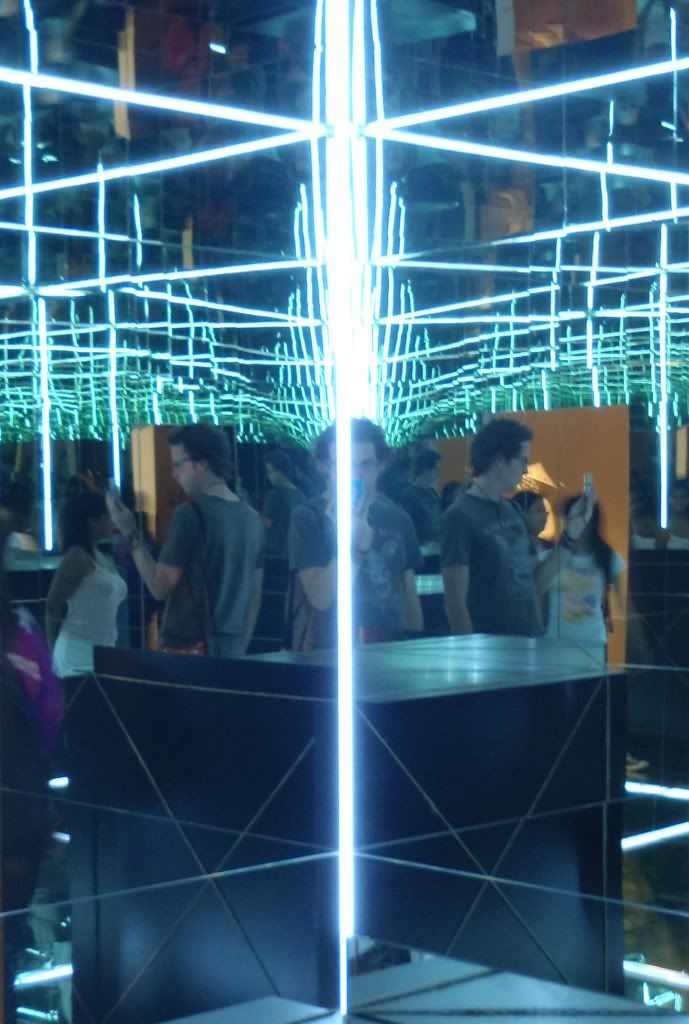
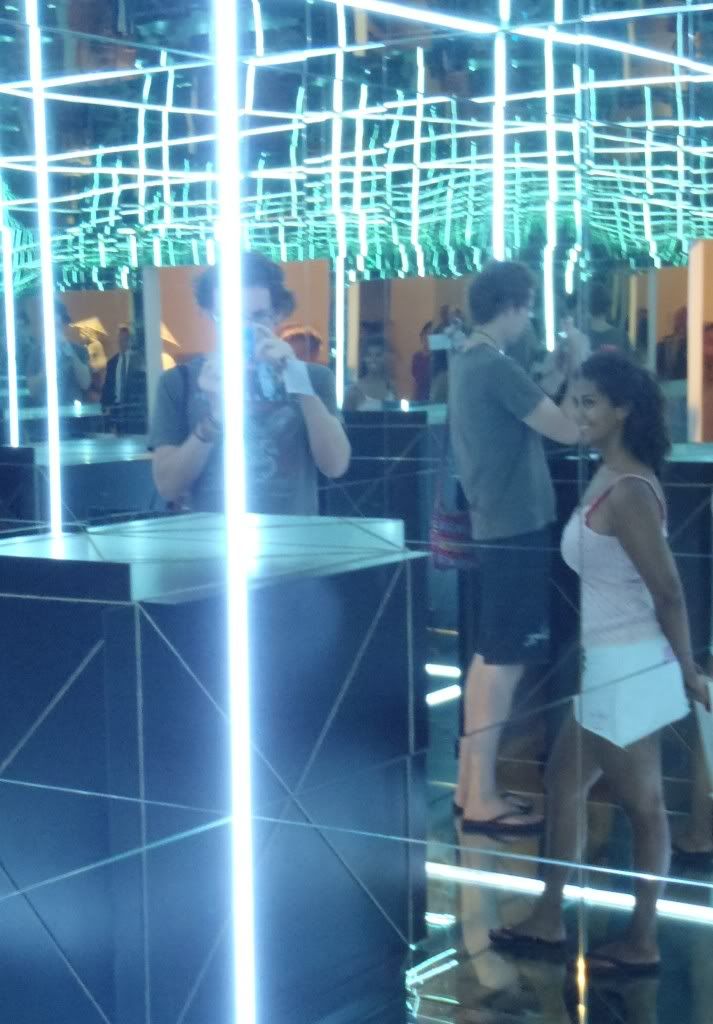
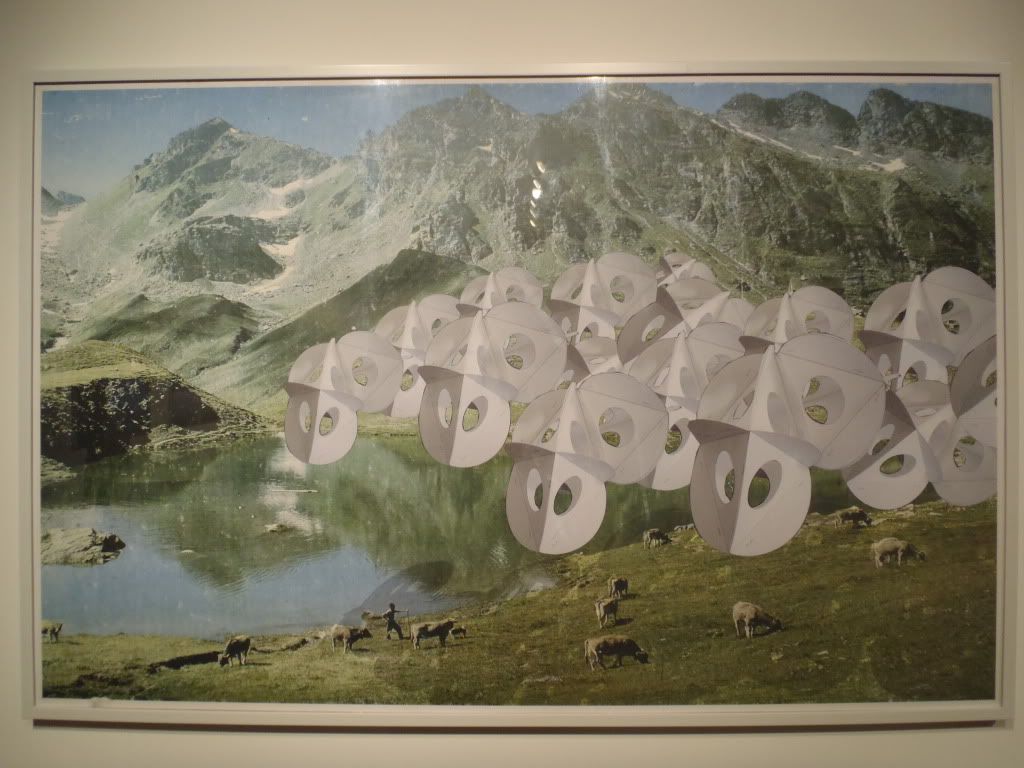
Francesca
Upon arriving we met Patricia who showed us our comfortable new room and talked to us for a while before she needed to head to her school. On the way out she pointed out a Mexican restaurant for us to check out. The place was colorful but the portion sizes ended up being too small for us (we were starving post-flight with no food!) – luckily (after a quick stop at the convenience store to pick up a chocolate bar) when we got back to the apartment and met John, the two of them offered to share some of their Chinese food with us. Yum! We spent the rest of the evening learning about the Chinese/Korean school system and general Chinese culture from P&J. Since they have lived in China for more than 6 years now, they had a ton of experiences to share and were a wealth of interesting information. Some of the things they told us:
- About Chinasmack.com (an interesting website that translates Chinese people’s comments on various stories into English so we can see what they think about events/other Chinese people)
- Chinese people have made a transition from thinking of themselves as a ‘we’ people to currently a ‘me’ people and they don’t really have a nationalistic sense that detracts from their selfish ‘me/my family first’ attitude… they try to gather as much as they can for themselves instead.
- That many Chinese people will think they know what you need better than you, as a customer, do; for example, they know if you should dye your hair, eyebrows and what color… not you!
- How the Korean mothers try extremely hard to ‘steer’ their children in the ‘right’ direction school-wise by assigning them extra homework if they believe the school isn’t giving enough (this could be for example to memorize 40+ English words a day additional.)
- Yet at the same time how Korean children do very poorly on tests because they work so hard to ‘study’ for exams that they don’t end up actually learning much that is practical or that they will remember… in fact, the children sleep during classes because they are so focused on only studying for the special exams.
- Principals of these schools (and teachers) understand Korean parents only focus on how much ‘work’ their children have as an indication of how ‘good’ the school is. Since the schools are a business and the faculty wants the students to stay enrolled they ‘pretend’ (or actually do in some cases) to assign the kids tons more work than they can possibly handle.
On the 6th of July we set out to begin our exploration of Shanghai by taking the train to East Nanjing. First we bought a ham and cheese sandwich in the Subway because we were so hungry, but shortly after we found a Subway with sandwiches! (Much better.) After Subway sandwiches (turkey breast for Henk and chicken teriyaki and Lays Italian Red Meat chips for me which were actually pretty good,) the first thing on the agenda was a visit to ‘The Bund’ – the long strip of interesting heritage architecture that made up the ‘early Shanghai foreign-business district.’ This includes beautifully dramatic old banks, hotels, private clubs, and more. Our China Lonely Planet happened to have a ‘walk’ of the Bund (kinda a self tour) in it which we took advantage of and followed. The walk led us first to the former Richards Hotel, established in the Qing Dynasty. This hotel is now known as the ‘Astor House Hotel’ and has long been considered one of the best in China. Many celebrities of the past have stayed in the Astor House – including Albert Einstein and Ulysses Grant. Across from the Astor to the front is the Russian Consulate and to the east is the 1930’s apartment block construction ‘Broadway Mansions.’ After walking in and out of these buildings (and picking up about 1000 brochures from volunteers about the Shanghai Expo) we eventually made our way across the Waibaidu Bridge.













The bridge led us into Huangpu Park, where we noticed some sort of military ceremony going on. It looked like they were practicing for a presentation! We snapped a few pictures then left, unsure if we were supposed to even be in the area. Instead, Henk and I ducked around to the Monument to the People’s Heroes. We walked around it but found the museum inside to be closed and decided to keep moving. After looking at the former opium traders’ headquarters and the former British Consulate we found a street filled with water (it was under reconstruction or something) and Henk tried to push me in! But he didn’t succeed. That street we explored looked like something straight out of central London – quite an interesting sight in Shanghai! While walking on it, Henk and I noticed a little alleyway with a sign pointing for some art museum. We were curious and went to find out what was inside.





Turned out it was the Rockbund Art Museum – a contemporary art gallery – which currently had a bunch of ‘mechanical art’ on display. There were various metal flying contraptions with birds flying in and around them as well as robots ‘painting’ their own art. We sat down to have a drink (they only had overpriced sparkling water but that had to do because Shanghai is sweltering!) and looked at some of the strange art. The coolest room was one filled wholly of screens displaying the artists (or other inventors/artists) making flying machines. We filled out a survey on the way out (more detailed captions!!) and received little metal light-up pins as free gifts. Yay for free gifts!! (And more stuff to carry…)

We interrupt this story for an important side note!! NOTICE: Throughout the day we were consistently (every 20 minutes or so) photographed or had someone approach us to either ask us for a picture with themselves or try and ‘sneak’ a photo with us in the background. We found out that this is something many Chinese tourists from the countryside do when they come to Shanghai – they really have no chance to see foreigners in their hometown. While at first the attention was flattering and made us feel like celebrities, it got to be a bit much over the next few days. It is one thing when people ask and what a picture with us, but it is quite annoying to notice people trying to sneak photos of you when you’re not paying attention or busy with something else!
We continued our walk for the afternoon, passing by or into the famous 1920’s Peace Hotel, the former Bank of Australia, India, and China, and the former home of the North China Daily News. You can read the paper’s motto still engraved on its walls: ‘Art, Science, Literature, Commerce, Truth.’ It was kinda sad that you couldn’t go into quite a few of the buildings. They looked so impressive just from the outside! The Shanghai Gold Exchange was next, followed by a building that simply said ‘Customs House.’ On its outside walls was a sign showing celebrating Chinese post-Shanghai liberation. We were getting a bit tired by now and wanted to sit down to rest our feet. Luckily, the building next door to the Customs House was the grandest and had plenty of chairs for us to sit. It was the Hong Kong & Shanghai Bank! The bank had a large rotunda with mosaic art on the ceiling displaying the 12 zodiac signs and the 8 great banking cities of the time. It was really cool to see how those cities were represented back in the day – what signs and symbols the artists chose gave us some insight into the economic environment.







After resting up we went through the remainder of our walk a bit faster. We passed ‘Three on the Bund,’ the famously-snobby ‘Shanghai Club’ where businessmen would sit according to rank, and crossed the street to view the Meteorological Signal Tower. It was almost 5:00 PM now and we thought it might be smart to cross to the other side of the river through the underground tunnel. I had ridden this tunnel when I first came to Shanghai a few years ago, but had forgotten how simple and overpriced the ride had been. Here we go again! You pay like… $6 USD per person for a few minutes in a moving tunnel with a couple multi-colored flashing lights. Nothing more than that. I must say, Shanghai should update that thing! We arrived on the other side to come face-to-face with the famous Oriental Pearl Tower.




It took a little while to walk over to it but we had planned to check out the Shanghai Urban History and Development museum in the basement. The square in front of the tower at the time we arrived looked like a small festival complete with local Chinese fast food and carnival games and potential stuffed-animal prizes. Of course this is China so it was jammed-packed with people. Just a warning to anyone who isn’t comfortable being in a sweaty crowd of Chinese people, LITERALLY pressing arms and having people constantly step on your feet, bang into you without paying attention, and cut in front of you at queues… you probably should think twice about ever living or working in China! Anyways, we went to the museum which had a bunch of wax figures detailing the different stages of Shanghai’s history.



The Prologue Hall: History of Shanghai traffic. We passed a bunch of old cars to walk up the stairs for the rest of the exhibit. Next were the following 5 halls; I’ll summarize the knowledge we gained from them after. The First Hall: Features of the Old City; The Second Hall: Foreign Concessions; The Third Hall: The City and Foreign Activities (or in Chinglish, ‘The Metropol’s In Festod wih Foreign Adventure s’;) The Fourth Hall: Past Traces of Shanghai; The Fifth Hall: Architecture Collection.

We learned from these exhibits that Shanghai was a primitive village 6,000 years ago, was established as a town in the late 1200’s during the Yuan Dynasty, and while it was ‘walled’ during the Ming Dynasty, first gained attention during the Qing Dynasty when the ban on foreign trade was lifted. Shanghai was famous for its large boat owners’ guild, its food stalls with things like bean curd and shops with Chinese herbs, cloth, and silk. Next we learned about the ‘concessions’ Shanghai had to make to foreigners during the semi-colonialized state of the city once China had been forced to open to Western trade. Due to the influx of Westerners into Shanghai there began a mixing of Chinese and Western styles, as evidence in the architecture and customs of the time.




Shanghai began to grow at this time into the largest and most important trading center in the East. Competition picked-up between local Chinese-made products and foreign important (such as in the tobacco/cigarette industry) and the market grew more intense. Fuzhou Road (then known as Si Ma Road) became absolutely flushed with commercial activity in the late 19th century. We learned how the architecture on the Bund serves both as an impressive sign of Shanghai’s importance, and as lasting evidence of colonialists’ power over the people of China at the time. But it wasn’t just the ‘rich’ buildings that serve as a sign of Shanghai’s forced surrender -- the dwellings of Shanghai’s poor leave a reminder as well. It was noted on the eve of liberation in Shanghai that there were 130,000 shacks settlements with 1 million residents of 180,000 households camped out together in poverty.


Just before 7:00 PM we finished the museum and returned outside to try and find the infamous ‘China Sex Museum.’ We discovered the display had moved from Shanghai (aww!) but since it was around sunset and we were outside, we were able to get some awesome pictures of Shanghai’s skyline in the fading light. Nice! Henk and I dined that evening at Pizza Hut where we acquired a squeeze-bottle Heinz ketchup for continued use on our travels. (That has got to be one of the greatest inventions for ketchup fanatics!) We didn’t get home until after 10:00 PM where we again were able to spend some time talking to our hosts and then some sweet sleep.










Our plan for the 7th of July was a trip to the Shanghai Museum. Since we were out quite late the night before we didn’t get to the museum until almost 2:00 PM as we stopped for more Subway sandwiches after taking the train to People’s Square. Henk and I had read in the Lonely Planet that this is the “Number One Museum” in the city and that it was a must-see. Once inside, I quickly realized that I had visited the museum on my last trip to Shanghai but some of the exhibits had changed (most had not!) We saw some old elaborately-decorated ceramic and bronze pottery (such as food and water vessels,) jade pieces, Buddha sculpture, old coins, antique name stamps (seals,) art and calligraphy, Ming and Qing Dynasty-era furniture, costumes and masks from the different tribes living in China. I’ll post a few pictures of some of the more interesting pieces we saw – like some cool-looking dagger axe weapons from the 4th century!





Henk and I had seen many different exhibits on Chinese ceramics by now – in many museums, all across Asia. We gave the gallery a brief walk-through still, discovering the different kiln sites around China have been discovered each using a distinct ‘style’ of glazing for which their pottery became known and widely distributed. The bronzes made by the Chinese during the 2000 years of the Bronze Age have been mostly for the upper class ceremonies. The quantity someone owned would indicate their social status and the bronze itself decorated in animal mask designs, phoenix-like bird designs (God of Wind,) or even dragon designs (God of Water.)




The jade gallery gave us an overview of ‘tools made out of jade,’ including those for ritual, ceremonies, jewelry and decoration, burial, decorative, and even for daily use as utensils. Pretty much everything you can think of in your house could have been made out of jade. But that would be a very expensive house! Some of the old currencies on display were interesting to look at since they weren’t completely round. In fact some were shaped like spades, others like swords, and the very first currencies shaped like cowry shells. Almost all coins had a hole in the center of them so a string could be used to tie the money together.



The Ancient Chinese seals we saw were very delicate and intricate-looking, some extremely small while others were impossible to even lift without using two hands! Chinese painting focuses on nature in general while their sculpture focused much more on individual figures. Nevertheless both are still similar in their simple appearance. Despite how complex the designs actually were, the end result would have a “cleanness” about it that Western art doesn’t emphasize as much.

Chinese calligraphy started with simple inscriptions on animal bones and turtle shells, then moved to being carved onto bronze wine vessels, then was standardized by the emperor into a ‘seal script’ which emphasized the regularity and symmetry of each character. Calligraphy continued to evolve over the next dynasties, each time-period favoring its own unique style. Another interesting thing I learned while in the calligraphy gallery was that writing in large (rather than normal-sized) Chinese symbols, while it looks just simply larger to the Western eye, actually is an ancient Chinese equivalent to ‘shouting’ or ‘writing in ALL CAPS.’
The Ming and Qing Dynasty furniture has two distinct styles, with Ming furniture characterized by our brochure as, “…simple and elegant [in] structure with fluent lines and appealing proportions.” Qing Dynasty furniture is in contrast, “… larger and more imposing with elaborate carving and inlaid decoration.” One of the most interesting and colorful areas of the museum was the clothing exhibit from China’s ethnic minorities – 56 groups in total. Many of the groups we have encountered in Vietnam and Thailand such as the Dai and Lisu people had their traditional artifacts encased here. But some of the outfits were tribes less familiar to us such as the Tibetan people and the Uygur nationality. There was also an awesome-looking wooden fishing boat carved and painted by the Gaoshan people who live on Lanyu Island in Taiwan with multi-colored ‘clan designs’ on either side. And to end the exhibit were an assortment of detailed ceremonial masks, mostly from Tibet as well!









Henk had gotten me an audio guide for the museum so we returned it before we left, heading next to an art museum which we found already closed (the annoying thing about Chinese museums is that they all close their doors one hour before the officially listed closing time… in other words, if you want to just quickly walk through a museum to check it out in the last half hour it is open you are out of luck) so instead we made plans to find a Western-style grocery store. We promised our hosts a delicious dinner prepared by us so we needed to find the food first! First we headed towards East Nanjing Road to look at the historic 1926 No. 1 Food Store and the No. 1 Department Store which the Lonely Planet lists as formerly one of China’s largest and most famous department stores. Finally, Henk showed me the art deco Liza Hardoon Building. A few of the markets inside had various food festivals going on, but didn’t prove that interesting.





Plus the first couple of stores we tried either didn’t have the things we wanted or were insanely overpriced. Eventually we found a supermarket in the Subway station that had pasta and sauce, but the service in the store was quite horrible and slow, so it ended up being yet another stressful Chinese experience to add to the list! But eventually we got our groceries, stopped for some fruit and ice-cream, and went back to their apartment where Henk and I (Henk mostly, because I had to be on Skype) prepared P & J a small feast! Our famous special pasta, a side salad, and an ice-cream dessert completed the meal and John offered us some delicious cheese he had picked-up earlier as an after-dinner snack.
July 8th happened to be a Thursday and since we planned to visit the Shanghai Expo on Friday we decided exploring the French Concession (one of the most beautiful and my favorite place in Shanghai) would be the agenda for the day. All of the narrow streets and alleys have this dark and romantic feeling, constructed in small black and red bricks. The French Concession by Wiki:
“The French Concession was a foreign concession in Shanghai, Republic of China from 1849 until 1946, and it was progressively expanded in the late 19th and early 20th centuries. The concession came to an end in practice in 1943 when the Vichy French government signed it over to the pro-Japanese puppet government in Nanking. The area covered by the former French Concession was, for much of the 20th century, the premier residential and retail districts of Shanghai, and was also the centre of Catholicism in Shanghai. Despite rampant re-development over the last few decades, the area retains a distinct character, and is a popular tourist destination.”



One of the first places we popped into was an exhibit on the founding of communism in China. We learned how the May 4th movement of 1919 brought China from a rising economy moving towards communism. By July 23rd, 1921, the First National Congress of the Communist Party of China was convened in Shanghai, electing their leading body and adopting ‘The Party Program.’ When police from the French Concession heard about the meeting they shut it down – but the Chinese revolution did not stop. The exhibit continued, showing us the table party members met at, the quarters they stayed/visited, and wax figures of what the key founding members looked like. Next we crossed the street to what we thought might be the Shanghai Postal Museum but instead was a tiny post office with a couple of exhibits that were of little interest… the place seemed to be almost a ‘Museum on the Postal Museum!’ Strange. One thing to note was an awesome picture from 1911 of the Shanghai Postal Service on their first bicycles!




Before the Communist Party exhibit we had checked out the example home (in a Shanghai Shikumen Building) but decided to return there a bit later. We went there now for an ‘open house’ to tour the building. This was a 1930’s style Shanghai building which, according to a listed sign, were “…commonly found in courtyards and alleyways.” We saw the living room, kitchen, bedrooms – all the typical apartment areas. One of the more unique rooms was the tingzijian; a small room between the first and second floors, near the staircase. These rooms were usually rented out to “starving artist” literature writers by the house owners. Henk and I somehow lost each other going through this house (they are bigger than they look!) and met up again on the outside. Done with the French Concession, we jumped in a taxi and headed to Dr. Sun Yat-sen’s former residence.








While I attempted to find out if there was anything interesting on the audio guide, we made our way through the museum and soon realized that there was an abundant amount of stuff to see in the cases. In fact, while the guide I had gave decent explanations, the running time of 2+ minutes per item would have taken hours to get through! I don’t understand why it seems to be so difficult for museums to make short, simple yet educating audio guides. There are SO many bad ones out there! (Someone get on that, and call me up to test it for you.) Dr. Sun Yat-sen was a revolutionary who advocated abolition of the Chinese monarchy and the establishment of a Chinese republic. He drew up plans for a new vision of China while living in the residence we stood in – which has now been transformed into a museum. Sun Yat-sen lived here with his wife but also worked on his important works on the development of China and had press conferences and politically-charged meetings here as well. We weren’t allowed to take many pictures and the house itself didn’t take long to get through. Soon we were in a taxi yet again.



Since we were going to the Art Museum (it would be open this time!) we knew we would be near the Subway and could get some healthy subs to fill us up. Since we had left Malaysia we hadn’t really been able to find many Subways and we were intent on taking advantage of reasonably-priced healthy food. Anyways, the Art Museum had a few exhibits many that seemed to be quite focused on ‘the female body!’ Here are some of our favorite images of artist Feng Hai (concerned with revisiting vast space/slow times,) Zhou Chunya (concerned with the converging of East and West,) and Bettina Rheim (concerned with photographing hot celebrity women in the semi-nude!) The next area had a ‘touch-screen’ gallery of TV screens rather than actual artwork, showing images from the Uffizi Gallery in France. I have to say neither of us were that impressed with the way the exhibit was done and thus have to assume the museum simply can’t afford to host the actual works!






We then went into a room filled with Yin Zhaoyang’s strangely eerie portraits and extremely grotesque busts which looked like Halloween masks or monsters. Next door to his exhibit was a room of amazing photographs from Tibet and various parts of Western China. Hard to imagine when you go from mostly city to city that there is this whole other China out there! One of the coolest exhibits in the museum was a Shiseido-sponsored gallery on the idea of female beauty for Japanese women. We were given little gift bags when we entered the gallery which had mini samples of their sunscreen as well!




The gallery explained the following: “Traditional Japanese make-up involved three colors, white, red, and black, as in white face powder, red lipstick, and black eyebrows or hair. The combination of of white skin, the red of the lips that accentuated the pale skin, and dark eyebrows and hair was a manifestation not only of the Japanese concept of beauty, but of the concept of beauty in Asia. The concept of beauty that was imported into Japan from mainland China over a thousand years ago influenced the way Japanese wore make-up, and by the Edo Period (1600-1867) … had entered the mainstream. [Furthermore] … a young woman who became betrothed to be married would dye her teeth black, while women who became pregnant would shave off their eyebrows. In this way cosmetics played another role – to convey a woman’s social status, occupation, and marital status. ”

Apparently pre-1900’s large eyes and long eyelashes were not considered attractive in Asian society. It was narrow, almond-shaped eyes that were valued and women with large eyes tried various techniques to make their eyes appear smaller. It was also not attractive to have a nose that was “too tall” although a straight nose has always been important. There were tons of images of various women considered “attractive” at certain times by Asian culture and we quickly realized that the Asian vision of beauty in modern times has become extremely influenced by the Western version of beauty.




The next stop was another gallery of art – the Museum of Contemporary Art. Now this museum was really fun!! As soon as we stepped inside and started reading about the two artists and one musician whose work was on exhibit I got excited to see it all! The first artist, whose work took up half of the entire first floor of the museum, was named ‘Kea’ who (according to our brochure) took, “…different characteristics from various animals to create visually bizarre hybrid creatures.” His work almost looks ‘normal’ or ‘unspectacular’ at the very first glance before your brain begins to register exactly what you’re looking at! It is obviously a mind-bending combination of two completely different elements! Take a look – I was impressed with how fun his pieces were.











The second artist calls himself ‘No2Good’ and his signature artwork is tons of multi-colored large “cartoon mice” in various outfits. His work is really fun and you can’t help but smile when you see it. It almost brings you back to a child-like state, which seems to really be savored by present Asian culture. The musician ‘Ashin’ whose work was played over a speaker (‘being exhibited’) upstairs along with visual accompaniment is from the band MayDay. He is both an audio and visual artist and it was quite a different experience to go to a museum and get to listen to music as art.







You would think we’d be finished after looking at so many museums in one day but we wanted to try and make it to one more: the Shanghai Exhibition Hall. This hall had a large model of the city and a bunch of different floors with various visual exhibits on the city structure and surrounding facilities (subway, train stations, airports, etc.) None of it was too interesting, so we were able to make it through pretty quickly which was a good thing since we just barely made it out before closing time. We returned to the apartment where we exhaustedly enjoyed a large pizza and garlic bread from Melrose Pizza. I had Henk start watching ‘My Fair Lady’ but the movie was so long that we ended up falling asleep before we could finish it. Plus we had to get up reeeeally early for the Shanghai Expo the next morning. Here we go… (this won’t be pretty!)













Francesca

0 Comments:
Post a Comment
<< Home